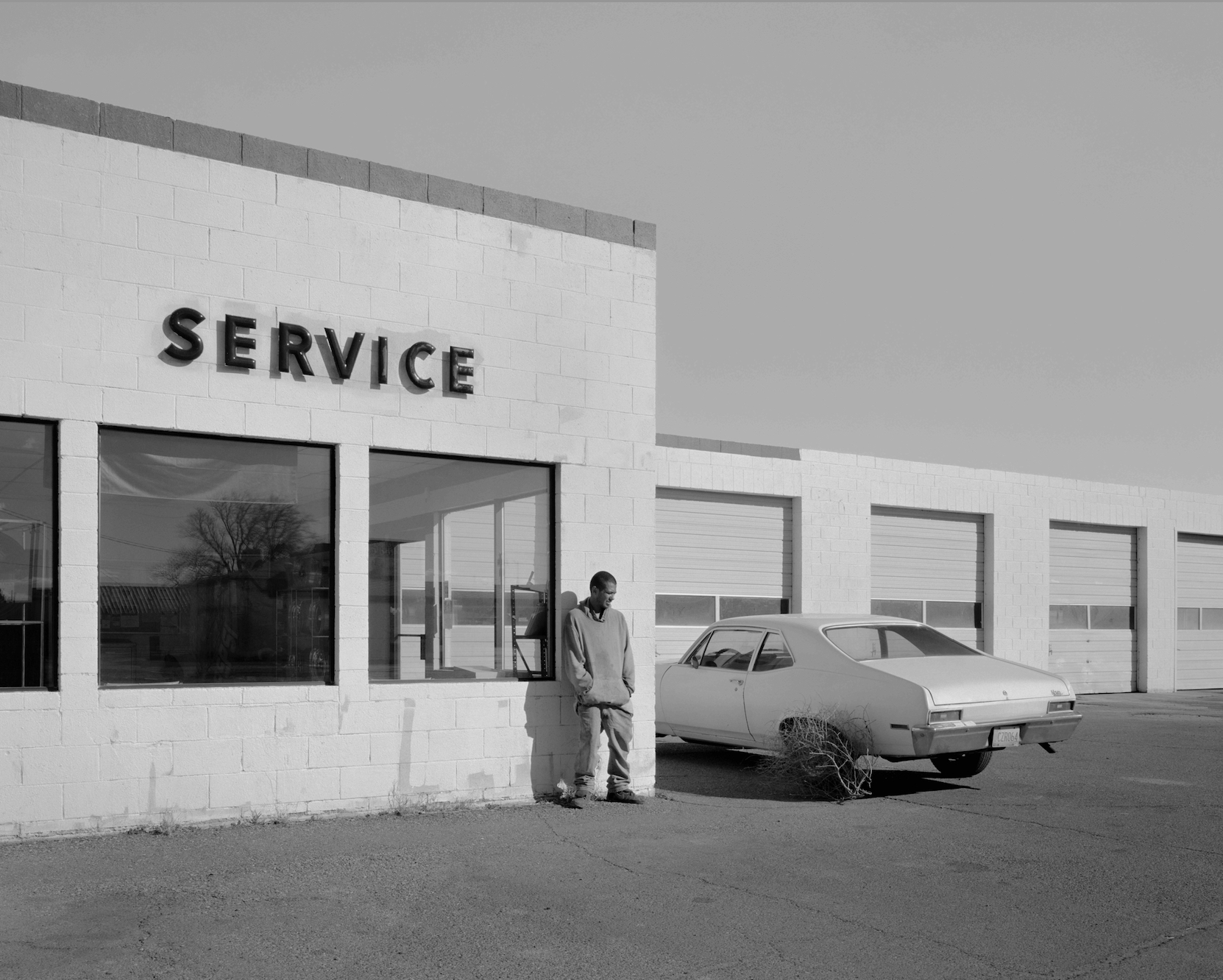生きつづける精神
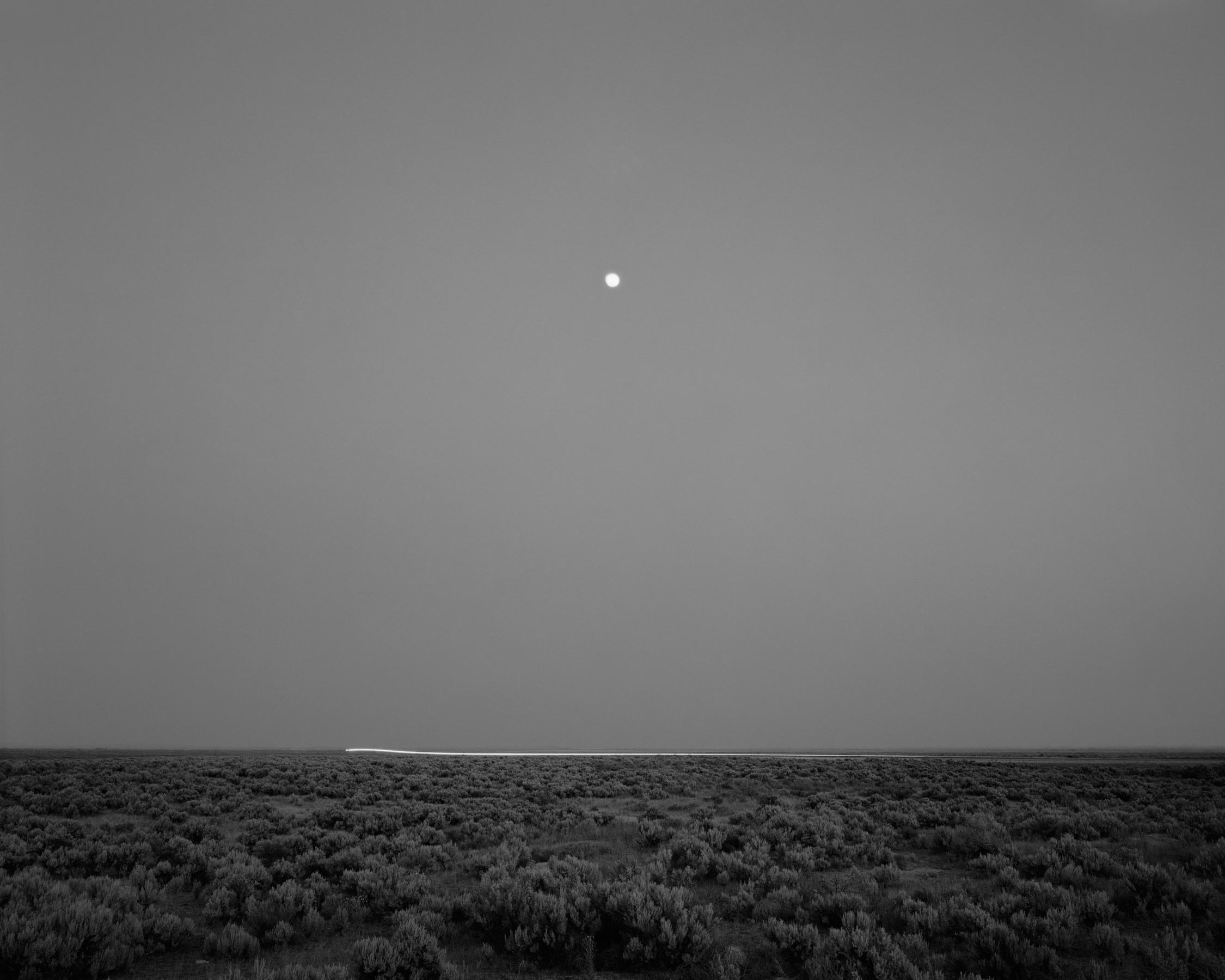
アメリカ風景写真の歴史は19世紀半ばにさかのぼる。ティモシー・H・オサリヴァン、ウィリアム・ヘンリー・ジャクソン、ジョージ・N・バーナード、アンドリュー・ジョセフ・ラッセル、カールトン・E・ワトキンスといった写真職人とも言える西部写真家たちが冒険、探検、遠征調査、記録を目的に、東から西へ西へと拡大していくアメリカ西部を撮影したことに始まる。そこで写された写真は単に記録ではなく、「芸術」として現在まで残り伝わり、後世の写真家に畏怖と共に影響を与え続けている。今回テラススクエアで展示をしてくれたブライアン・シュットゥマートは19世紀に起源をもつこのアメリカ写真の歴史を今に継承する写真家といっていいだろう。この夏ブライアンにインタビューを試みた。写真を撮り始めたティーンエイジャーの頃からこれまで発表してきた作品について、展示作品『SONS OF THE LIVING』がつくられたそのときのこと、さらに今考えていることまで、これまでの作品を振り返りつつ語ってもらった。二世紀あまりこの大陸を東から西へと移動してきた偉大なフロンティア精神が、いまもアーティストの心の深いところに鉱脈のように流れる写真に込められたものとは?
現代のアメリカに生きること
ー ブライアン、まずはあなたの生い立ちから教えてください。
Hi Bryan, Please tell me your upbringing.
私はテキサス州ヒューストン郊外で生まれ育ちました。ヒューストンは大きく広大な都市ですが、田舎でも多くの時間を過ごしました。こうした場所で育ったことが、後にアメリカの風景を見る目や写真を撮る方法に影響を与えました。父は建設業に従事し、母は4人の子供を育て上げました。私は子供の頃は、野球と90年代のロックミュージックに夢中でした。
I was born and raised outside Houston, Texas. It’s a big, sprawling city, though I also spent a lot of time in the countryside. Growing up in these places shaped how I later viewed and
photographed the American landscape. My father worked in construction and my mom stayed home with four kids. When I was a child, my passions were baseball and 90s rock music.
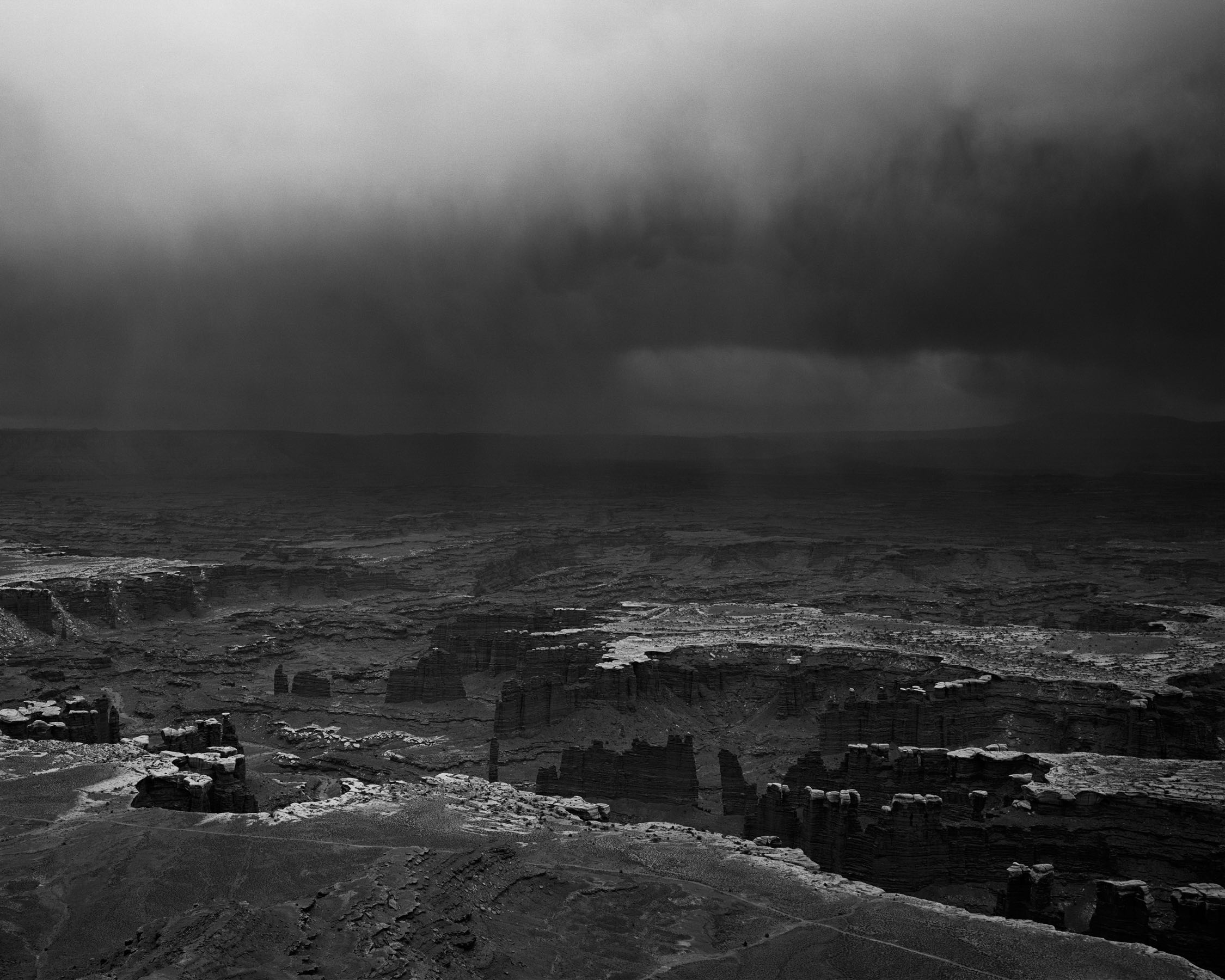
「SONS OF THE LIVING」2024 TRESPASSER。
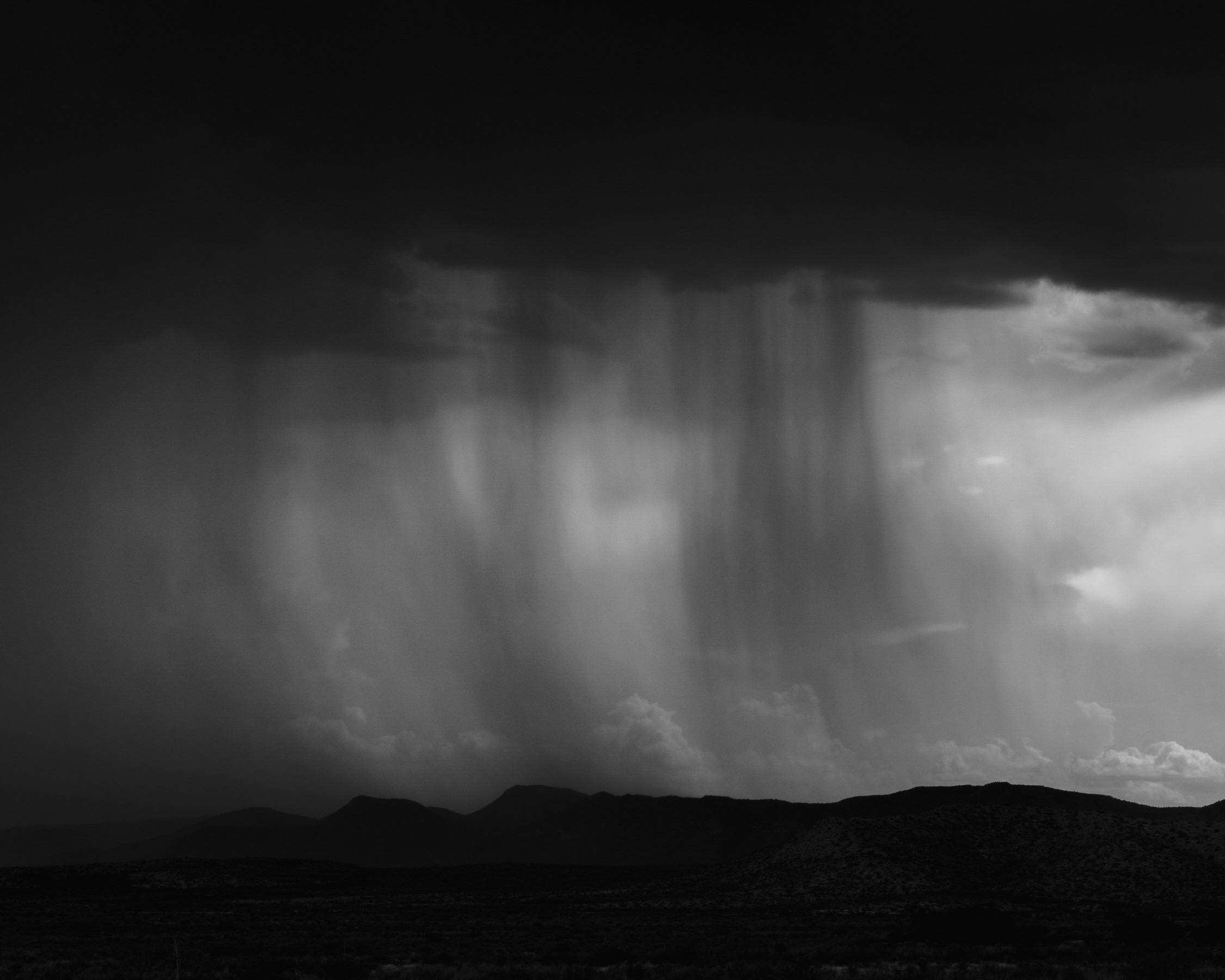
「SONS OF THE LIVING」2024 TRESPASSER。
ー 写真に興味を持ったのはいつですか?その理由を教えてください。
Please tell me why you started photography.
写真への興味は段階的に芽生えました。10代後半には既にアート、映画、音楽に興味がありましたが、写真に興味を持つようになったのはもう少し後のことでした。文系で学んでいた頃、気楽に写真を撮り始めました。白黒写真の授業を受けて写真の虜になりましたが、最初は真剣に取り組んでいませんでした。特定の写真家を具体的に挙げることはできませんが、初期の頃はウィノグランドが好きでした。初めて買ったカメラは、ミノルタの35mm一眼レフでした。
My interest in photography came in stages. In my late teens, I was already drawn to art, film,and music, but photography came slightly later. I was studying liberal arts when I began to shoot photos casually. I took a black and white photo course and fell in love with photography but I didn’t take it seriously at first. I can’t pinpoint one photographer exactly but early on I loved
Winogrand. My first camera was a cheap 35mm MInolta SLR.
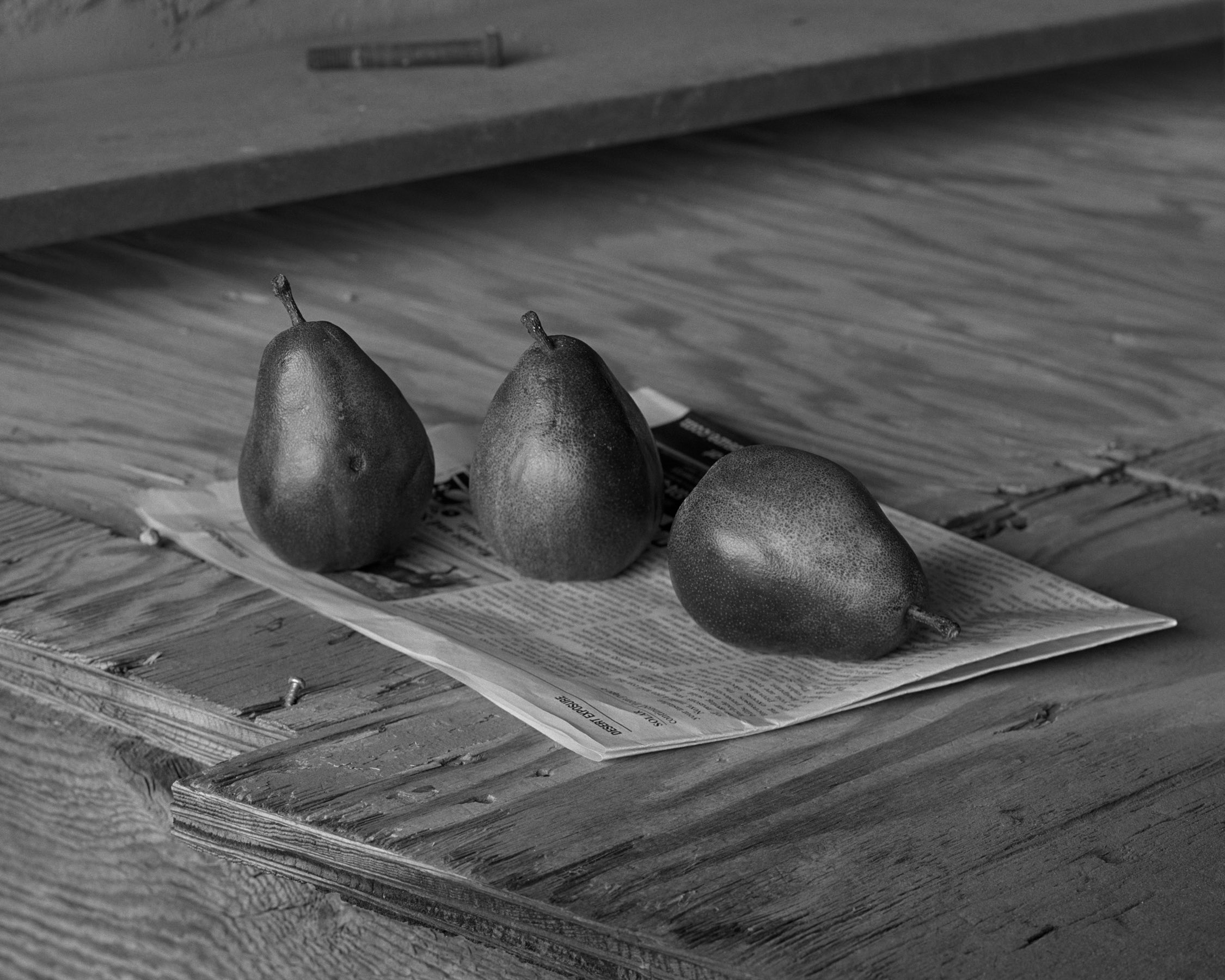
「SONS OF THE LIVING」2024 TRESPASSER。
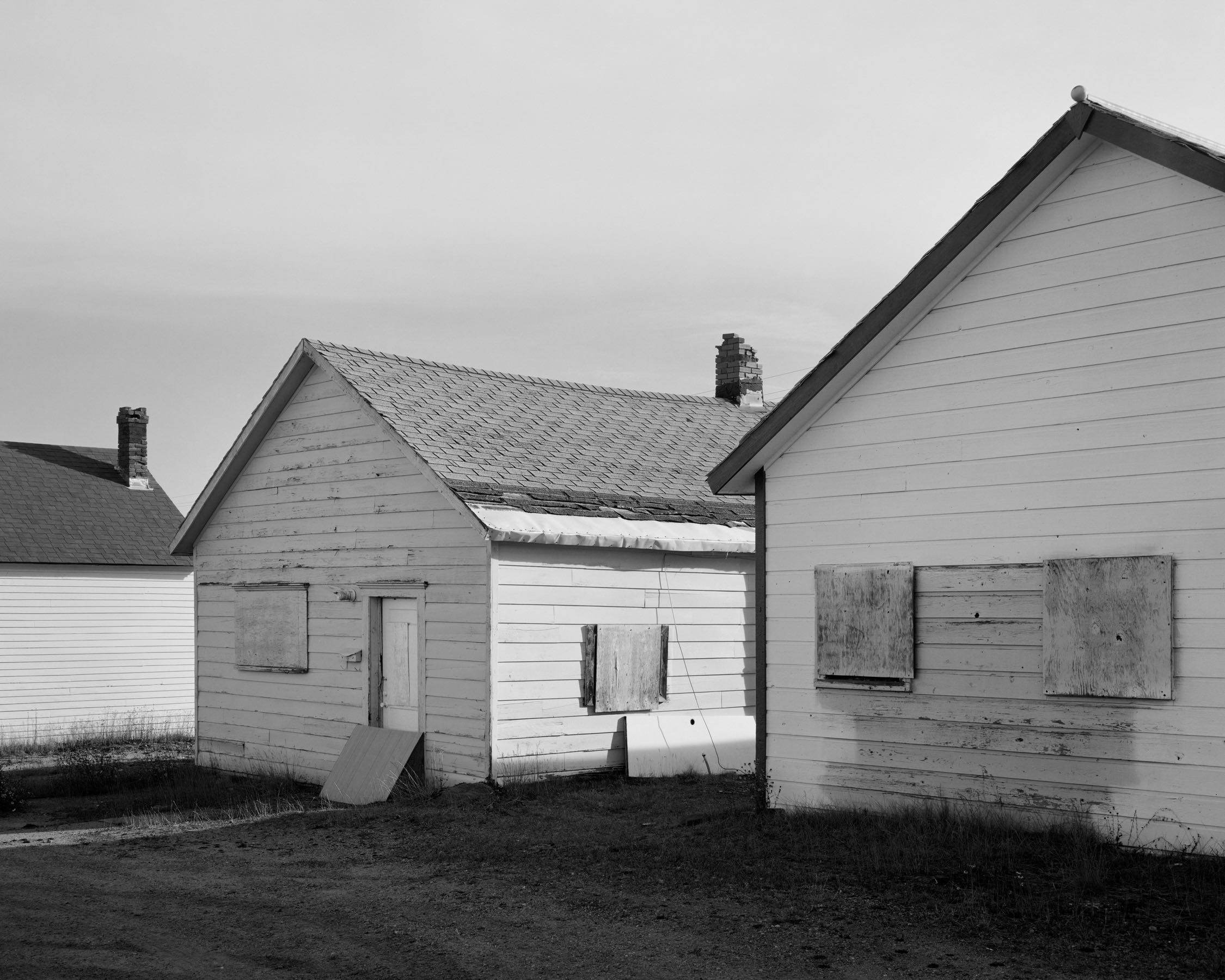
「SONS OF THE LIVING」2024 TRESPASSER。
ー 私が初めて手にしたカメラもミノルタの一眼レフカメラであることを今思い出しました。写真機を手にしてあなたの人生はどのように変わりましたか?
I just remembered that the first camera I got was also a Minolta SLR camera. How did your life change when you got a camera?
時が経つにつれ、それまで感じたことのない目的意識が芽生えはじめました。世界を探検し、見つめ直し、目にしたものに意味を見出すことができるようになりました。光、人々、風景、そして美しさに、より深く注意を払うようになりました。それは私をより現実に引き寄せ、旅をし、疑問を投げかけ、人々とつながるための理由を与えてくれました。
Over time it gave me a sense of purpose I hadn’t felt before. I could explore the world, reflect on it, and find some meaning in what I saw. I began paying closer attention to light, to people, to landscapes, and beauty. It made me more present, and also gave me a reason to travel, to ask questions, to connect with people.
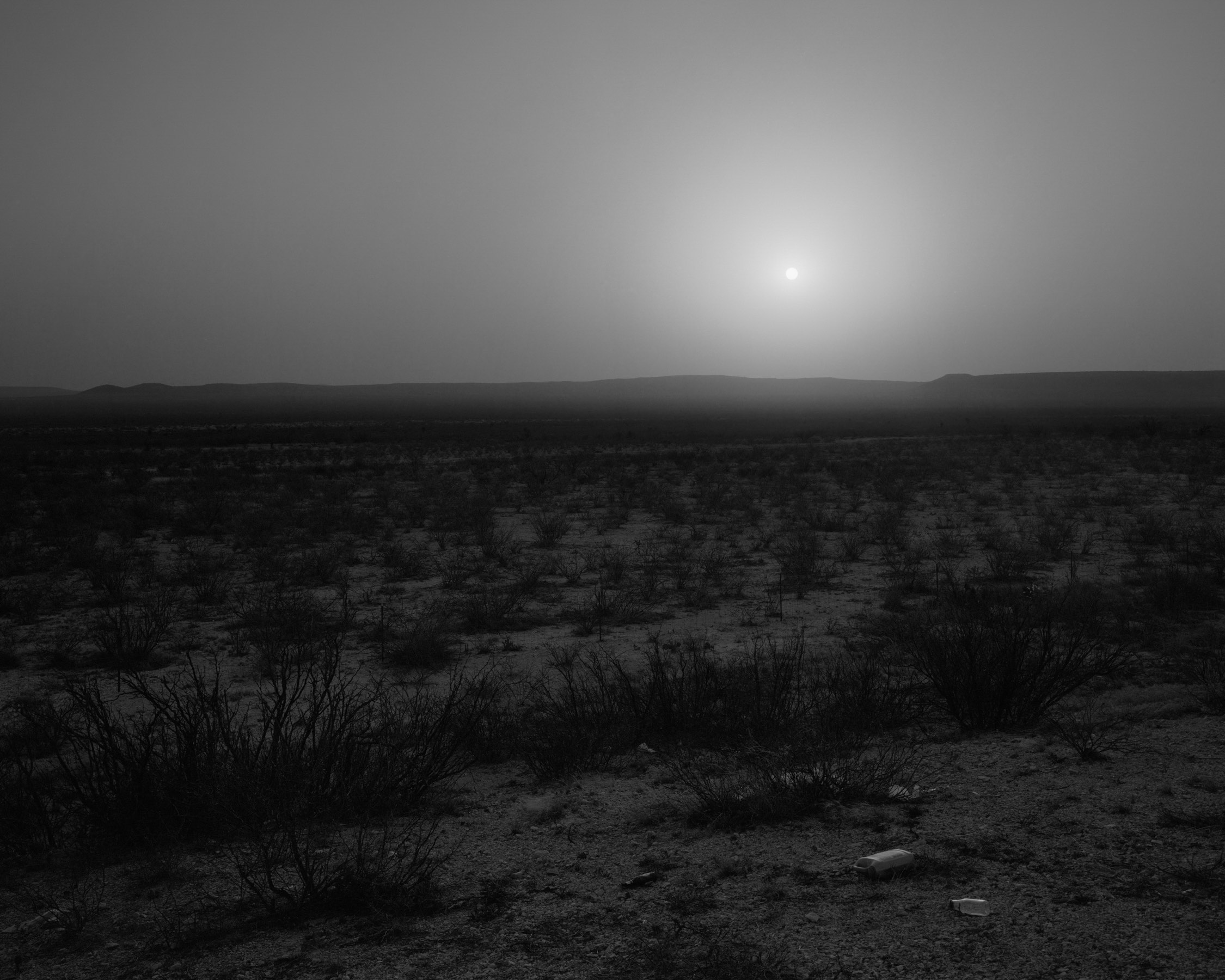
「SONS OF THE LIVING」2024 TRESPASSER。
2024年に自身の出版社であるTRESPASSERから発表されたブライアンの現在までの代表作であり、アメリカンウェストを写した作品として写真の歴史に残るであろう名作。ニューメキシコからはじまって約10年の歳月をかけて撮影された新しいアメリカのヒストリー。本インタビューでブライアンの口から語られるように、アメリカの荒野は歴史的、社会的、そして政治的に深い意味を持っているという。本作においては西部の風景とともに、そこで出会った人々のポートレートが印象深い。アメリカ写真においてもポートレートは重要なモチーフだが、ブライアンが撮影する重厚感のあるポートレートは、20世紀の偉大なポートレートを撮影したドロシア・ラングのそれと並び称されることも。
Published in 2024 by his own publishing company, TRESPASSER, this is Brian’s most representative work to date, a masterpiece that will go down in photography history as a work depicting the American West. Starting in New Mexico, the photographs were taken over a period of approximately 10 years to create a new history of America. As Brian explains in this interview, the American wilderness holds deep historical, social, and political significance. Along with the western landscapes, the portraits of the people he encountered there are also striking. Portraits are an important motif in American photography, and Brian’s profound portraits are sometimes compared to those of Dorothea Lange, one of the great portrait photographers of the 20th century.
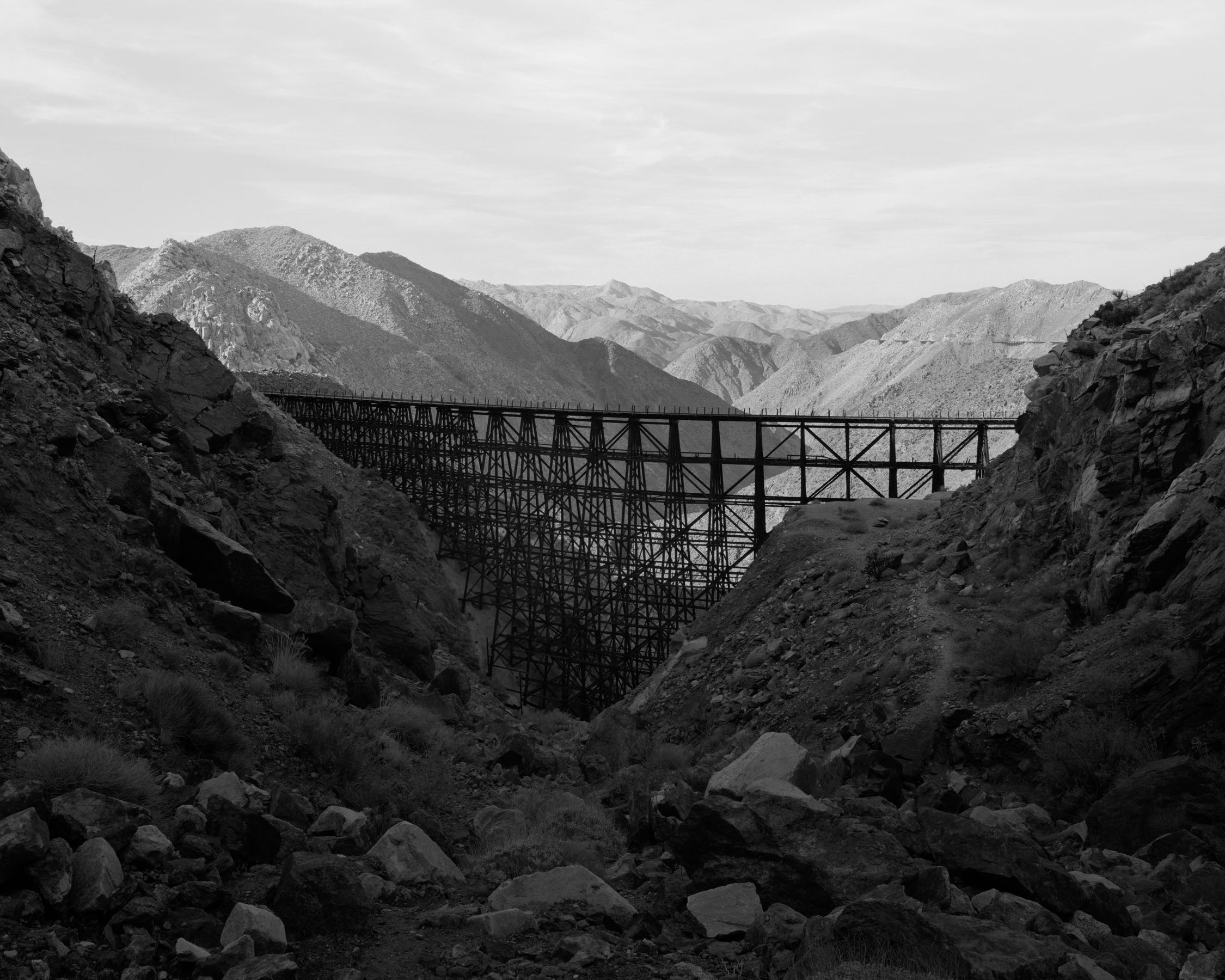
「SONS OF THE LIVING」2024 TRESPASSER。
ー その頃撮影していたのはどのような写真ですか?
What kind of photos were you taking at that time?
初期の頃は、ドキュメンタリー風の仕事、ストリートワーク、友人のポートレート、廃墟、街の人々、田舎の風景など、とにかくあらゆるものを撮影していました。
Early on, it was a lot of documentary-style work, street work, portraits of friends, abandoned buildings, people in the city, landscapes in the country – just everything to be honest.
ー あなたの生まれ故郷であるHouston,Texasはアメリカ有数の大都市のひとつとして知られています。のちに郊外の風景や都市化、自然環境の破壊、経済の衰退などをテーマに写真撮影を行うようになるあなたの作品にどのような影響をもたらしましたか?
Your hometown of Houston, Texas, is known as one of the leading major cities in the United States. How did it affect your work to later take photography with themes such as suburban scenery, urbanization, destruction of the natural environment, and economic decline?

「SONS OF THE LIVING」2024 TRESPASSER。
ヒューストンで育った私は、郊外と工業地帯の奇妙な狭間に触れました。この街はスプロール現象、ストリップモール、製油所、そしてどこまでも続く道路で特徴づけられています。また、暑くて平坦な土地柄も、精神に何らかの影響を与えました。文明と軽視、成長と放棄の対比。それが私の作品に反映されています。そして、私の憂鬱感の源でもあると思います。ヒューストンは絵のように美しい街ではありませんが、誠実な街です。
Growing up in Houston exposed me to that strange in-between of suburbia and industry. The city is defined by sprawl, strip malls, refineries, and roads that go on forever. It’s also hot and flat, which does something to the psyche. The contrast between civilization and neglect – growth and abandonment – that’s something I carry into my work. I think it’s also where my
sense of melancholy comes from. Houston is not picturesque, but it’s honest.
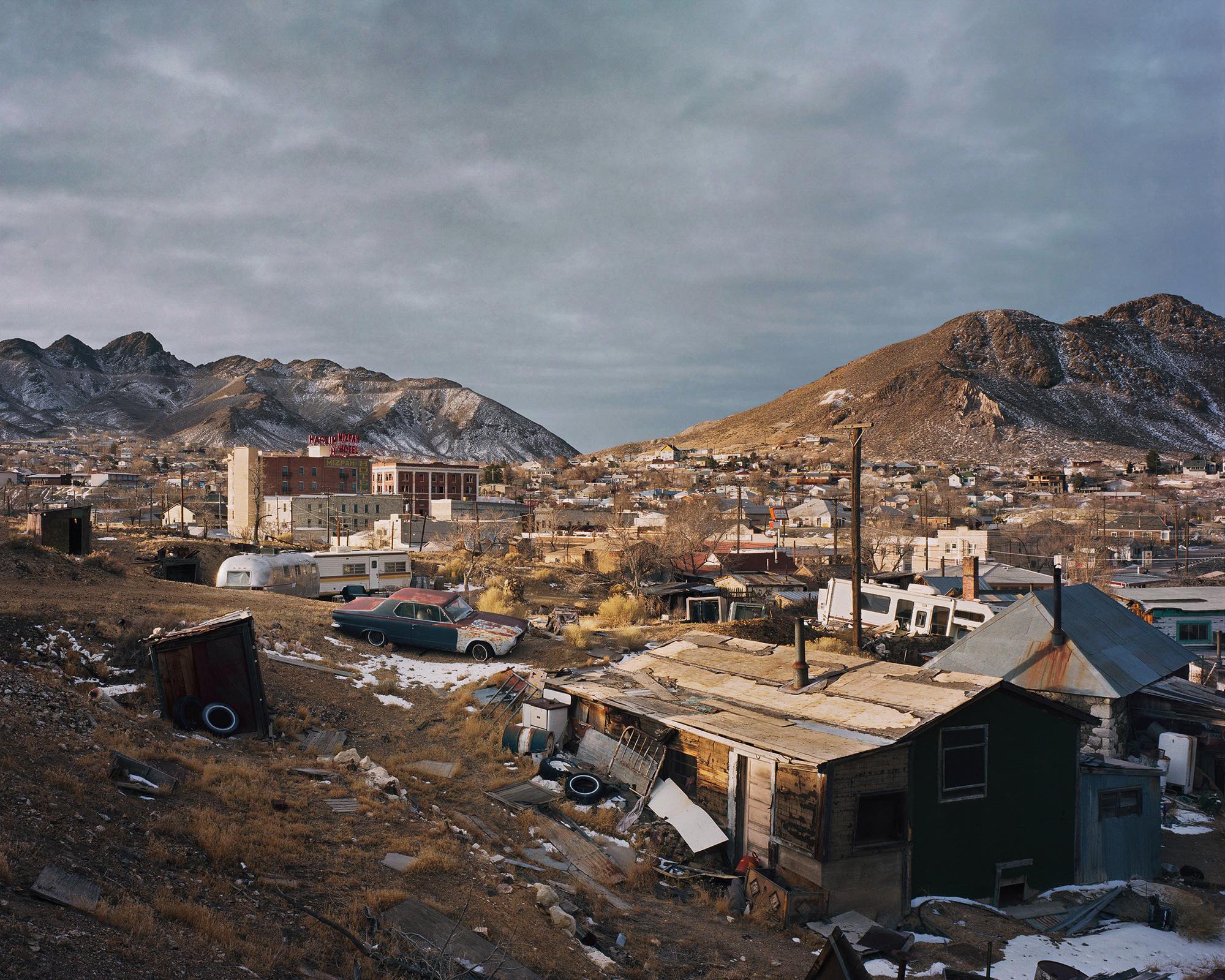
「Grays The Mountain Sends」2013 Silas Finch Foundation。
「Grays The Mountain Sends」2013 Silas Finch Foundation
2013年に発表されたブライアンの初のモノグラフ。6つの州に南北にまたがるアメリカ西部ロッキー山脈近郊の炭鉱の町で撮影された写真のシリーズ。重機で削られた山肌、山間の村落、そこで暮らす人々の肖像などが、産業遺産、生活の断片、色褪せたインテリアなどとともに大判カメラで撮影された美しいカラー作品で綴られている。建設業に従事していたブライアンの父の言葉であるかのようなオレゴン出身の作家William Kittredgeによる労働と家族について謳ったテキストが添えられる。そこで示唆されるのは、小さな町の歴史はこの国のそれとも無縁ではないということ。剥き出しのリアリズムとともに描かれているのはアメリカンドリームのレガシーともいえるものであるのかもしれない。
Bryan’s first monogram announced in 2013. The series was filmed in a coal mining town near the Rocky Mountains in the western United States, spanning six states north and south. Portraits of mountain faces, mountain villages, and people living there scraped by heavy equipment are spelled out in beautiful color works taken with large-format cameras, along with industrial heritage, fragments of life, faded interiors, etc. It is accompanied by a text about labor and family by William Kittredge, an Oregon-born writer who appears to be the words of Bryan’s father, who was working in the construction industry. Therefore, it is suggested that the history of a small town is not unrelated to this country. What is depicted with bare realism may be the legacy of the American Dream.
ー パンクロックとスケボーは若い頃にあなたがのめり込んだものでした。パンクバンドのメンバーとして活動していたことがあると私はあなたのインタビューで読んだことがあります。あなたはそこでどのような活動をしていましたか?
Punk rocks and skateboarding were something you were into when you were young. A member of a punk band? I’ve read in your interview that you’ve been active as. What kind of activities did you do there?
確かにそうです。私は高校と大学時代はパンクバンドで演奏していました。25歳くらいまでは、ほとんど毎年夏にツアーに出ていました。それは友達と旅行に行って楽しむ最高の言い訳でした。バンドをやっていると、レコーディング、ツアーのブッキング、グッズ販売など、実際にはたくさんの責任が伴います。DIYの精神と、自分の道を切り開く方法を学びました。
I played in punk bands in high school and college. I toured most summers until I was 25 or so. It was a great excuse to travel with friends and have fun. Being in a band actually comes with a lot of responsibilities – recording, booking tours, selling merch, etc. I learned about DIY and how to carve your own path.
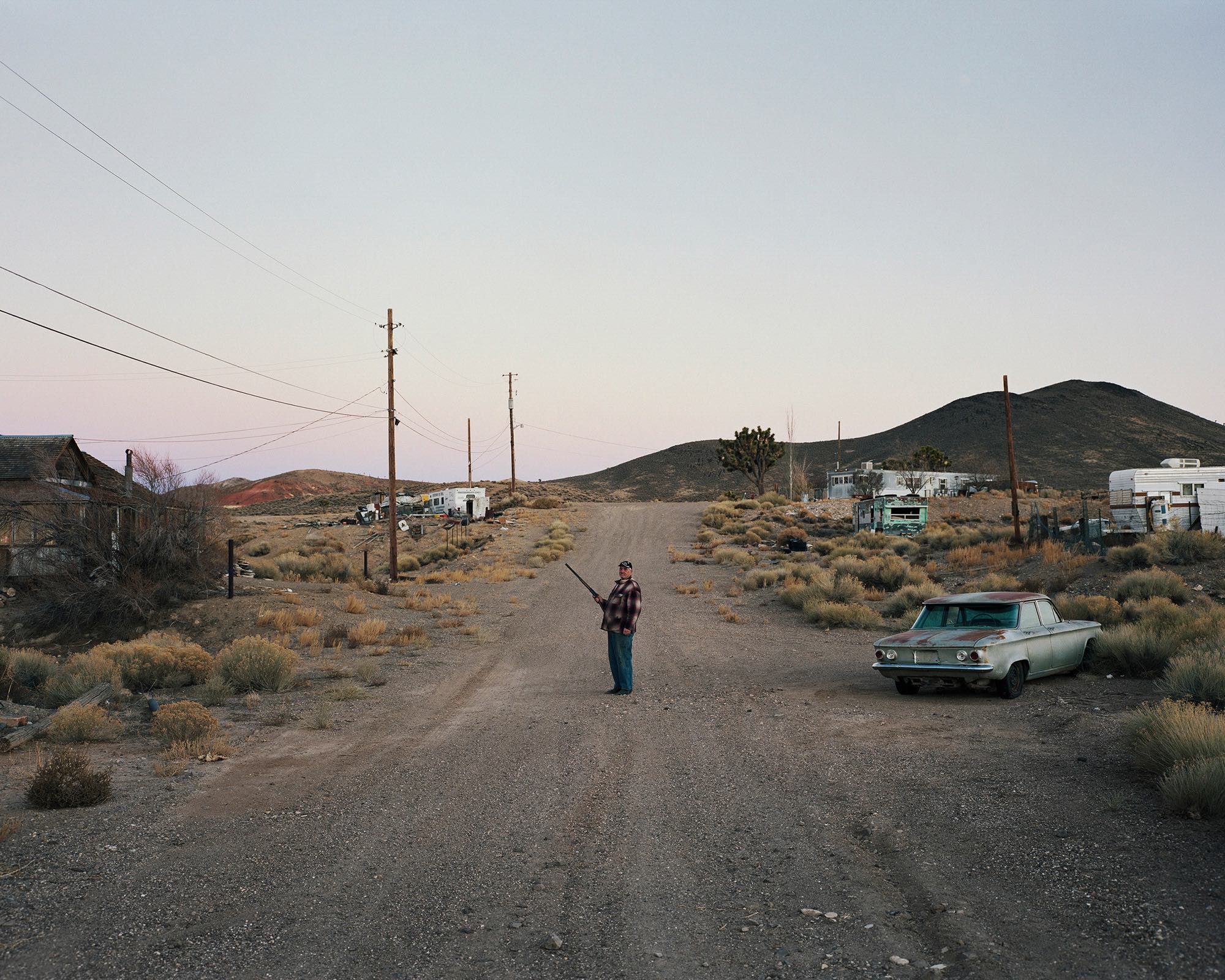
「Grays The Mountain Sends」2013 Silas Finch Foundation。
ー あなたは写真に加えて、音楽や映画、文学好きとしても知られています。なかでも映画はあなたの作品の背景にある重要な要素であると私は考えます。
私もフランスのNouvelle Vagueの映画や、『The Strawberry Statement』、『Five Easy Pieces』、『Vanishing Point』などのアメリカの1970年前後のNew Hollywoodの絵作りに大きな影響を受けています。あなたがPeter Bogdanovichの作品などから影響を受けていることはよく知られています。それらの作品にいつあなたは出会い、どのようなところにあなたは共感しましたか?
In addition to photography, you are also known as a music, film, and literature lover. Among other things, I think movies are an important element behind your work.
I also made French Nouvelle Vague movies, “The Strawberry Statement”, “Five Easy Pieces”, “Vanishing Point” in the United States in 1970 It has been greatly influenced by the painting of New Hollywood before and after. It is well known that you are influenced by the work of Peter Bogdanovich and others. When did you come across those works, and what did you sympathize with? ( In fact, it seems that you also tried to make a movie in the early stages of your creative activities)
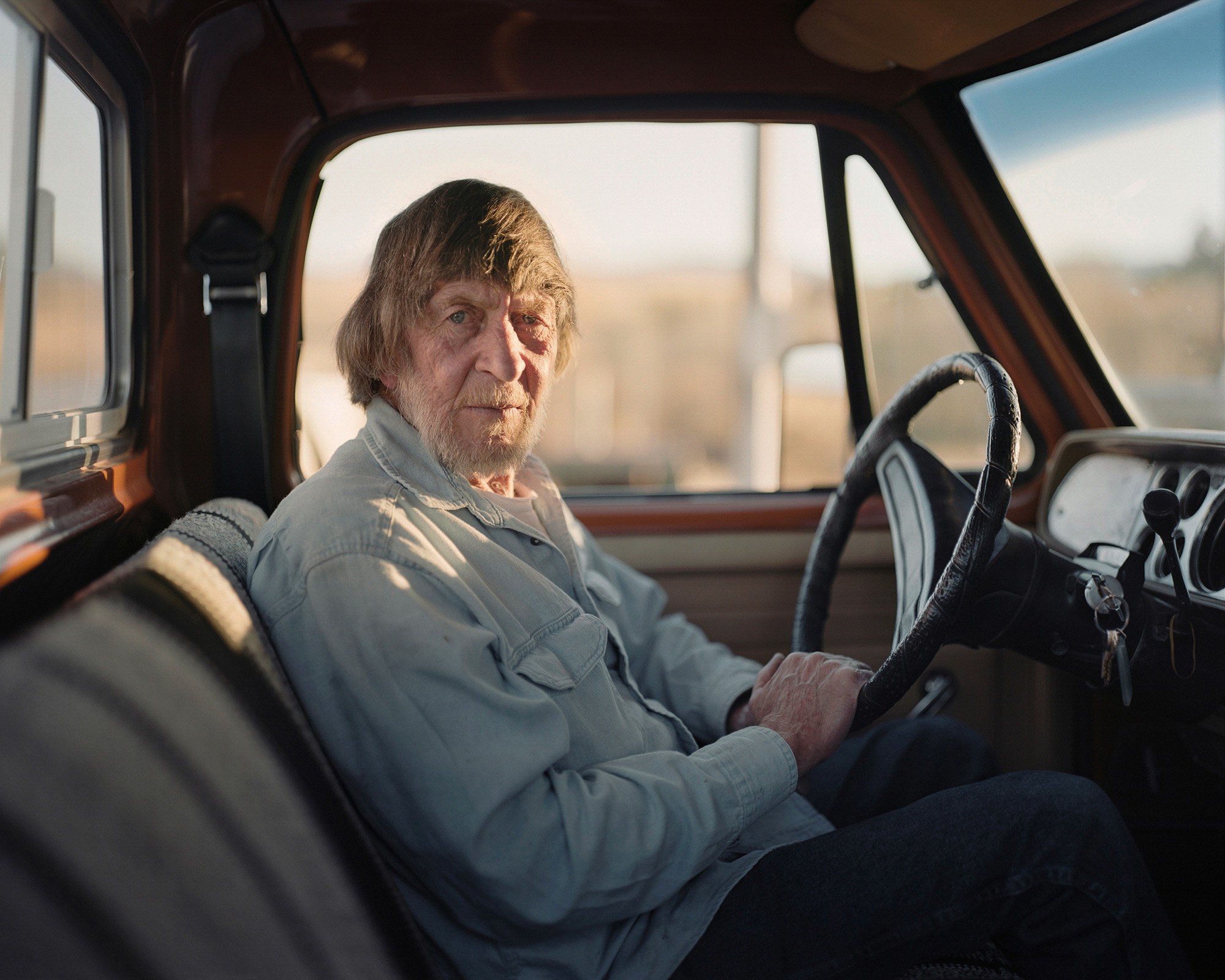
「Grays The Mountain Sends」2013 Silas Finch Foundation。
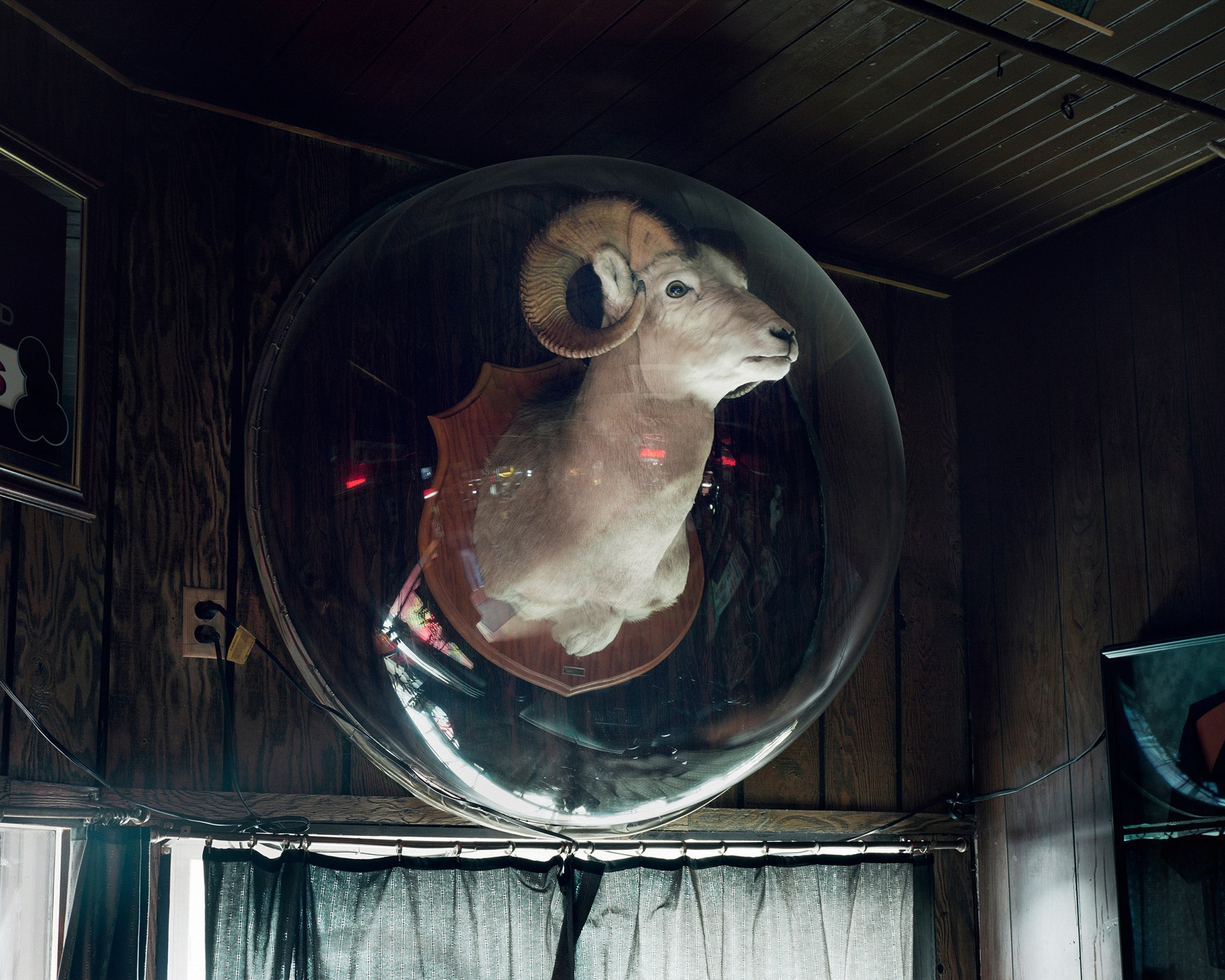
「Grays The Mountain Sends」2013 Silas Finch Foundation。
10代後半から20代前半にかけて、私はそれらの映画に出会いました。ヨーロッパのアートシネマもそうですが、それ以上に、1970年代の田舎を舞台にしたアメリカ映画が私にとって大きな意味を持っていました。『トゥー・レーン・ブラックトップ』、『テンダー・マーシーズ』、『バッドランド』、『ペーパー・ムーン』、そして数々の西部劇。それらは、私が見覚えのある、迷い、落ち着きのないアメリカの魂に語りかけてきました。孤独、男らしさ、疎外感、そして開かれた道。それらは今日にも通じるものです。かつては映画を作りたいという夢もありましたが、写真の方が、同じ雰囲気をより素早く、より直接的に表現する方法を提供してくれました。それでもなお、映画は、私がイメージ、物語、シーケンス、そして雰囲気について考える上で、今でも大きな影響を与えています。
I discovered those films in my late teens and early twenties. The European art cinema, but more importantly the rural 1970s American films meant a lot to me – Two Lane Black Top, Tender Mercies, Badlands, Paper Moon, and many westerns. They spoke to a lost, restless American soul I recognized. There was loneliness, masculinity, alienation, and the open road – things that echoed into today. I had some dreams of making films, but photography gave me a quicker, more direct way to express the same mood. Still, cinema remains a huge influence in how I think about images, narrative, sequencing, and atmosphere.
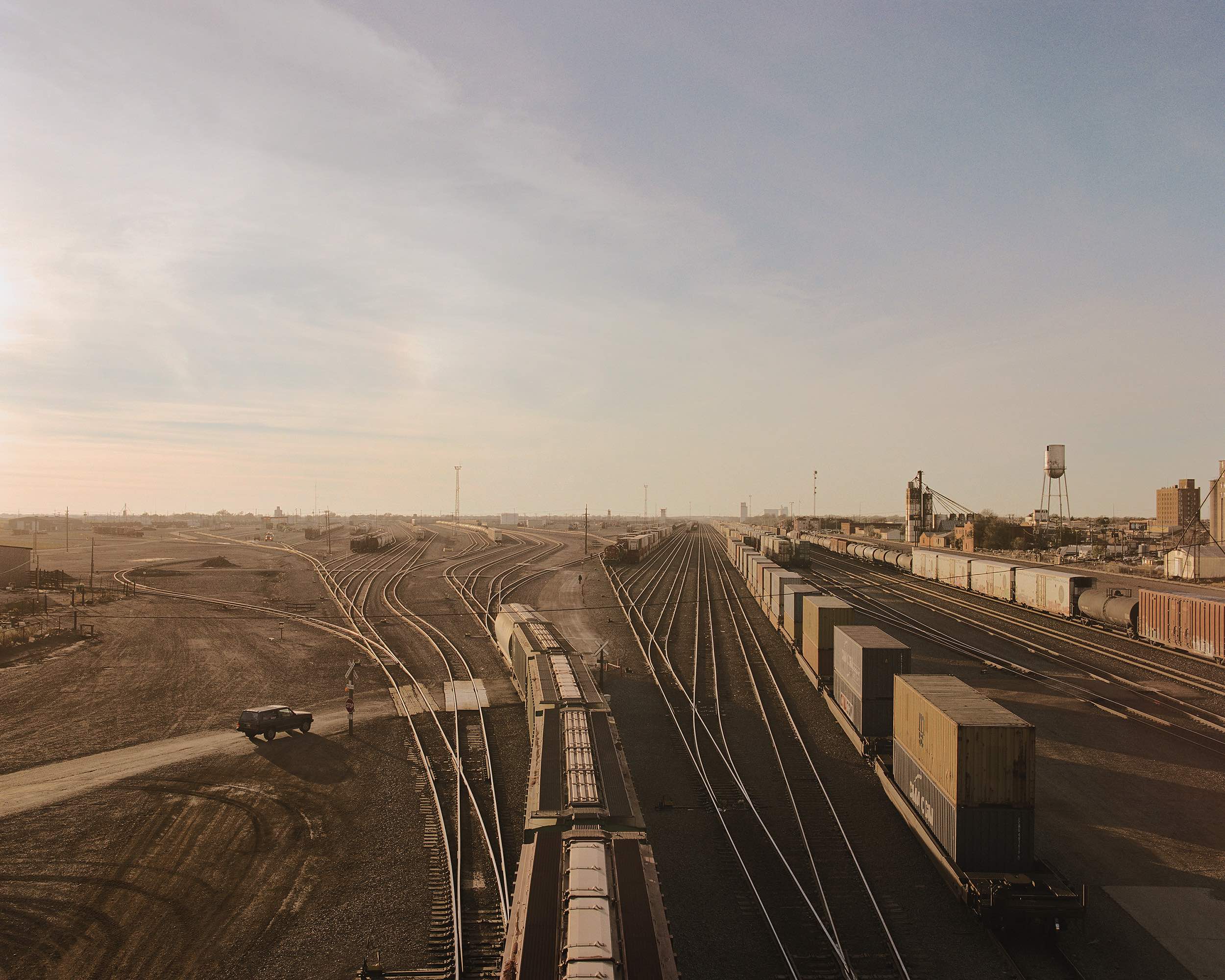
「HEARTLAND」2011
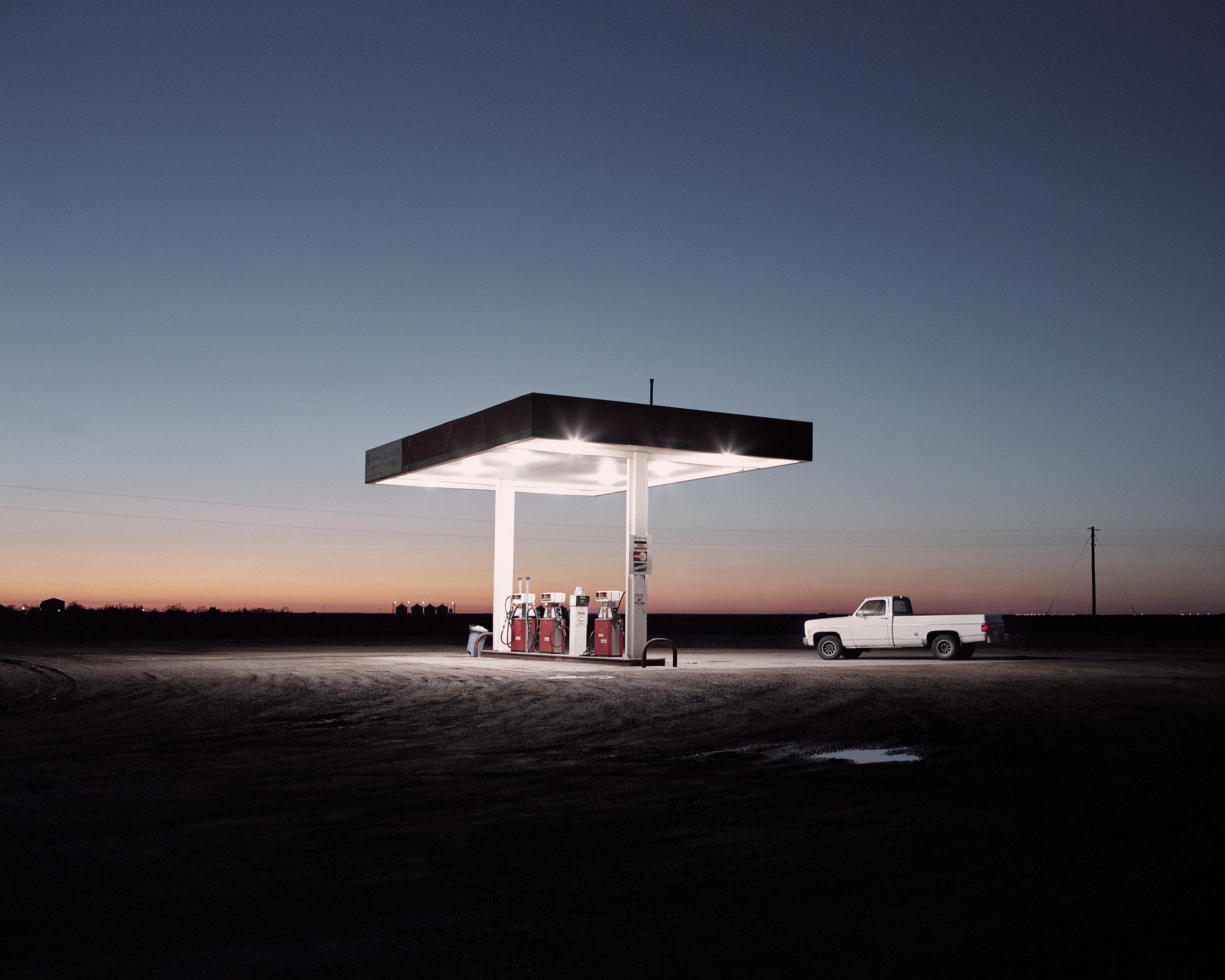
「HEARTLAND」2011
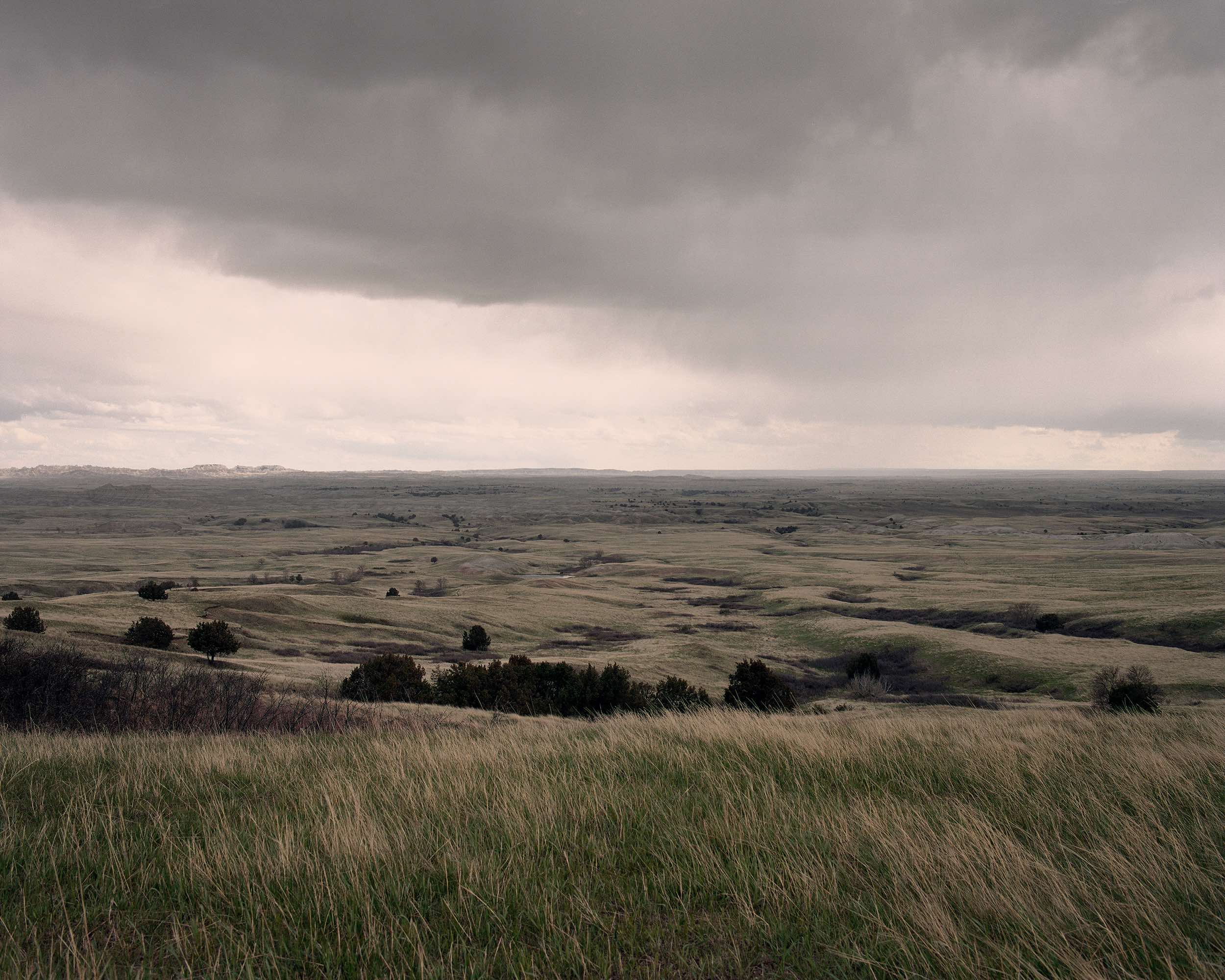
「HEARTLAND」2011
アメリカ史における「ザ・ウェスト」という文脈
ー『HEARTLAND』、『WESTERN FRIEZE』といったまだ本になっていないあなたの初期のシリーズについて、それがどのようなテーマをもって撮影されたものであるか少し教えてください。
Please tell me a little about your early series that have not yet been booked, such as “Heartland” and “Western Frieze”, and what theme it was filmed with.
これらは初期のプロジェクトでお互い非常によく似ていました。『HEARTLAND』はグレートプレーンズを舞台に、小さな町やアメリカの繁栄の名残を撮影しました。『WESTERN FRIEZE』はほぼ同じ内容ですが、ロッキー山脈西部と南西部の砂漠を舞台としています。どちらも当時私が抱いていたある場所を理解したいという欲求、そして社会情勢を反映しつつ、日常の中に詩情を見出したいという欲求に突き動かされていました。
Those were early projects and they were really similar. “Heartland” was about the Great Plains, photographing small towns and the remnants of American prosperity. “Western Frieze” was pretty much the same thing but set in the Rocky Mountain West and southwest deserts. Both were driven
by a desire to understand a place, to find poetry in the everyday while reflecting the social landscape.
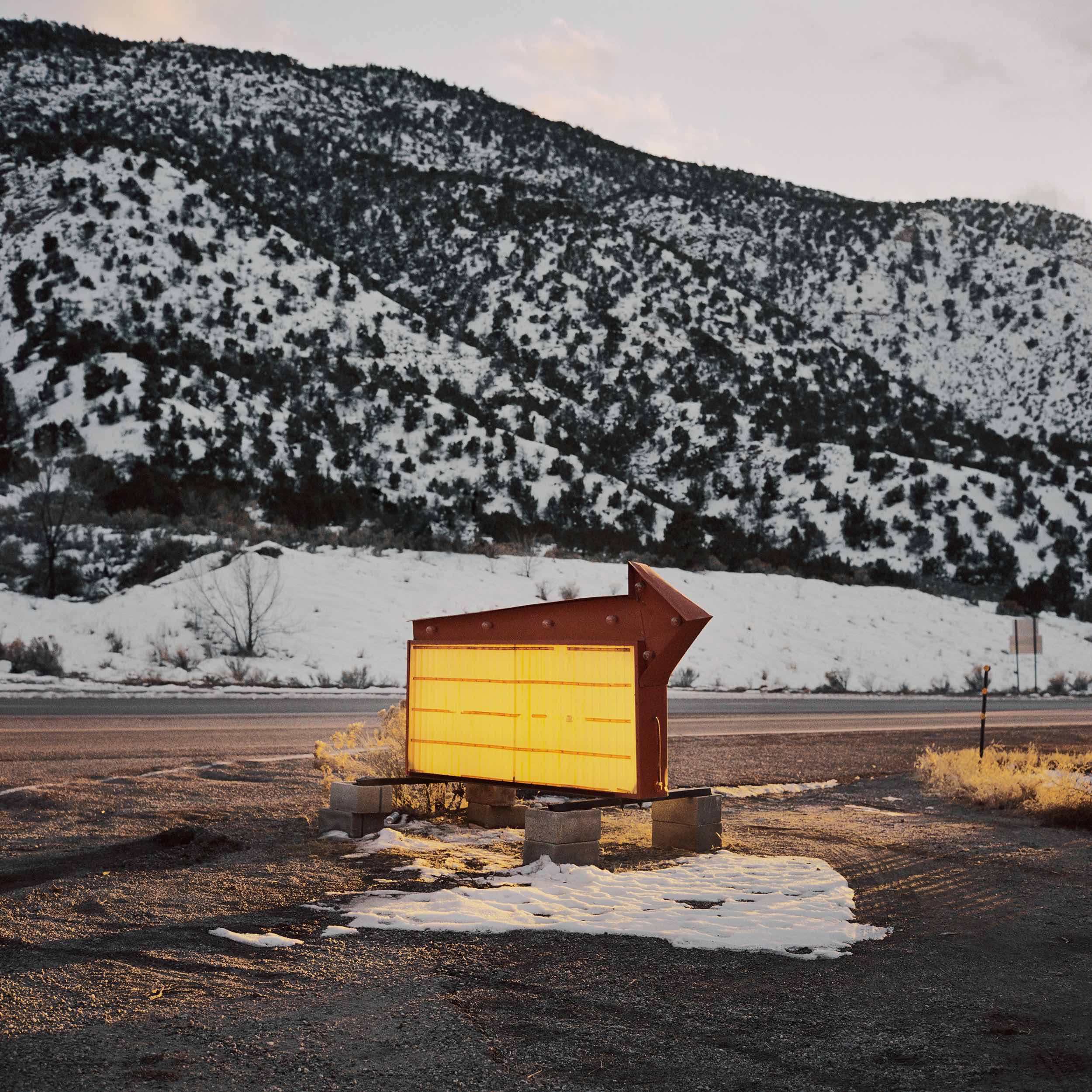
「Western Frieze」2011
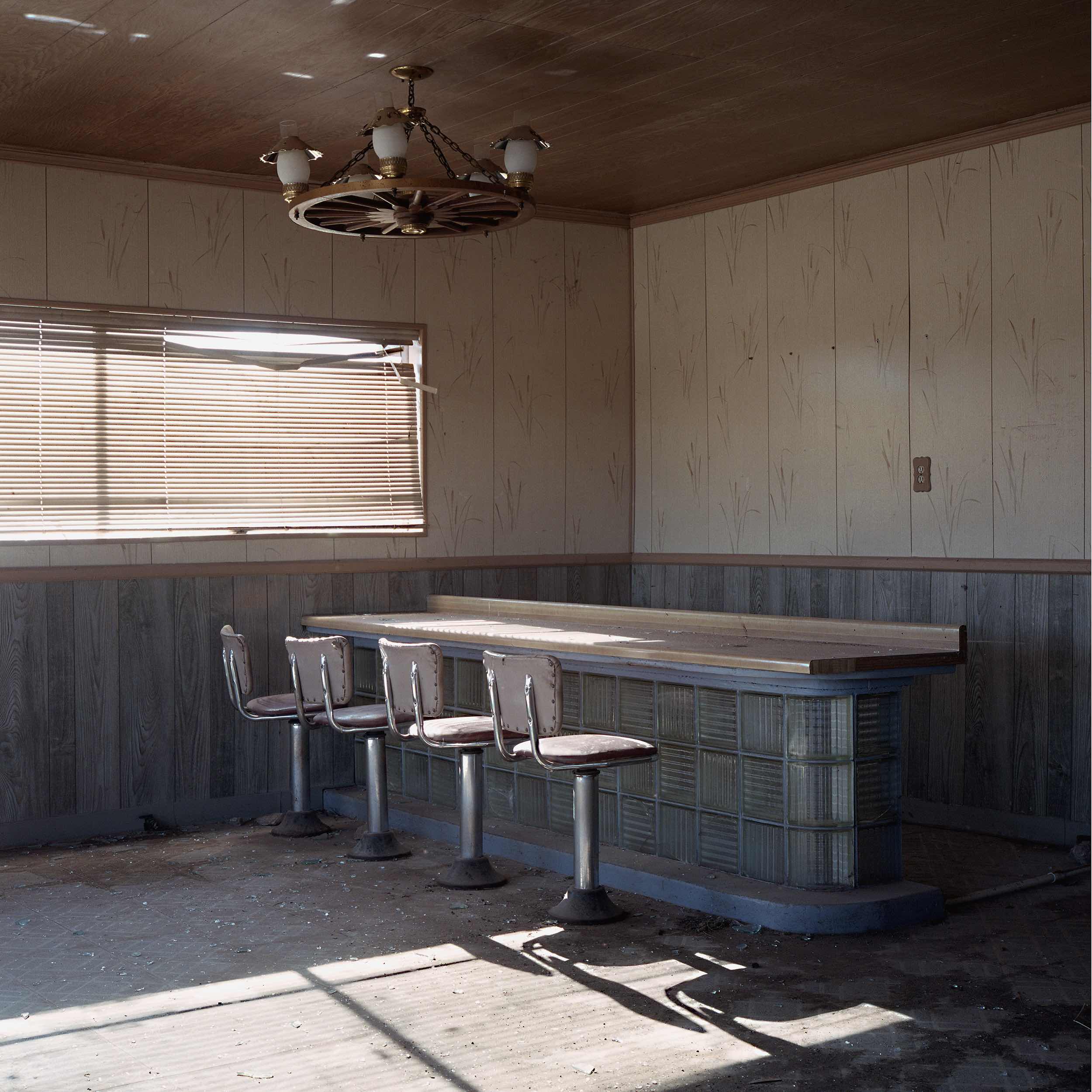
「Western Frieze」2011
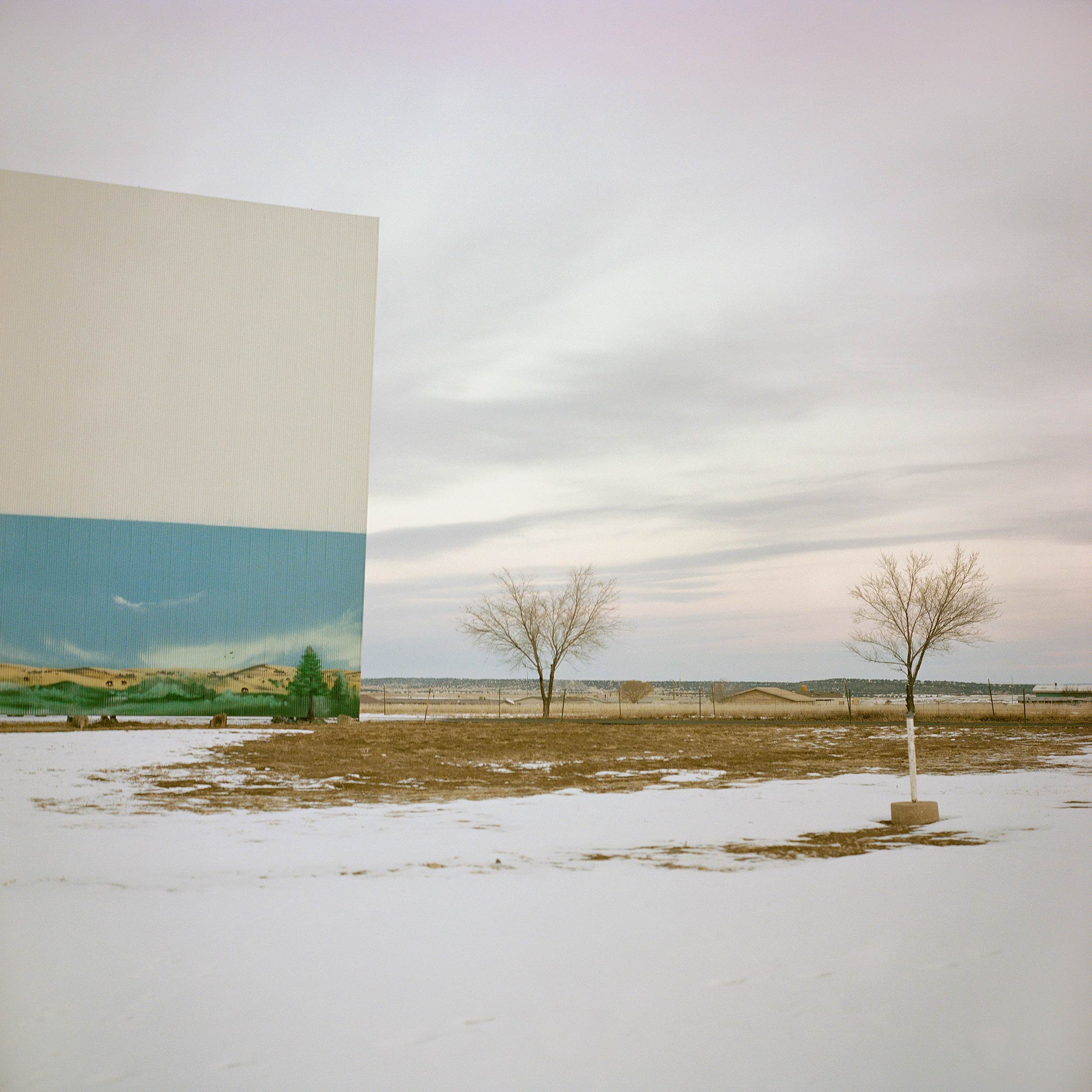
「Western Frieze」2011
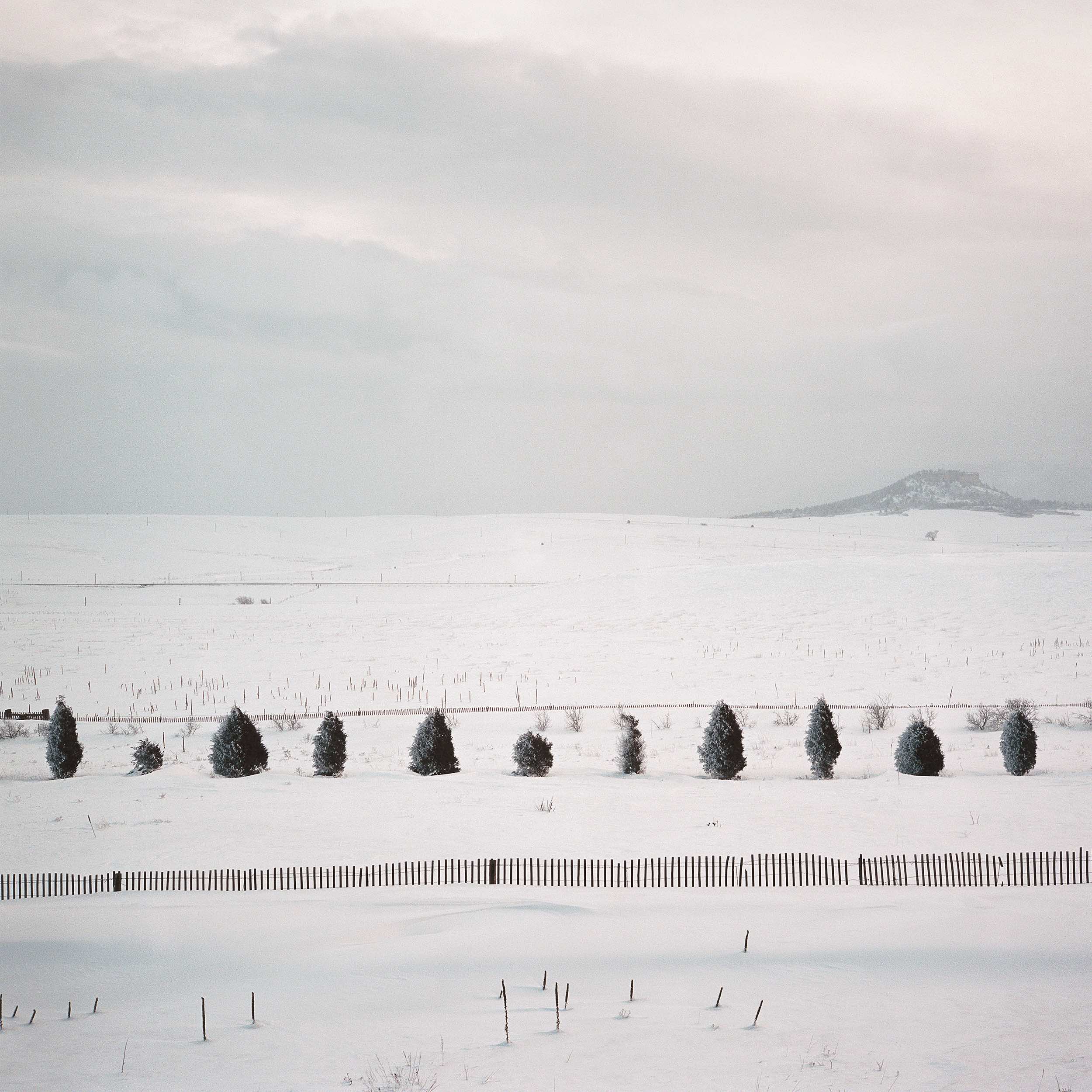
「Western Frieze」2011
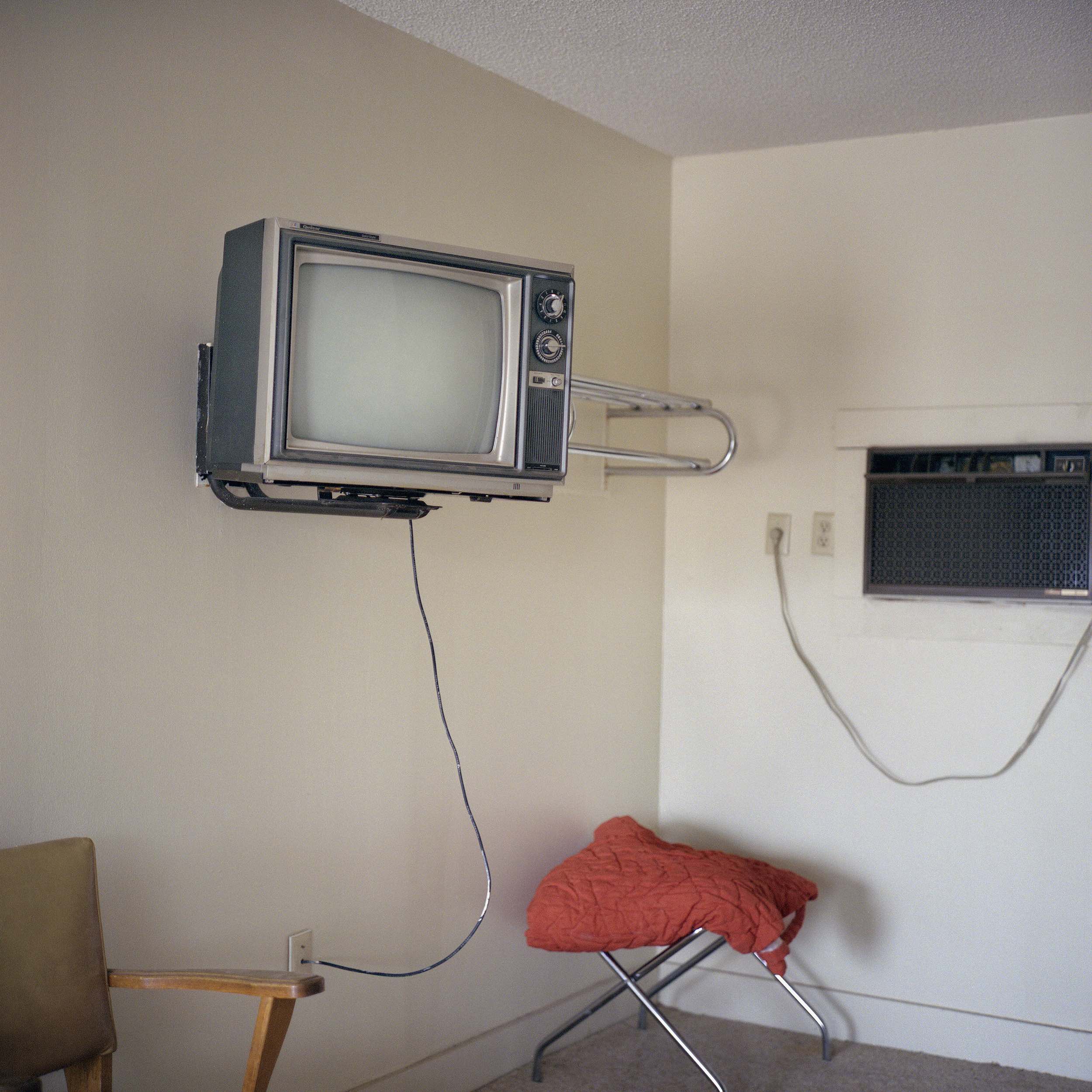
「Western Frieze」2011
ー あなたがアメリカ西部の景色を撮るようになったきっかけを教えてください。あなたがアメリカの歴史にも接続するその壮大なロードトリップに着手した理由を教えてください。
Please tell us about your next work, “Mother of Dogs”, which was made during the Covid-19 pandemic.
Please tell me why you started taking photography of the scenery of the American West. Tell me why you embarked on that epic road trip that also connects American history.
西部は常にアメリカ人の想像力の中で大きな存在でした。それは神話や自由の理念と結びついていますが、同時に失敗や憧れとも結びついています。おそらく私はその矛盾に惹かれたのでしょう。西部を長距離ドライブで旅し始めた頃は、その広大さを追い求めていましたが、やがて社会経済的な困難も、一市民として語りたいと思うようになりました。
The West has always loomed large in the American imagination. It’s tied to myth and ideas of freedom – but also to failure and longing. I suppose I was drawn to that contradiction. When I first started taking long road trips through the West, I was chasing that feeling of vastness, but soon the social and economic difficulties were also something I wanted to comment on as a citizen.
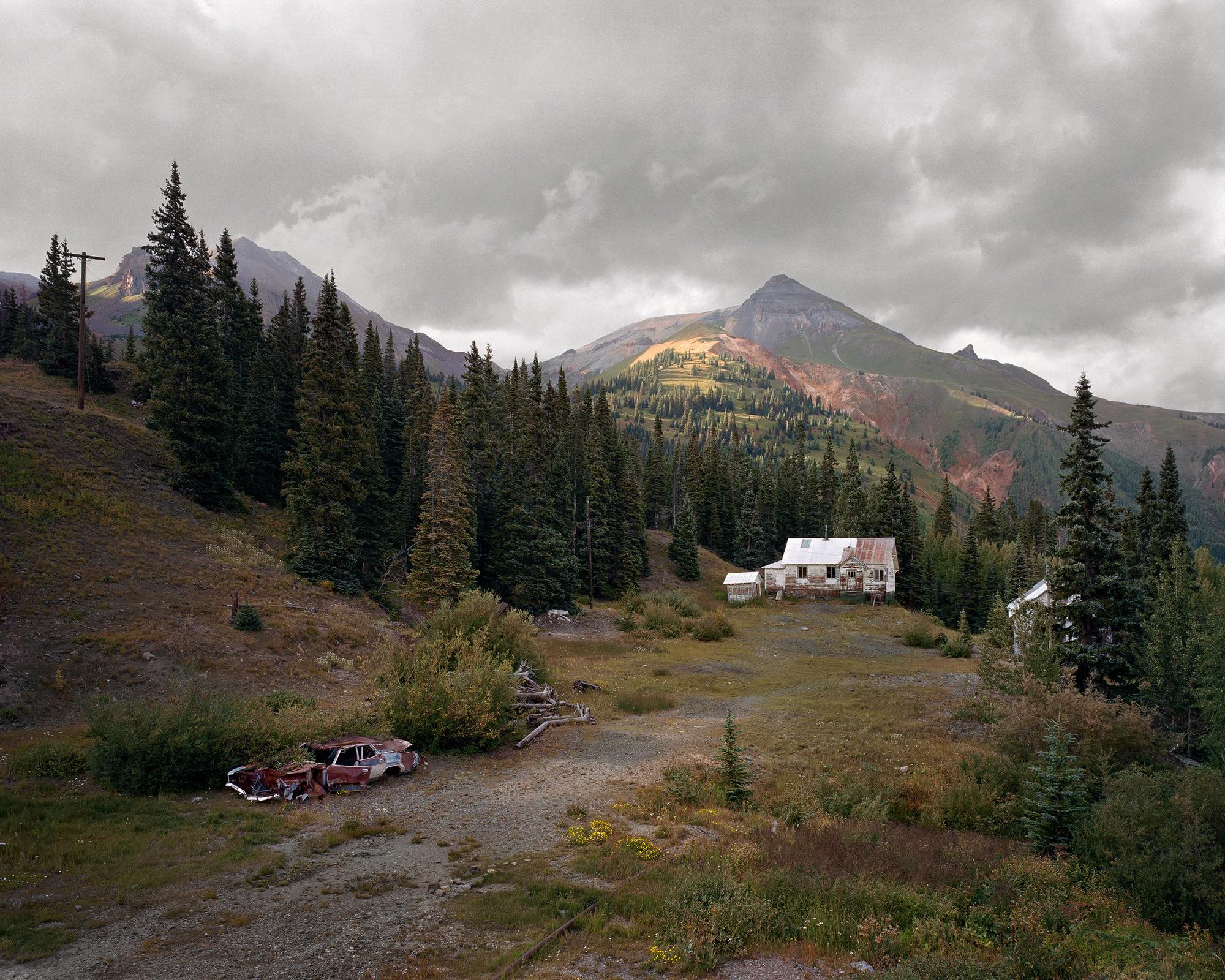
「Grays The Mountain Sends」2013 Silas Finch Foundation。

「Grays The Mountain Sends」2013 Silas Finch Foundation。
ー 2013年に出版されたあなたの最初の本『Grays the Mountain Sends』は、アメリカ西部の小さな町と鉱山コミュニティの肖像画でした。日本でもこの作品であなたのことを知った人も多いです。この作品はあなたがモンタナに住んでいる時に撮られました。この作品はあなたの作家人生の中でも大きな転換点となりましたが、私のこの解釈は正しいですか?この作品を作ることを考えた時にあなたはどんなことを考えていましたか?
Your first book, “Grays the Mountain Sends”, published in 2013, was a portrait of a small town and mining community in the American West. Many people in Japan have learned about you through this work. This work was taken when you lived in Montana. This work was a major turning point in your writer’s life, but is my interpretation correct? What were you thinking about when you thought about making this work? ( Thoughts for your father who worked in construction, how did you get to know the Montanan poet Richard Hugo, where you are photographed here, and how did you meet people?)
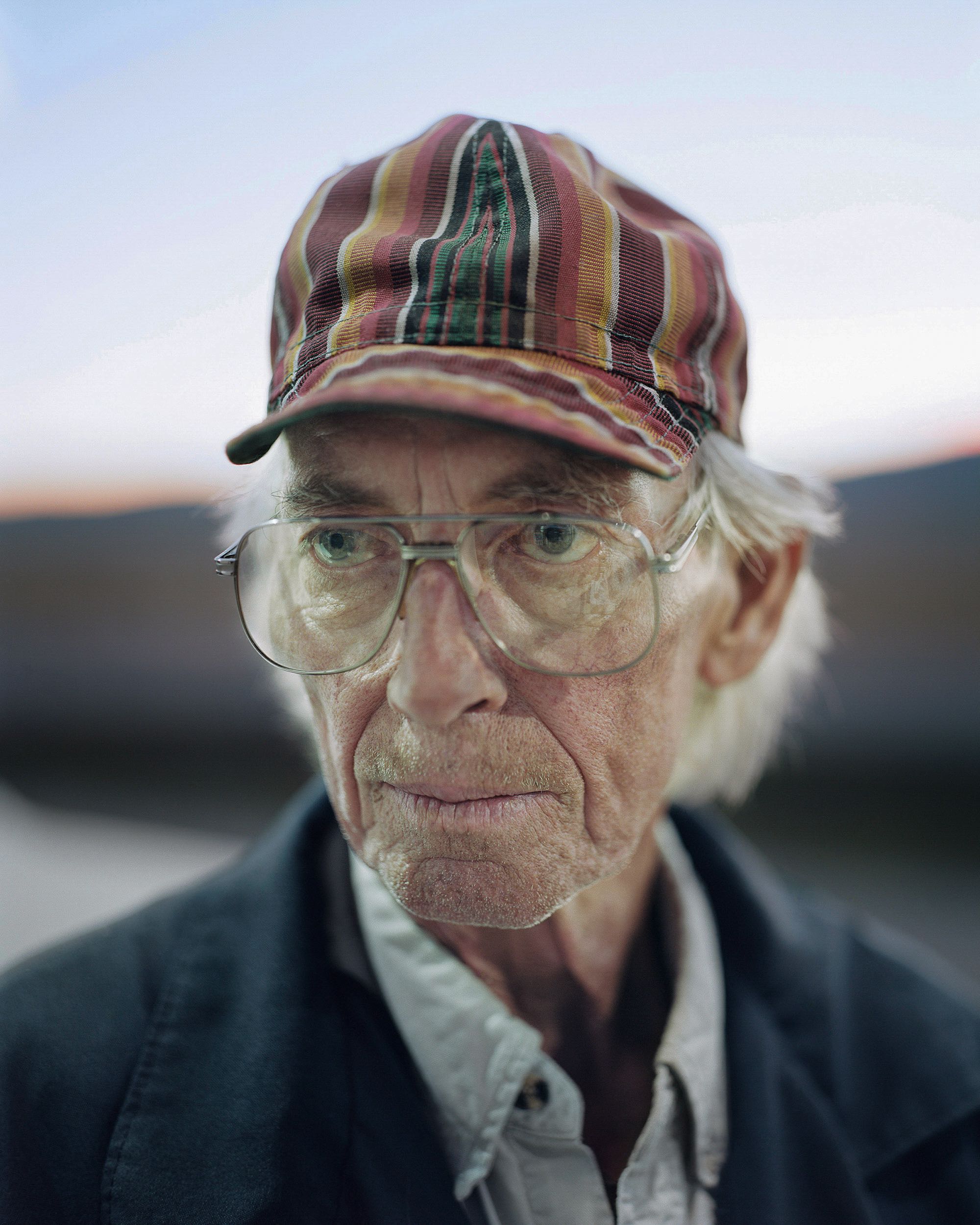
「Grays The Mountain Sends」2013 Silas Finch Foundation。
はい、それが転機でした。大学院で美術学修士号(MFA)を取得しながら作品を制作していたので、経済的にも精神的にも写真にかなり力をかけることができました。その頃は地質学を学んでいたガールフレンドとモンタナ州に住んでいました。そこでリチャード・ヒューゴの詩や、リチャード・フォード、ウィリアム・キトリッジといった作家たちの短編小説に出会い、深い影響を受けました。ヒューゴの詩に描かれた小さな町やバー、モンタナの風景は、まさに私が見ていたものそのものでした。『Grays the Mountain Sends』は社会的なドキュメンタリー作品であると同時に、非常に個人的な作品でもあります。男性、孤独、労働、そして風景について描いています。ある意味、これは私が幼い頃に建設業で働いていた父へのオマージュでもあります。父は、私が今の世界の見方をするように導いてくれました。
Yes, that was a turning point. I made the work during grad school as I got my MFA, so I was very invested financially and emotionally in photography at that point. I was living in Montana with my girlfriend who was studying geology. I came across Richard Hugo’s poetry, as well as short fiction by Richard Ford, William Kittredge, and others who had a profound impact on me. Hugo’s poems aboutsmall towns, bars, and the Montana landscape mirrored what I was seeing. Grays is a social documentary project but also a deeply personal book. It’s about men, solitude, labor, and landscapes. In some ways, it was an homage to my father, who worked in construction when I was young. He helped me see the world the way I do.

「Grays The Mountain Sends」2013 Silas Finch Foundation。
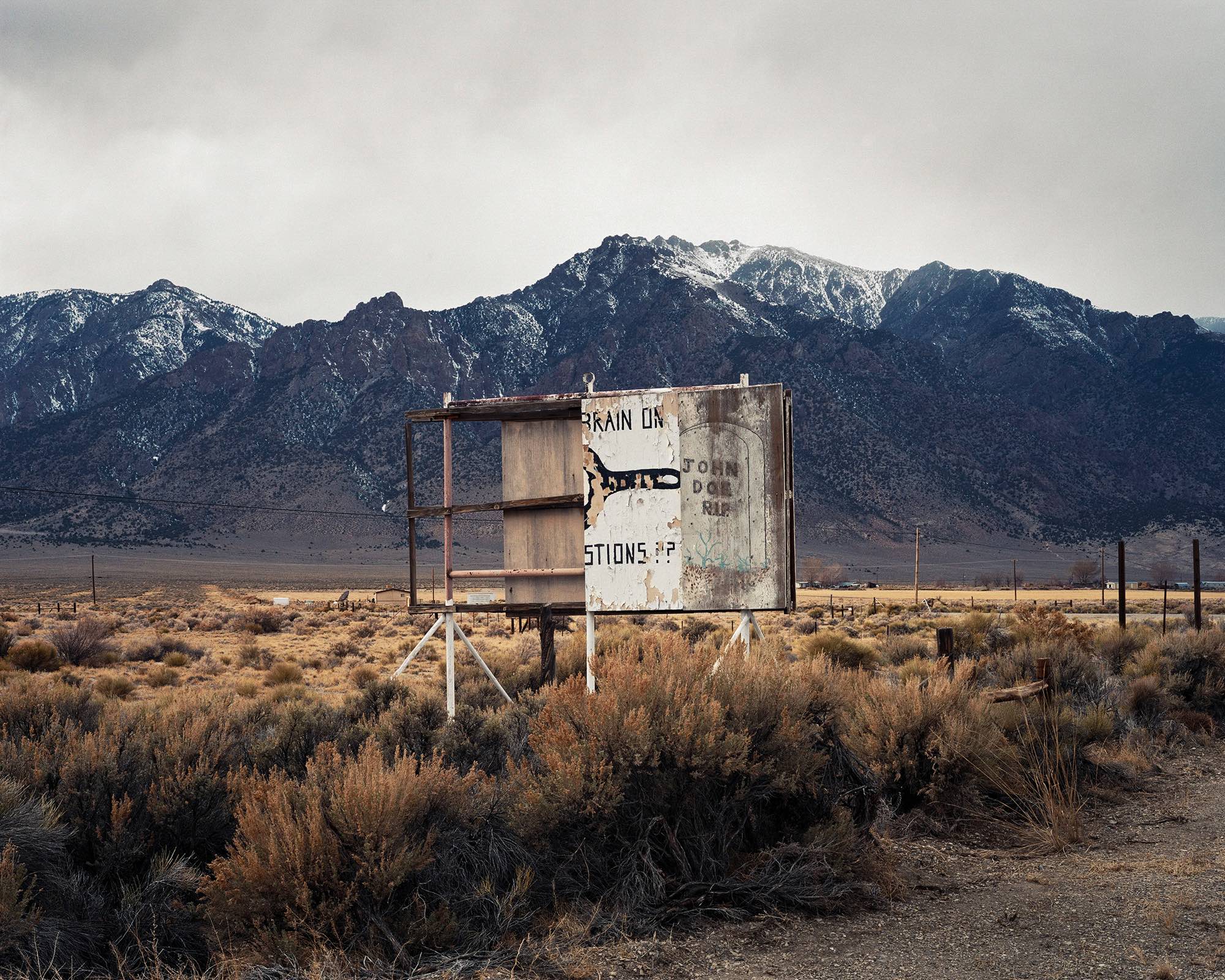
「Grays The Mountain Sends」2013 Silas Finch Foundation。

「Grays The Mountain Sends」2013 Silas Finch Foundation。
ー 胸が熱くなるお話ですね。ありがとうございます。American Westへの写真による言及は、George N. Barnard、Carleton E.Watokins、Timothy O’Sullivan、William Henry Jackson、Dorothea Lange、や、Edoward Westonなど、偉大な先行例がありますが、あなたが最も共感するのはどの例でしょうか?(19世紀に撮影された工業地帯が2000年代には自然に還っているのを見るのは驚きでした)
My heart warmed up when I heard that from you. Thank you for telling us about your father. There are great precedents to photo references to the American West, such as George N. Barnard、Carleton E.Watokins、 Timothy O’Sullivan, William Henry Jackson, Dorothea Lange、and Edward Weston, but which one do you sympathize with the most? ( It’s amazing to see industrial areas filmed in the 19th century returning to nature in the 2000s!)
政治的にも歴史的にも複雑な状況ですが、アメリカ西部の初期の作品はどれも大好きです。ドロシア・ラングをはじめとするFSA(当時の農業安定局のこと)の写真家たちのヒューマニズムと美的ビジョンには深く感銘を受けています。しかし、私が最も深く立ち返るのは、私たちが引き起こした被害を描きながらも、深い愛情を表現するロバート・アダムスの才能です。彼の視覚的、そして道徳的な明晰さは、他に類を見ないほどだと思います。
I love all the earliest work in the American West, despite how complicated it is politically and historically. And I deeply admire Dorothea Lange and other FSA photographers for their humanism and aesthetic vision. But Robert Adams is the one I return to most because of his
ability to show the damage we’ve done while still expressing such love. He has visual and moral clarity unlike any other in my opinion.
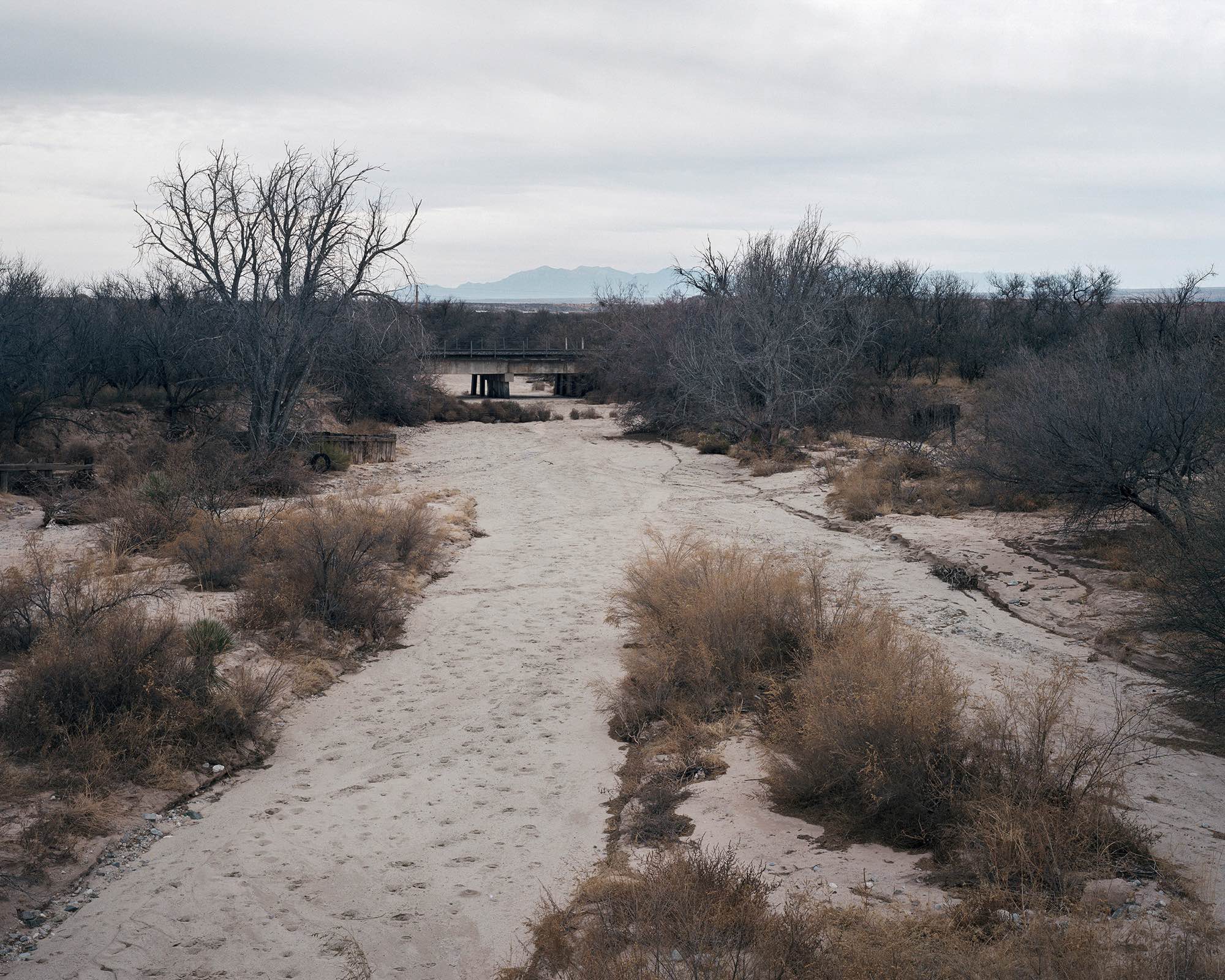
「Grays The Mountain Sends」2013 Silas Finch Foundation。
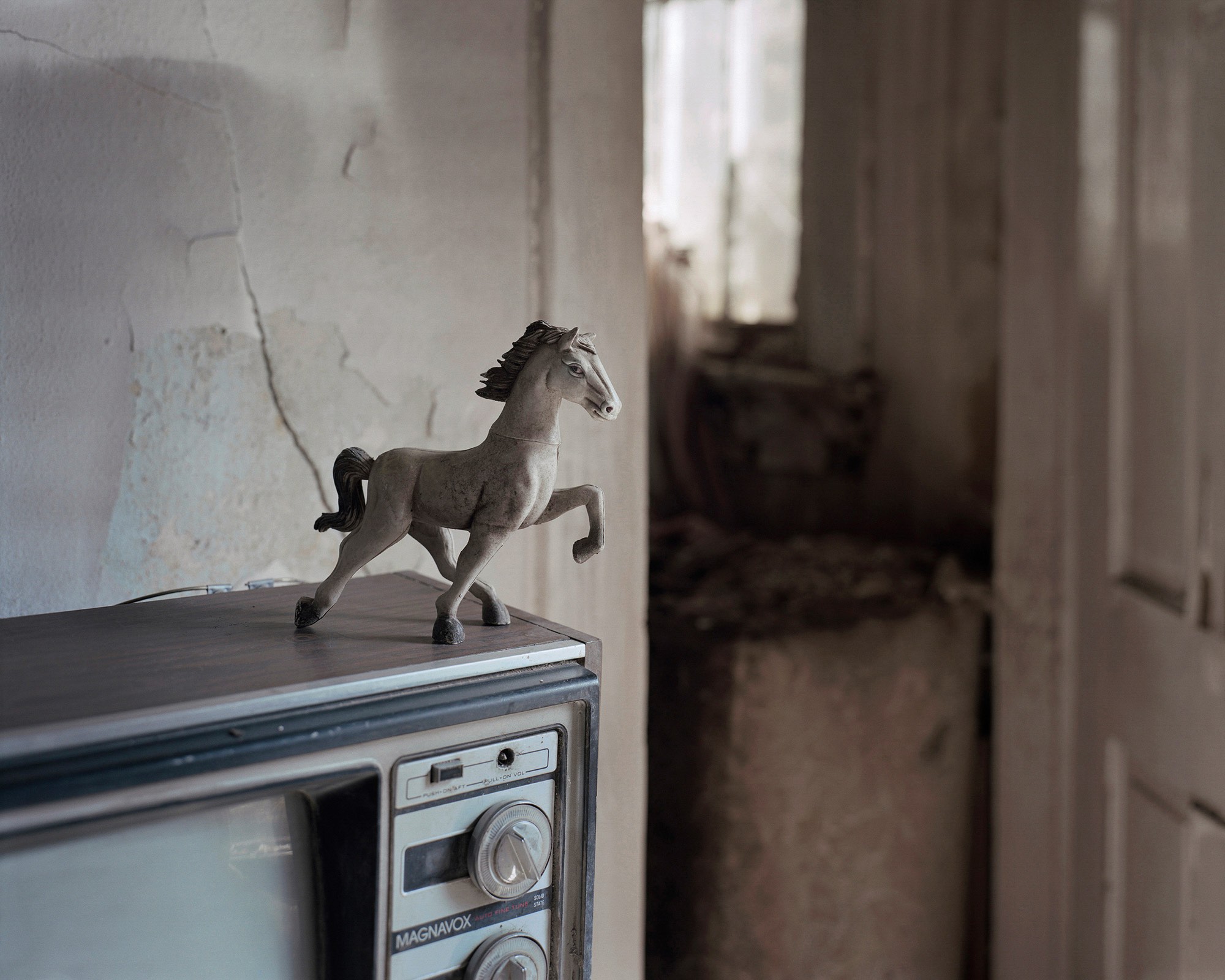
「Grays The Mountain Sends」2013 Silas Finch Foundation。
ー あなたからロバート・アダムスの名前が聞けてとても嬉しいです。世界的なパンデミックの間に撮影された『COUNTY ROAD』について教えてください。自由な移動が制限された歴史的な時期発表された、あなたの心の中へのロードトリップのような、インナーランドスケープとも言える風景写真が美しい作品で、私はこれが大好きです。
これはどのようなきっかけで、どのようなテーマで撮影されたものでしょうか?
I also respect Robert Adams. I’m excited to hear Robert Adams’ name from you. Please tell me about the “County Road” filmed during the global pandemic. It is a beautiful landscape photo that can be described as an inner landscape, like a road trip to your heart, announced during a historical period when free movement was restricted, and I love it. What triggered this and what theme was it filmed with?
ええ、パンデミックの初期は人を撮れなかったので、街の外にある風景や小さなディテールに目を向けました。田舎道を一人でドライブしていると、静寂と内なる風景を見つけました。それは瞑想的で、制限があるからこそ、ものの見方が変わるような感覚でした。ソニーの小型カメラを使って、一日中たくさんの写真を撮り、露光時間やボケ(この「blur」はスラングとして、コロナ禍の自粛期間において曜日の感覚がなくなった状態を指すことも)の実験をしました。カメラを草むらに置いたりもしました。それは、時間、空間、そして孤独についての静かな瞑想になりました。ちなみに、『COUNTY ROAD』に収録された写真の多くは、2017年に発表した写真集『Good Goddamn』を撮影した際に撮影したものです。
Yeah, during the early pandemic, I couldn’t photograph people, so I turned to landscapes and small details outside the city. Driving alone down rural roads, I found a stillness and an inner landscape. Itwas contemplative, and the limitations forced me to see differently. I used a small Sony camera that let me get a lot of shots throughout the day and I experimented with duration and blur blur. I put the camera in the grass and so on. It became a quiet meditation on time, space, and solitude. I should note that many of the photos that made their way into County Road were taken in 2017 when I photographed the book, Good Goddamn.
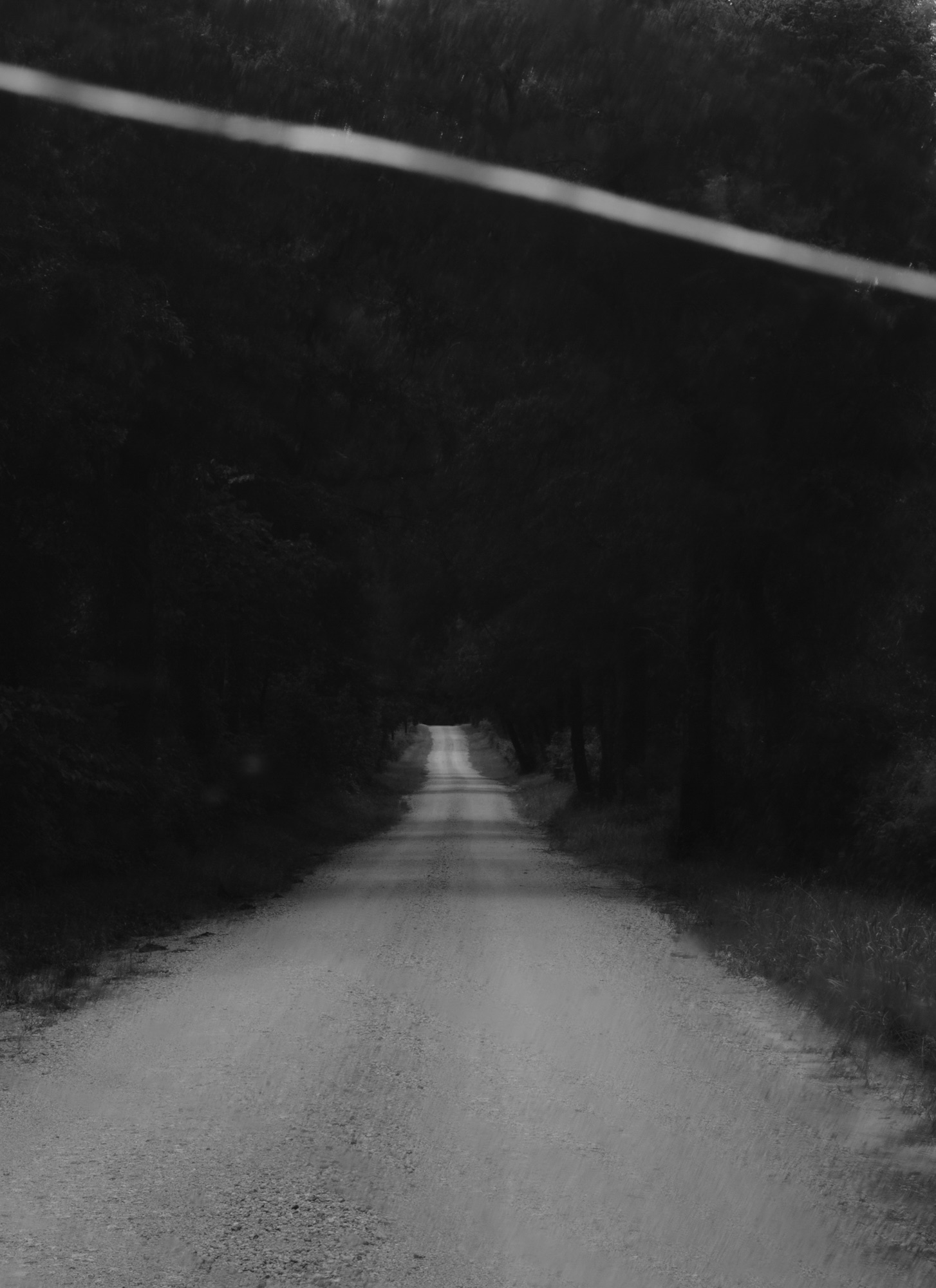 >
>「COUNTY ROAD」2023 TRESPASSER。
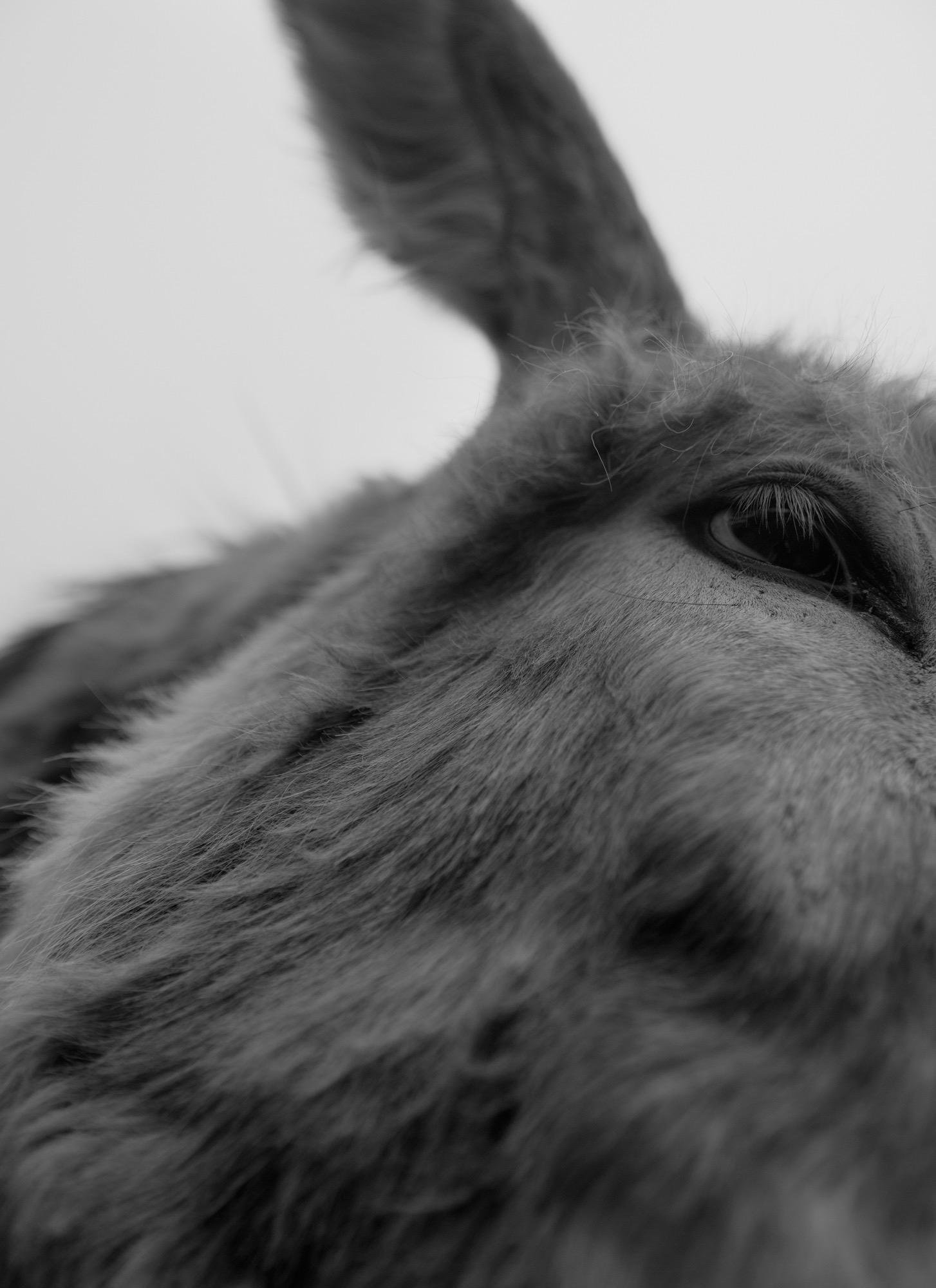
「COUNTY ROAD」2023 TRESPASSER。
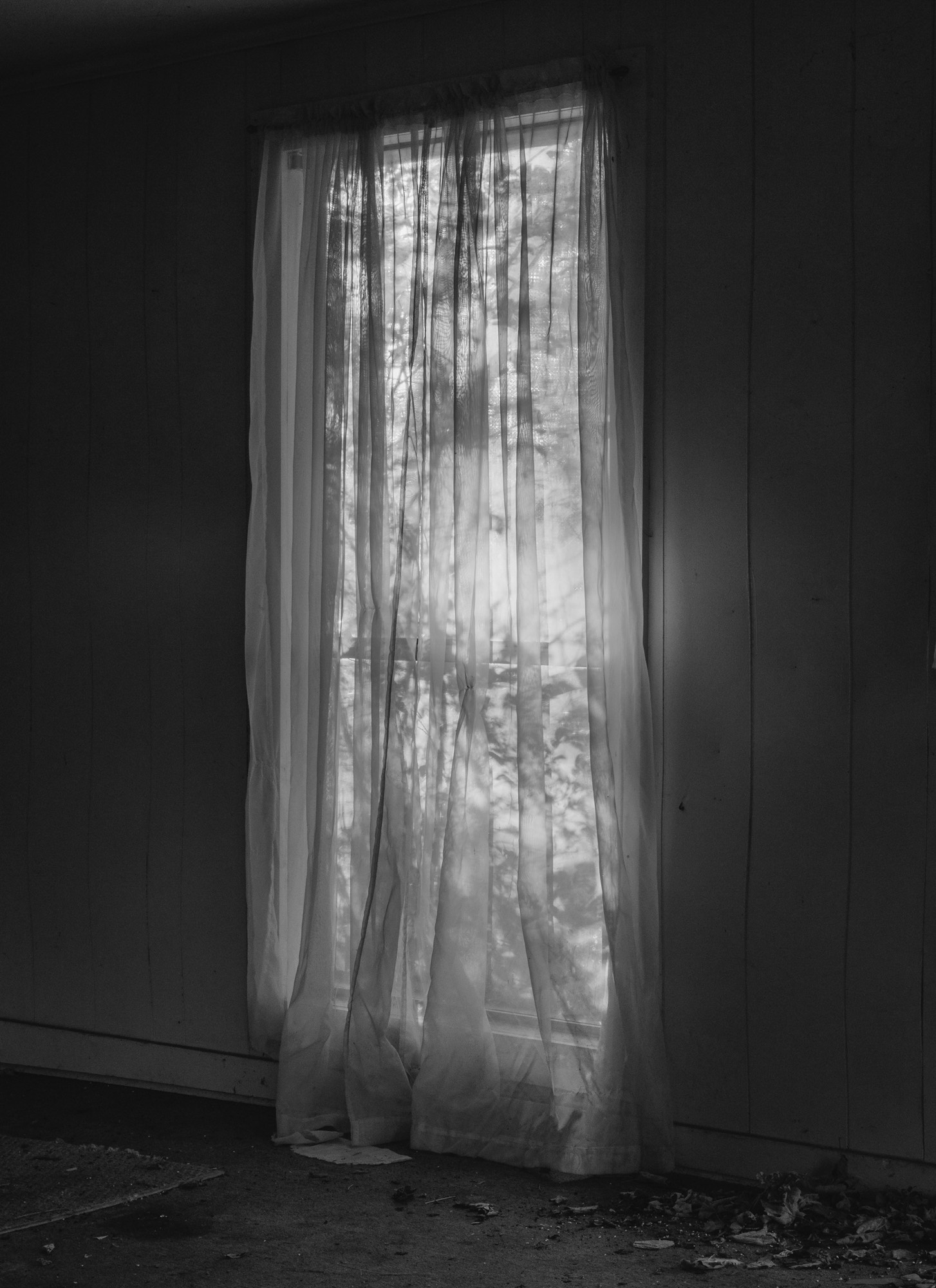
「COUNTY ROAD」2023 TRESPASSER。
「COUNTY ROAD」2023 TRESPASSER
アメリカにおけるCountyとは地方における行政区分、郡などと訳され、ある特定の地域のことをあらわす。『SONS OF THE LIVING』とは対照的に縦位置の写真で統一、人影のない寂れた町の片隅、暗い空、田舎道に深く刻まれた轍。そこには人工の静けさとつつましい野生、孤独や淋しさが詩的に同居するが、南西部という土地の土着性と心理的な距離はむしろ密接になり、そのことによりひとけのない土地の存在感が際立ち永遠性を獲得している。このうちの多くはより機動性の高い小型のカメラで濃密に一人の人物と向き合った『GOOD GODDAMN』に取り組む途上で撮影され、人のいない「風景の肖像」を丹念に描いている。
In the United States, County is translated as a local administrative division, county, etc., and refers to a specific area. In contrast to “SONS OF THE LIVING”, it is unified with vertical photos, a lonely corner of the town without a shadow, a dark sky, and deep ruts carved on the country road. There, artificial tranquility and modest wildness, loneliness and loneliness coexist poetically, but the indigenous and psychological distance of the southwestern land are rather close, and as a result, the presence of the inexistible land stands out and gains eternity. Many of these were taken while working on “Good Goddamn”, which was densely faced with one person with a smaller camera with more mobility, and they painstakingly depict the “portrait of the landscape” without people.
ー そうだったのですね。『COUNTY ROAD』に収録された作品の多くは、『GOOD GODDAMN』を撮影した際に撮影したものだと知って驚きました。『GOOD GODDAMN』は短い時間で撮影したと聞きました。というと、あなたは『County Road』 に収録した作品を2017年のある日、短時間の内に撮影したということですか?
I was surprised to learn that many of the images in “County Road” were shot during the filming of “Good Goddamn.” I heard that “Good Goddamn” was shot in a short amount of time. Does that mean you shot the images in “County Road” in a short amount of time on a few day in 2017?
ええ、私は『Good Goddamn』の間に『County Road』のいくつかを撮影し、2017年の春に少し後に他のものを撮影しました。
Yeah, I photographed some of County Road during Good Goddamn and others a little later in the spring of 2017.
ー 『County Road』はあなたのキャリアの中でも美しい小品ともいうもので印象に残りました。他のプロジェクトとの違いを教えてください。
lease tell me the difference between “County Road” and other projects.
もっと内省的で、ミニマルな感じですね。それに、人影も全くありません。
I’d say it’s more introspective, more minimal. There are also no people at all.
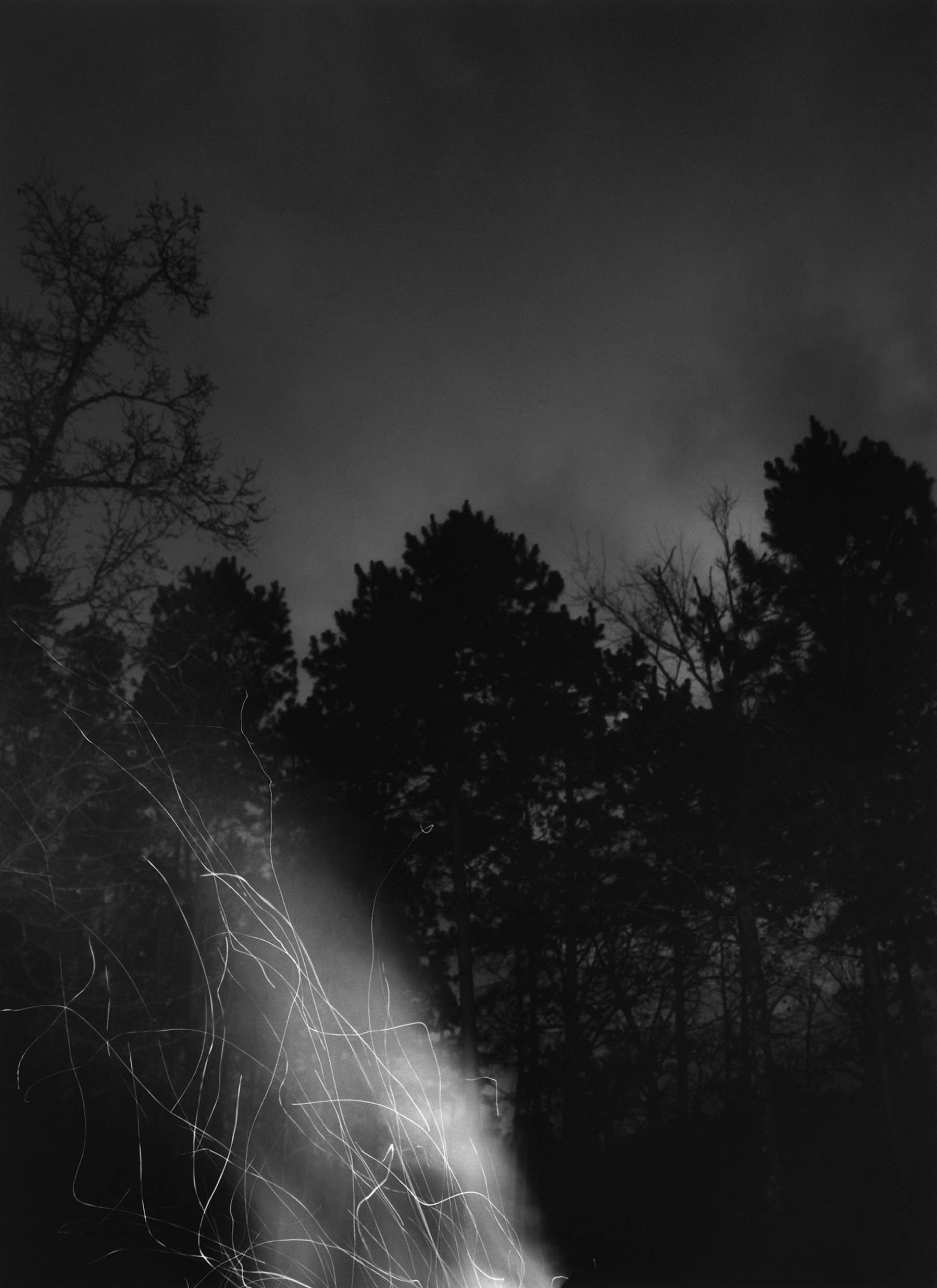
「Good Goddamn」2017 TRESPASSER。
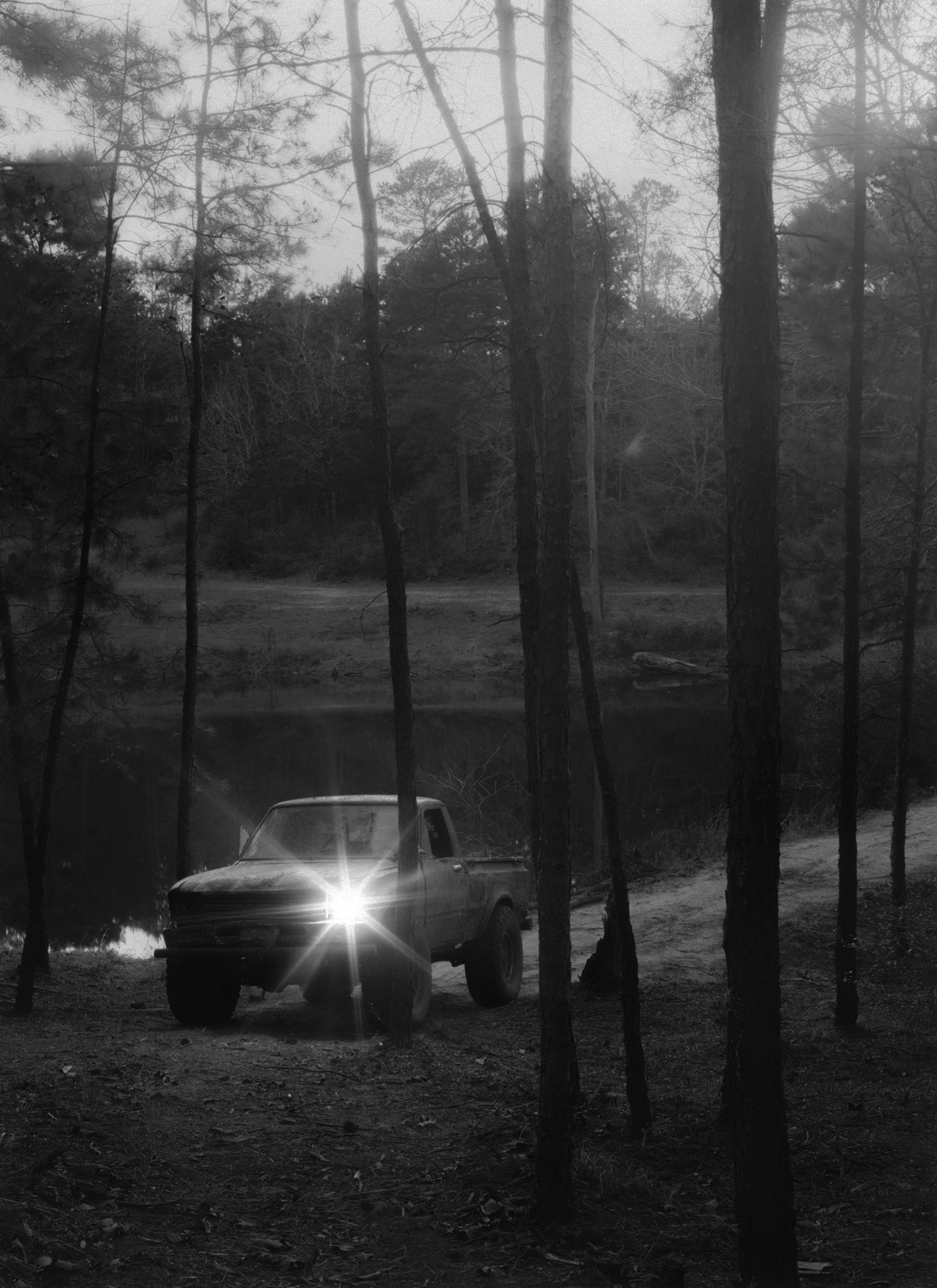
「Good Goddamn」2017 TRESPASSER。
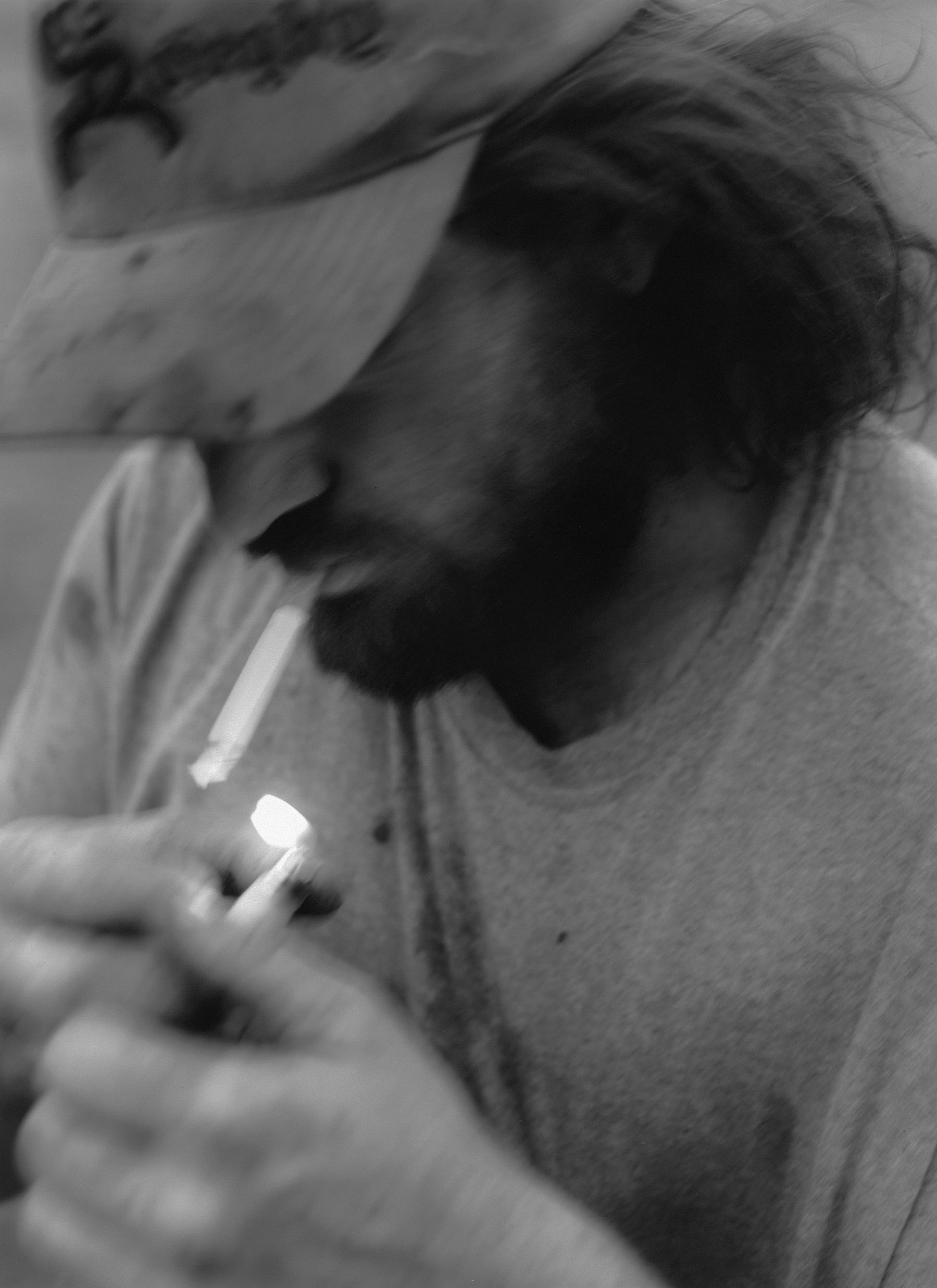
「Good Goddamn」2017 TRESPASSER。
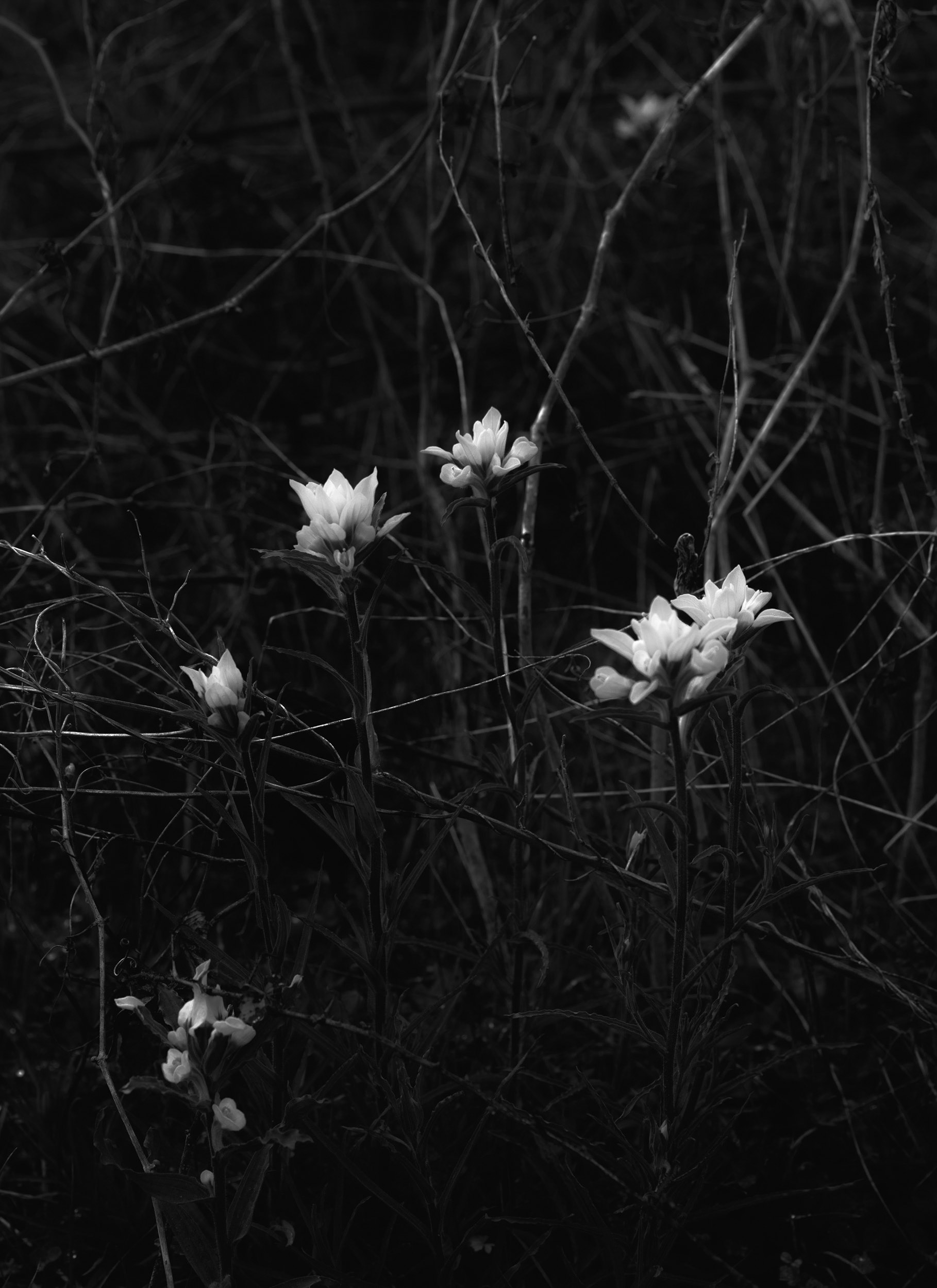
「Good Goddamn」2017 TRESPASSER。
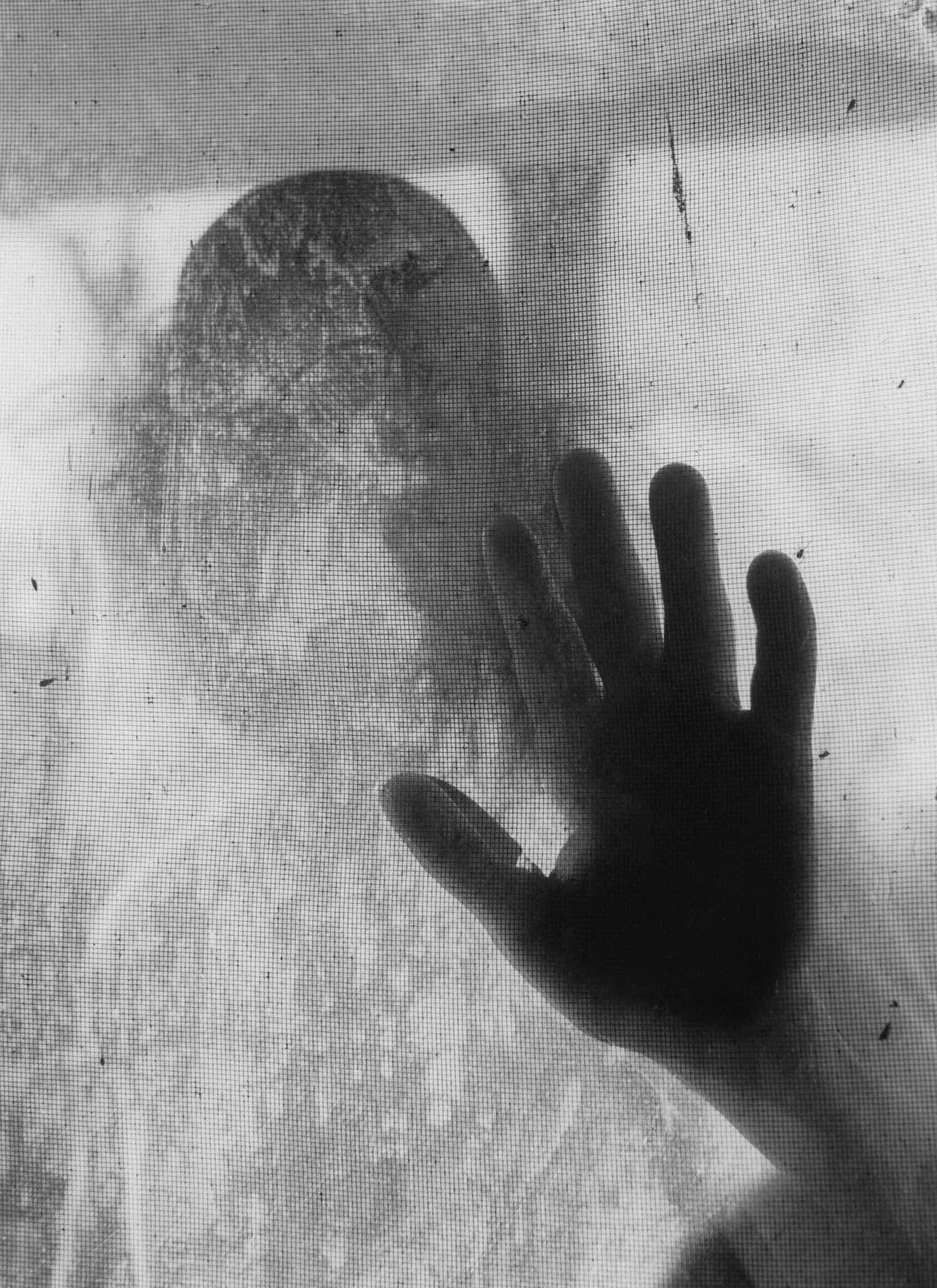
「Good Goddamn」2017 TRESPASSER。
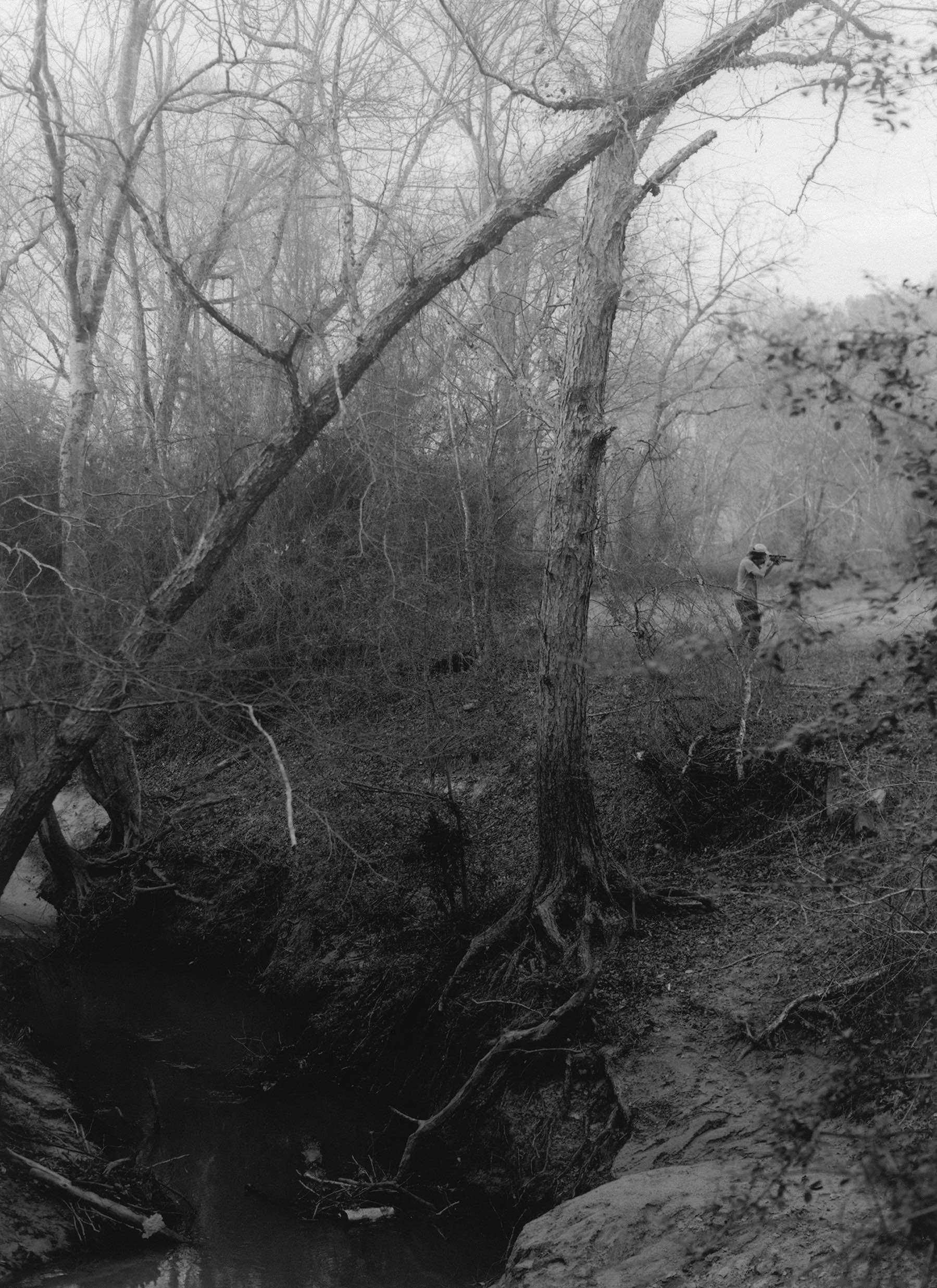
「Good Goddamn」2017 TRESPASSER。
「Good Goddamn」2017 TRESPASSER
『GOOD GODDAMN』は、テキサスの田舎出身のクリスという男と、刑務所に行く前の最後の自由の数日間についてのストーリー。アメリカの放浪のシンガーソングライター、Townes Van Zandtの詩が行き場のない今と未来を叙情的に導いている。Goddamnとは日本では”ガッデム”と言われるスラング。農村と郊外コミュニティ、倫理、ニューウエストがかかえる憂鬱などがダークな白黒のマットなトーンで描かれていて主人公の未来を思い心を打たれる。
Good Goddamn is a story about a man named Chris from the countryside of Texas and the last days of freedom before going to jail. The poems of Townes Van Zant, an American wandering singer-songwriter, lyrically guide the present and the future where there is nowhere to go. Rural and suburban communities, ethics, and the melancholy of the New West are drawn in a dark black and white matte tone, which makes you think about the future of the protagonist.
ー パンデミックの影響で人を撮ることが出来なかったことは、この時期のあなたの作品にどのような影響を及ぼしていますか?自然に惹かれた理由も教えてください。
How does the fact that you couldn’t take photograph of people due to the pandemic affect your work during this period? Please tell me why you are attracted to nature.
それは私を落ち着かせてくれます。ウェンデル・ベリー(アメリカの小説家で詩人)はかつてこう書きました。「すべての生き物の死を思い、それでも生きることが、この時代の鍛錬なのです。」
世界が混乱しているとき、私たちの苦しみに無関心な自然の力を観察することは、助けになります。すべては続いていくのです。
It grounds me. Wendell Berry once wrote “ It’s the time’s discipline to think of the death of all living, and yet live.” When the world is in turmoil, it’s helpful to watch the forces of nature that are indifferent to our suffering. It all goes on.
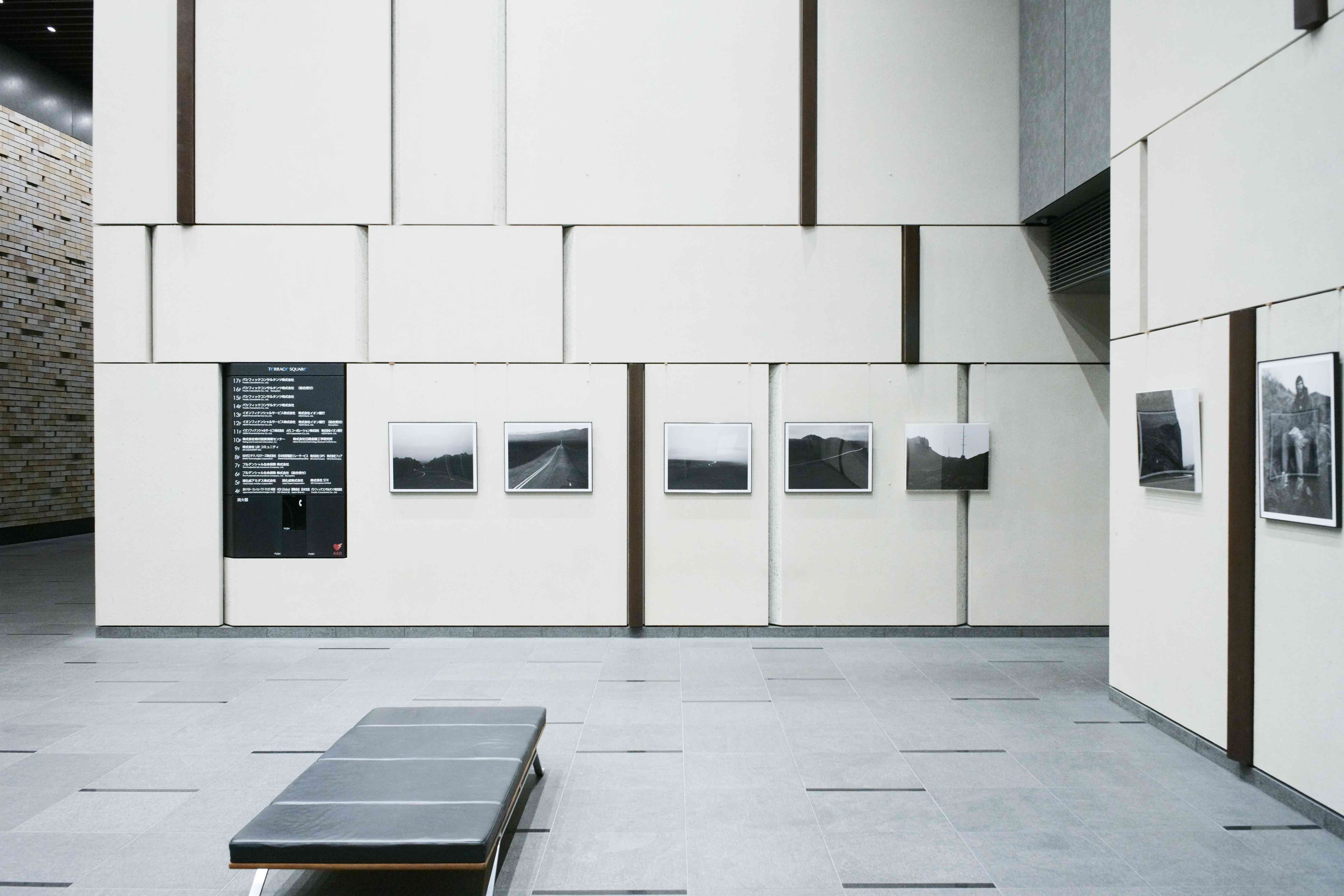
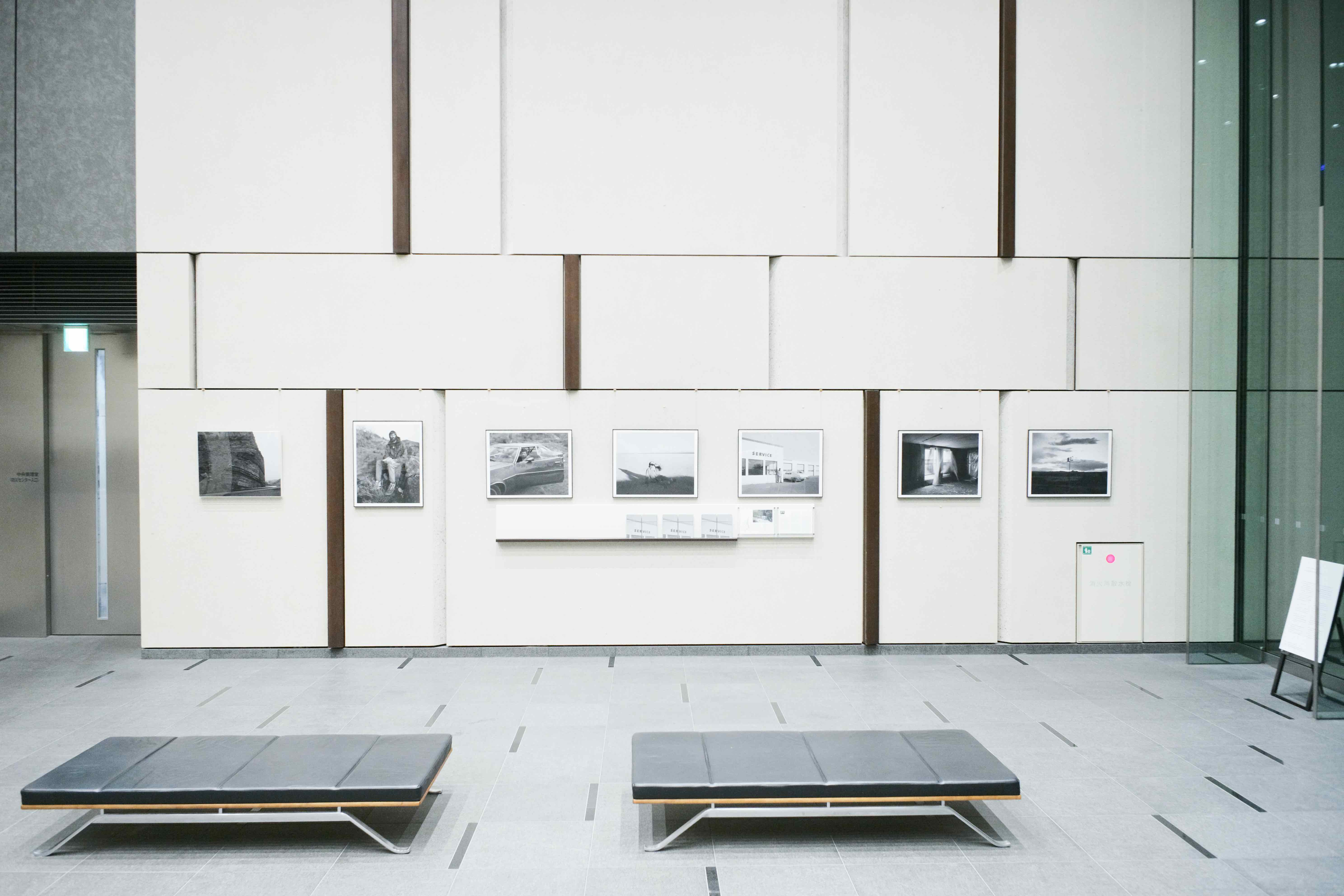 テラススクエアでの展示風景(2025 東京 TOKYO)。Photo:Takashi Kato
テラススクエアでの展示風景(2025 東京 TOKYO)。Photo:Takashi Kato
ー うわぁ、示唆に富んだ素晴らしい言葉ですね。次に世界中で大きな驚きとともに迎えられた『SONS OF THE LIVING』について教えてください。ここで見ることができる作品は当初『VESSELS』と呼ばれていたことを多くの人々は知っています。
共通点と同時に、昔の写真、先行例とあなたが撮るものでは、大きく異なっているように私には思えます。それは「時代性」です。例えば、車はかつて富やステータスの象徴でしたが、あなたの写真に写っているそれは、空虚で、鉄の塊に見えます。インテリアはそこで暮らす人の趣味や嗜好を表していますがいつの時代か分かりません。
写しだされる人々の顔は希望に満ちているというよりも、寂しげです。
それは私が感じたように真実ですか?(当初VESSELSとしてまとめていた理由も教えてください)
Wow, that’s a great and suggestive word. Next, please tell me about “Sons Of The Living”, which was welcomed with great surprises all over the world. Many people know that the works you can see here were originally called “Vessels”.
At the same time as the common point, it seems to me that the old photos, previous examples and what you take are very different. It is “the times”. For example, a car was once a symbol of wealth and status, but in your photo it looks empty and a lump of iron. Interiors represent the hobbies and preferences of the people who live there, but I don’t know when it was.
The faces of the people who are copied are lonely rather than full of hope.
Is it true as I felt? ( Please tell me the reason why it was originally organized as “Vessels”)
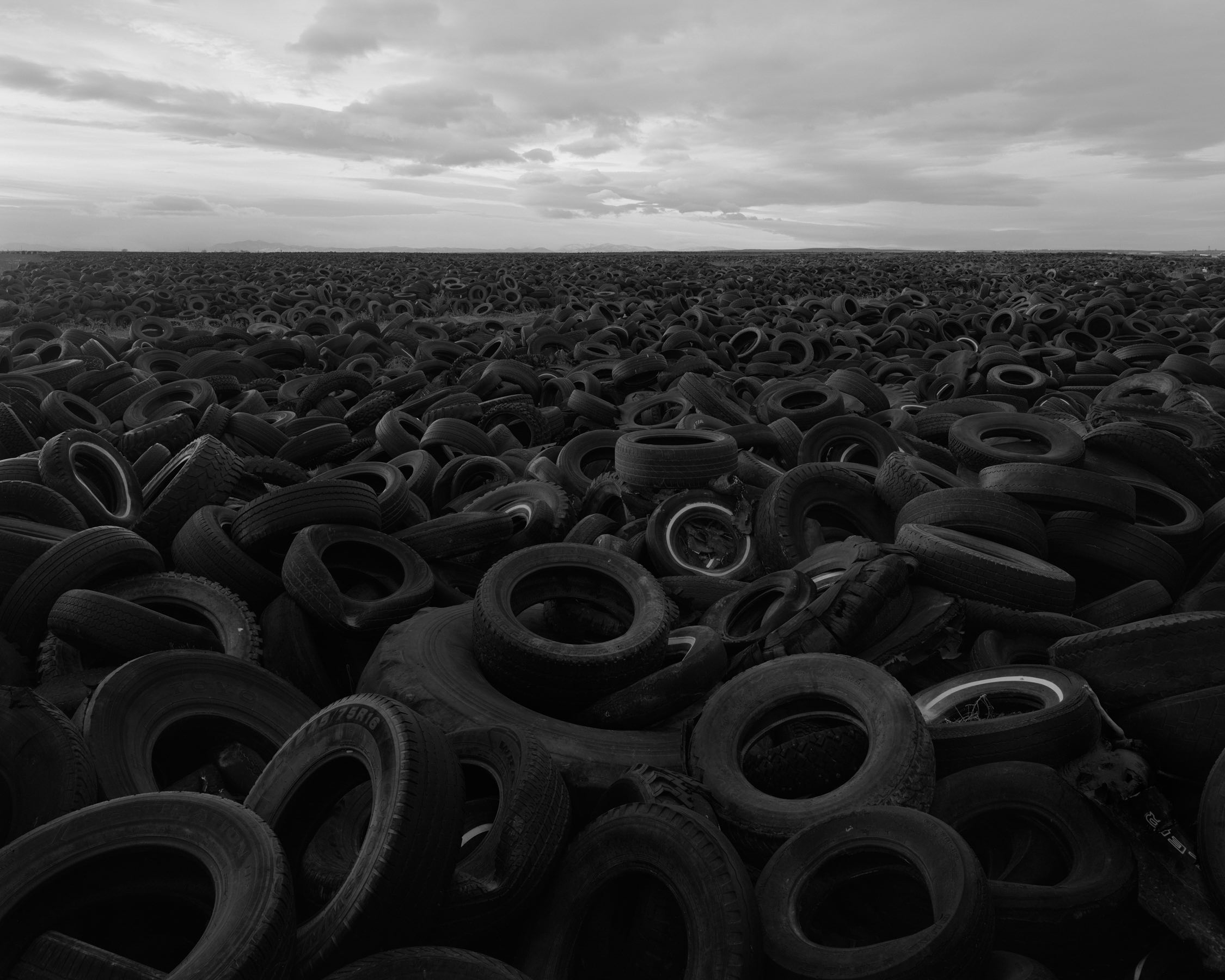
「SONS OF THE LIVING」2024 TRESPASSER。
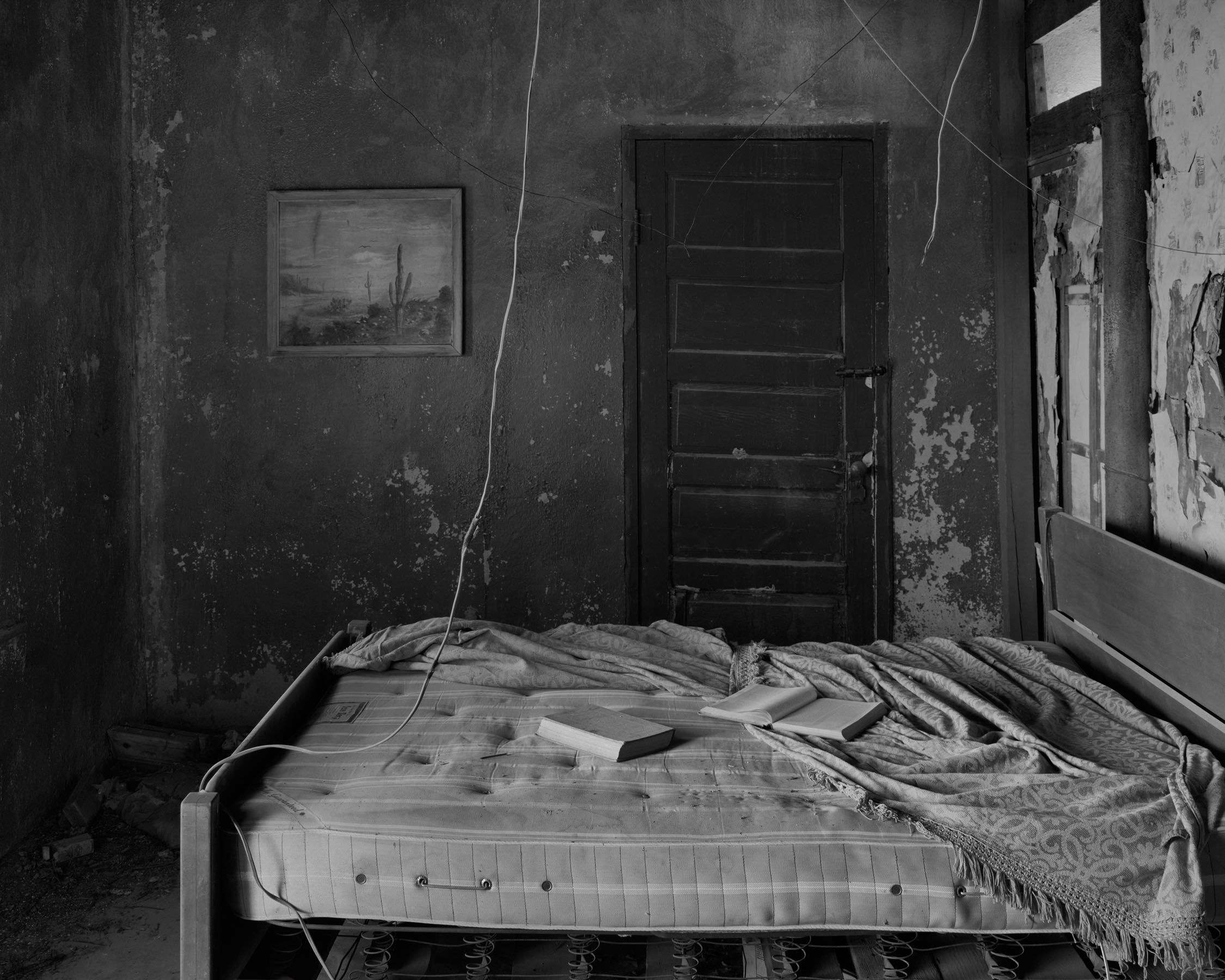
「SONS OF THE LIVING」2024 TRESPASSER。
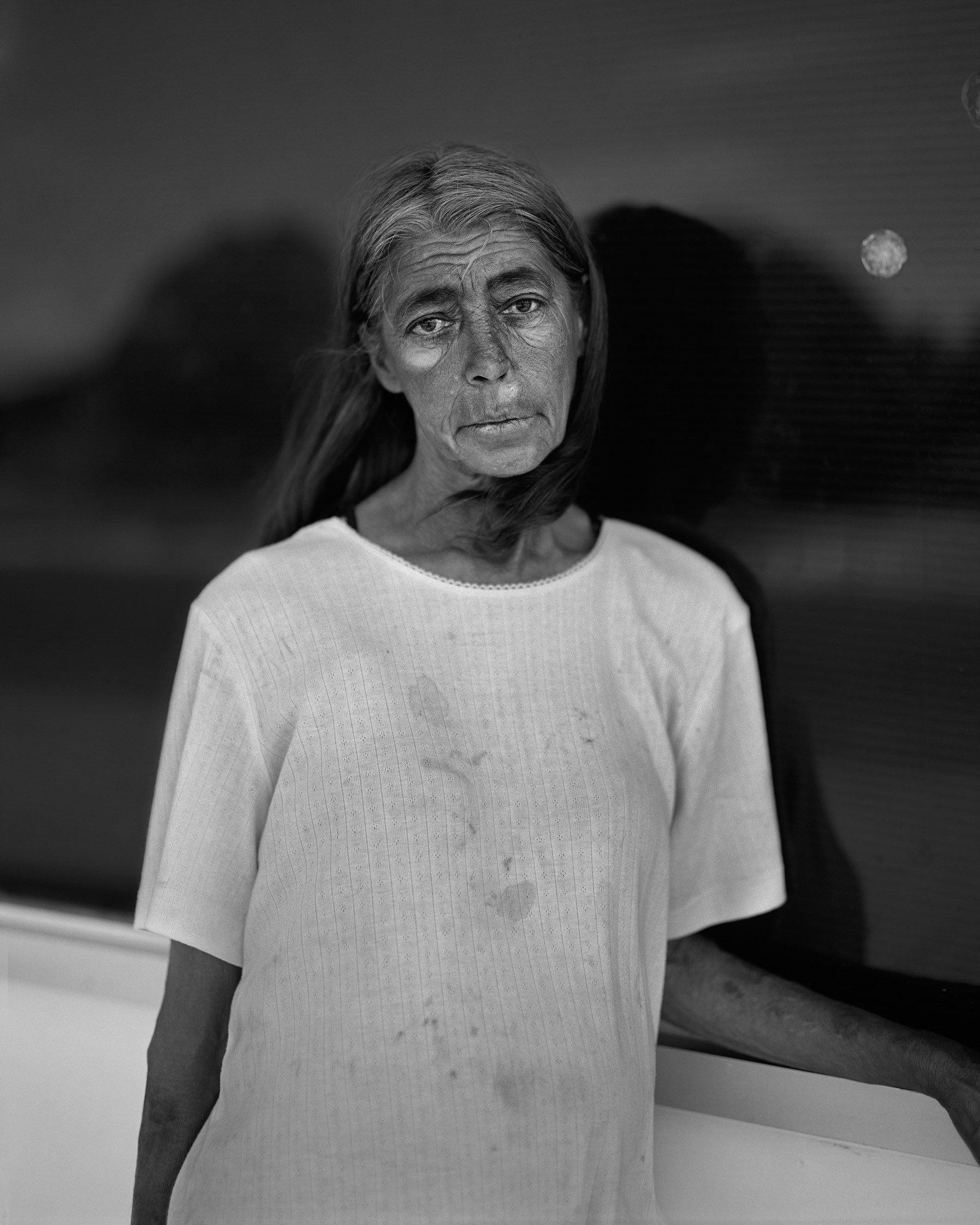
「SONS OF THE LIVING」2024 TRESPASSER。
確かに、あなたの指摘はすべて正しいと思います。このシリーズは、長年のドライブと写真撮影を通して進化してきました。「VESSELS(船)」は、この写真に含まれる精神性を体現する仮題でしたが、出版の準備が整った段階で『SONS OF THE LIVING』に変更しました。
The series evolved over years of driving and photographing. “Vessels” was the working title meant to embody spirituality, but I changed the title to “Sons of the Living” when the book became ready for publication. I think all your observations are true, yes.
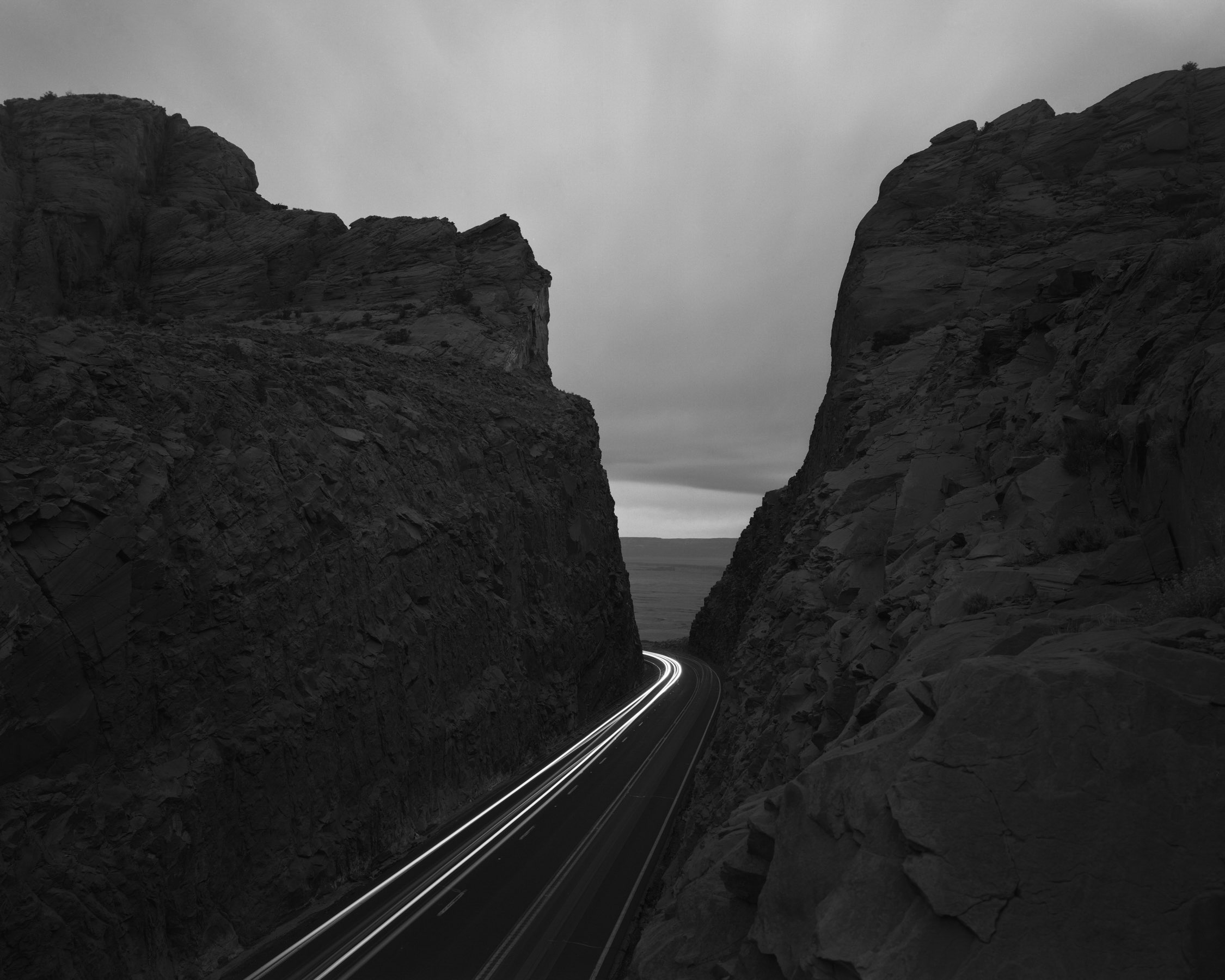
「SONS OF THE LIVING」2024 TRESPASSER。
ー あなたは車で何日もかけて移動をしながら撮影をするそうですが、『SONS OF THE LIVING』で見られる作品は、具体的にどの街からどの街まで移動したのかを教えてください。
It seems that you are shooting while traveling for days by car, but please tell me specifically from which city to which city the work you can see in “Sons Of The Living” was moved from.
私はテキサス州オースティンに住んでいて、毎年数週間砂漠を散策していました。決まったルートはなく、西へ向かって広大な田園地帯を何度も旅して回りました。そしてロサンゼルスに近づくと、私は引き返しました。
I live in Austin Texas and I would wander out into the desert for a few weeks each year. There’s no single route. It was made over many westward trips into the open country. When I would get close to LA I turned around.
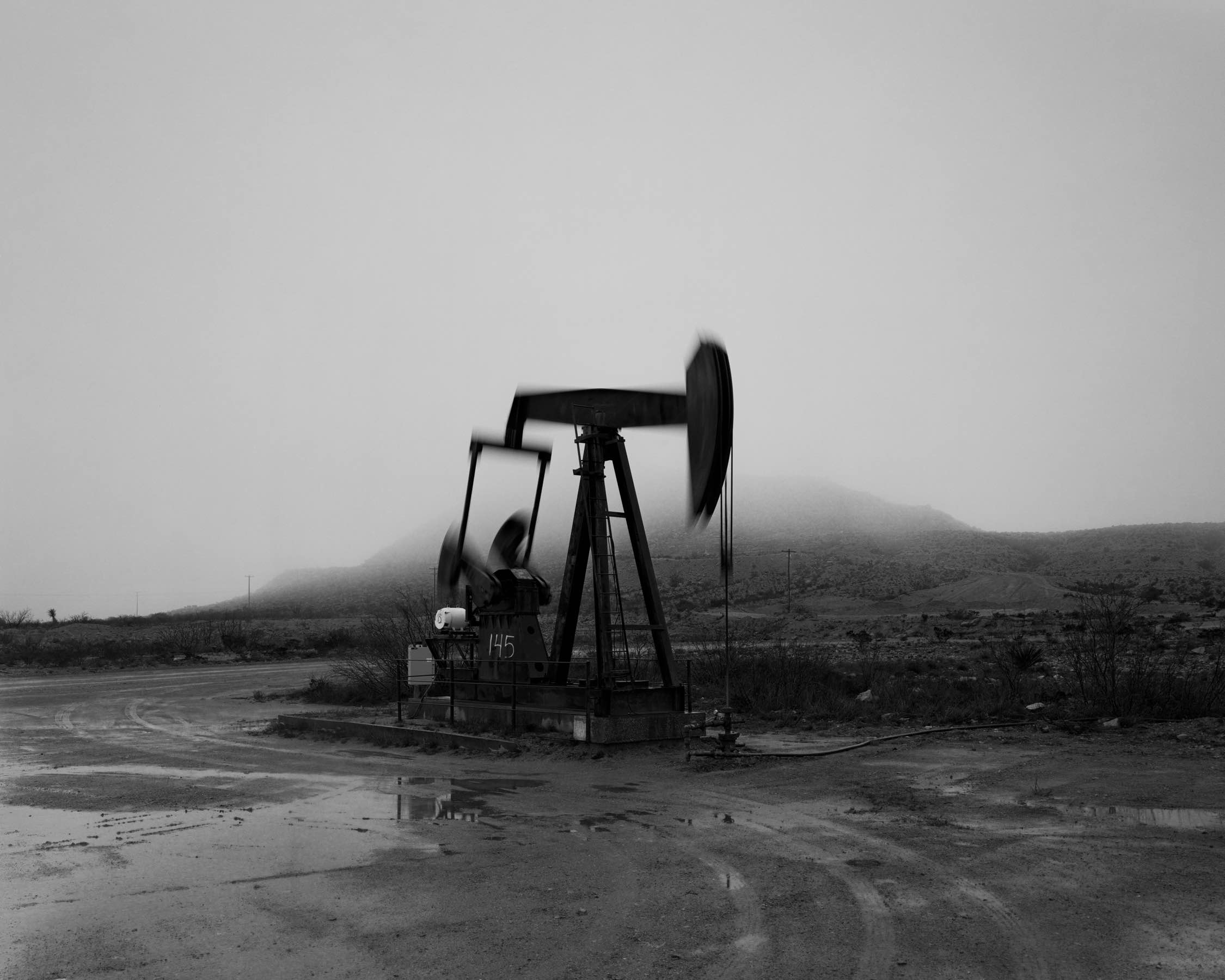
「SONS OF THE LIVING」2024 TRESPASSER。
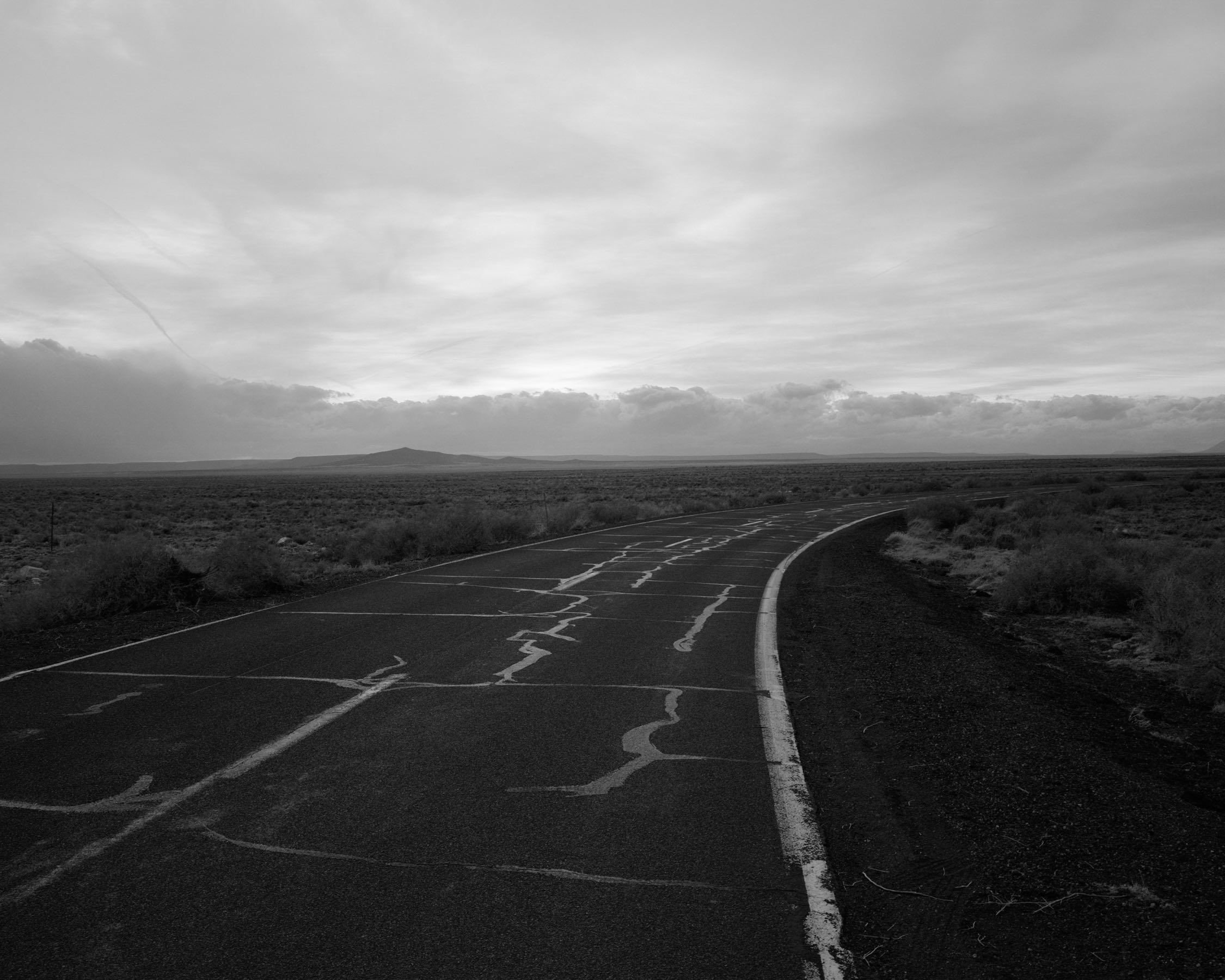
「SONS OF THE LIVING」2024 TRESPASSER。
ー あなたの旅が目に浮かぶようです。その移動の途中、どのタイミングであなたはカメラを組み立て、撮影を開始するのでしょうか?旅の途中で写真を撮ることになる動機を教えてください。
Your journey seems to come to mind. At what time will you assemble the camera and start shooting on the way? Please tell me the motivation for taking pictures during the trip.
朝と夕方の光が一番好きですが、写真を撮ることに惹かれる理由は実に様々で、今の私を突き動かすものが何なのかを具体的には言えません。本当に様々です。
I like the light best in the morning and evenings, but I’m drawn to take pictures for so many different reasons I couldn’t say with any specificity what motivates me at the moment. It all varies.
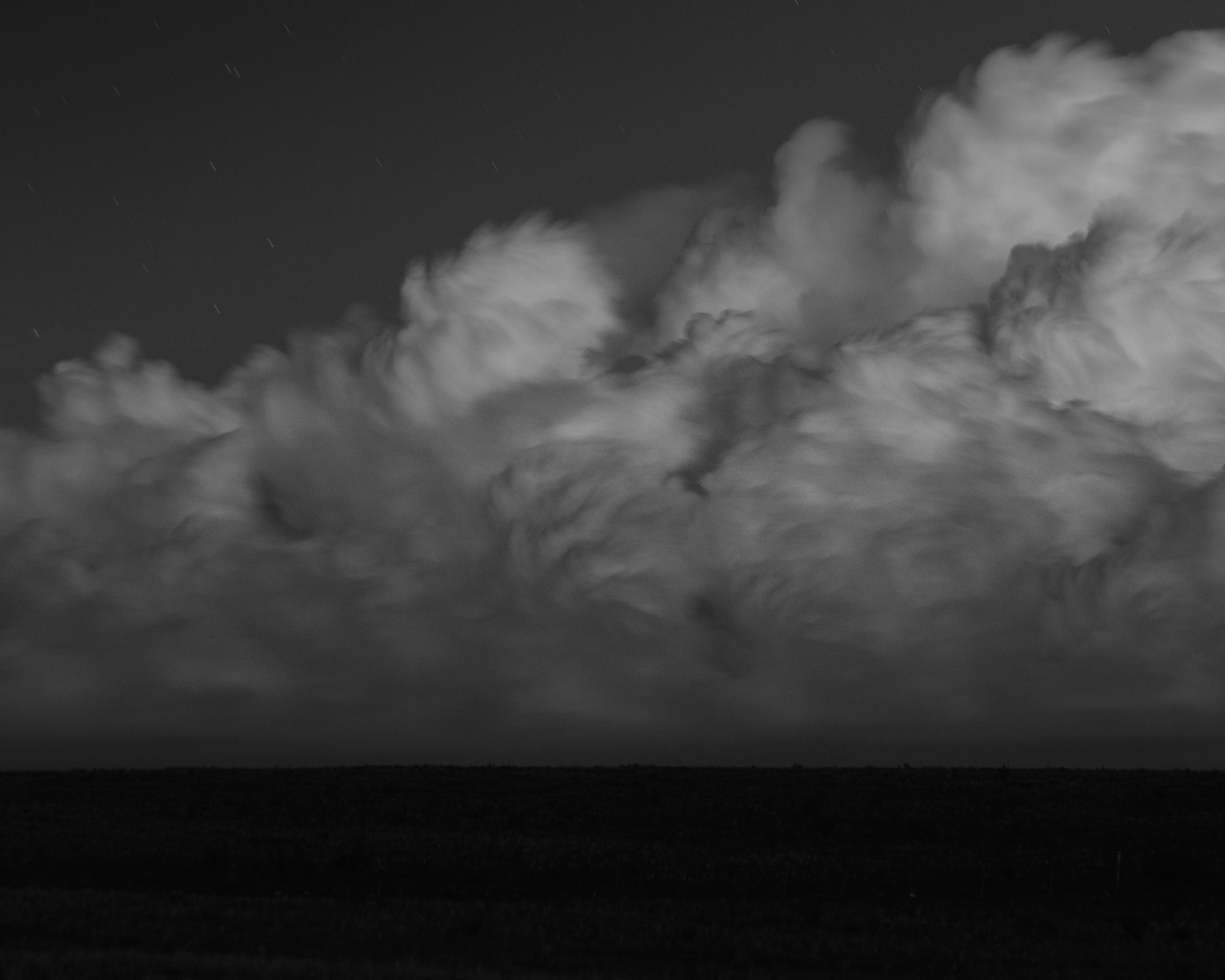
「SONS OF THE LIVING」2024 TRESPASSER。
アメリカ西部、フロンティアという夢。
ー アメリカの荒野はあなたにとってどのような意味と、愛着を表現しているのでしょうか?あなたの仕事である『Islands of the Blest』を見るまでもなく、あなたはアメリカの歴史と伝統、先人たち、「風景」に対する深い敬意と知識があり、あなたは歴史学の学位をお持ちです 。私はアメリカの風景に対するあなたの深い愛情と愛着を感じます。あなたがこの土地の歴史について理解していることを教えてください。
What does the American wilderness mean and how does it express its attachment to you? Not to look at your work, “Islands of the Blest”, you have deep respect and knowledge of American history and traditions, ancestors, and “landscapes”. You hold a degree in history. I feel your deep love and attachment to the American landscape. Please tell me what you understand about the history of this land. ( The importance of knowing the history of the place when taking pictures, what you understand in American history, and what you take pictures of that American history)
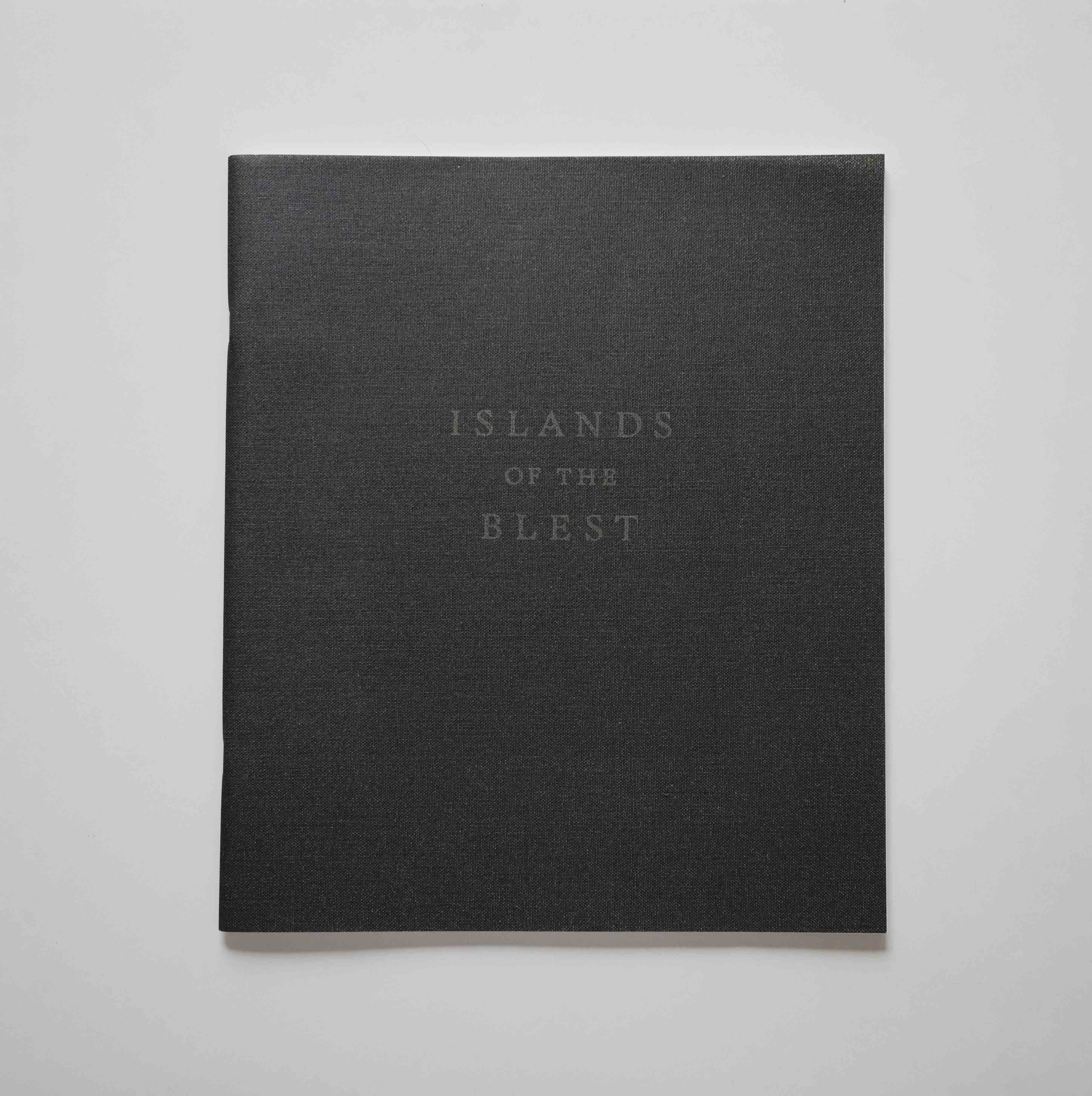
「Islands of the Blest」First edition.Bryan Schutmaat & Ashlyn Davis 2014 Silas Finch。
「Islands of the Blest」 2014 Silas Finch
ブライアンとライターのアシュリン・デイビスによるアメリカ西部写真のオムニバス作品集。『Grays the Mountain Sends』(2013)に先立って制作されたアメリカ西部の歴史家として写真家として最重要作品。米国議会図書館と米国地質調査所の公開デジタルアーカイブから編纂者それぞれの目線で西部の風景写真とポートレートが選ばれている。ここに収められているのはティモシー.H.オサリヴァン、ウィリアム・ヘンリー・ジャクソン、ドロシア・ラング、クレジットのない作品など44点。
木々が伐採され山肌があらわになった山と谷、森林伐採のための野営地となった湖畔の森、開拓されかたちづくられた真新しい村、長い煙突から噴煙をはく工場、人間の手により根気強く大地に敷かれた線路。アメリカ西部の広大な山岳と高原地帯の風景と開拓とフロンティアスピリット。ゴールドラッシュの希望に沸き立つ都市と、挫折に一喜一憂する人々。Islands of the Blestとはギリシャ神話に登場する神々に祝福される楽園の名前。1870年代からおよそ100年あまりの間に撮影されたこれらの写真から、時代も場所も大きな振れ幅ももちながら、無垢なアメリカの風景を再発見する手がかりを創出するとともに、かつてのワイルドウェストの生きられた大地とその精神の顕在化へと驚くほど鮮明に導いている。
An omnibus collection of western American photography by Brian and writer Ashlyn Davis. This is the artist’s most important work as a historian and photographer of the American West, produced prior to Grays the Mountain Sends (2013).From the public digital archives of the United States Library of Congress and the United States Geological Survey, western landscape photos and portraits are selected from the perspective of each compiler. 44 works are included here, including Timothy H. O’Sullivan, William Henry Jackson, Dorothea Lang, and works without credit.
Mountains and valleys where trees have been cut down and the mountain skin has been revealed, a lakeside forest that has become a campsite for deforestation, a brand-new village that has been developed and shaped, a factory that smokes from a long chimney, and a track laid patiently on the ground by human hands. Landscapes, development, and frontier spirit of the vast mountains and plateaus of the western United States. A city that is boiling with the hope of the gold rush and people who are happy and sad about setbacks. Islands of the Blest is the name of a paradise that appears in Greek mythology.These photographs, taken over a period of roughly 100 years, beginning in the 1870s, span a wide range of time periods and locations, providing clues for rediscovering the pristine American landscape and leading us with astonishing clarity to the living land and spirit of the former Wild West.
これは素晴らしい質問ですが、答えるにはあまりにも広大です。西洋の限られた視点からお話ししていることをお詫びしますが、ヨーロッパとは異なり、アメリカの荒野は歴史的、社会的、そして政治的に深い意味を持っています。写真家として何か意味のあることを語ることは重要ですが、私はただそのような場所にいるのが好きなのです。このような大きな質問に簡潔な答えで申し訳ありませんが、これについて本が一冊書けるほどです。
This is a terrific question but it’s too vast to attempt to answer. I apologize for speaking from a limited Western perspective ,but unlike Europe, the American wilderness has a profound historic, social, and political significance. It helps to say something meaningful as a photographer, but also I just love to be in those settings. I apologize for the short answer to such a big question, but I could write a book about this.
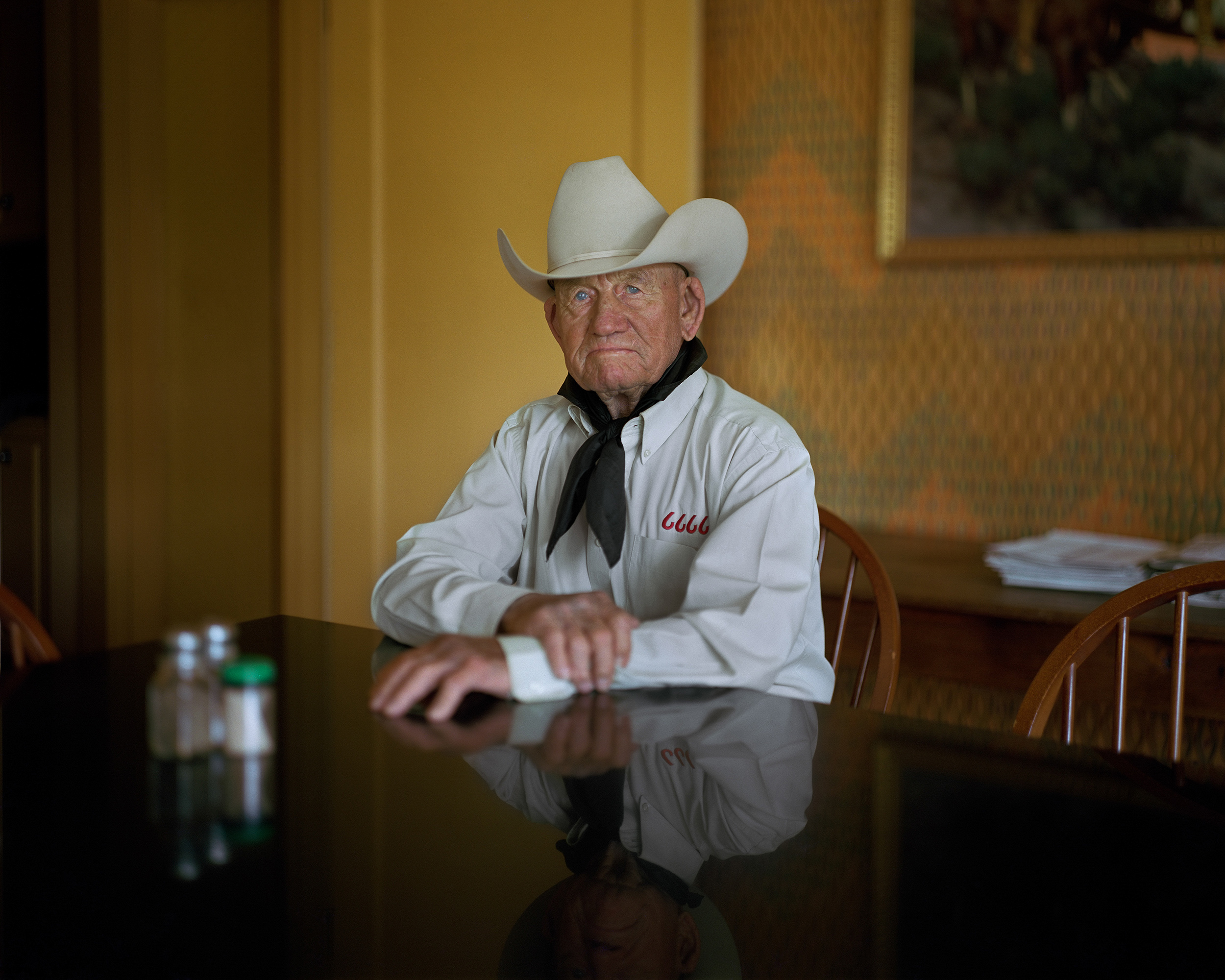
「LIVING DRY」2022
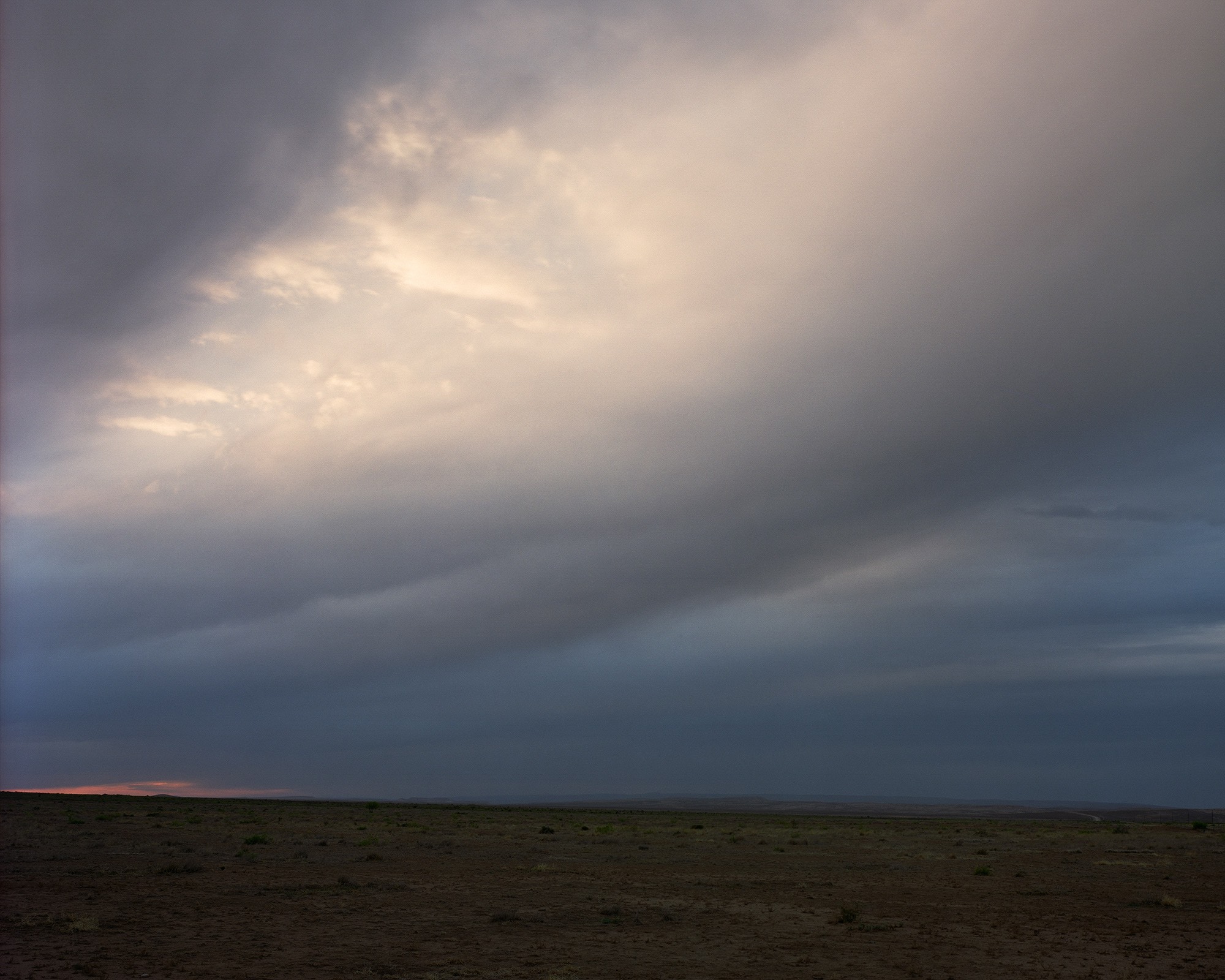
「LIVING DRY」2022
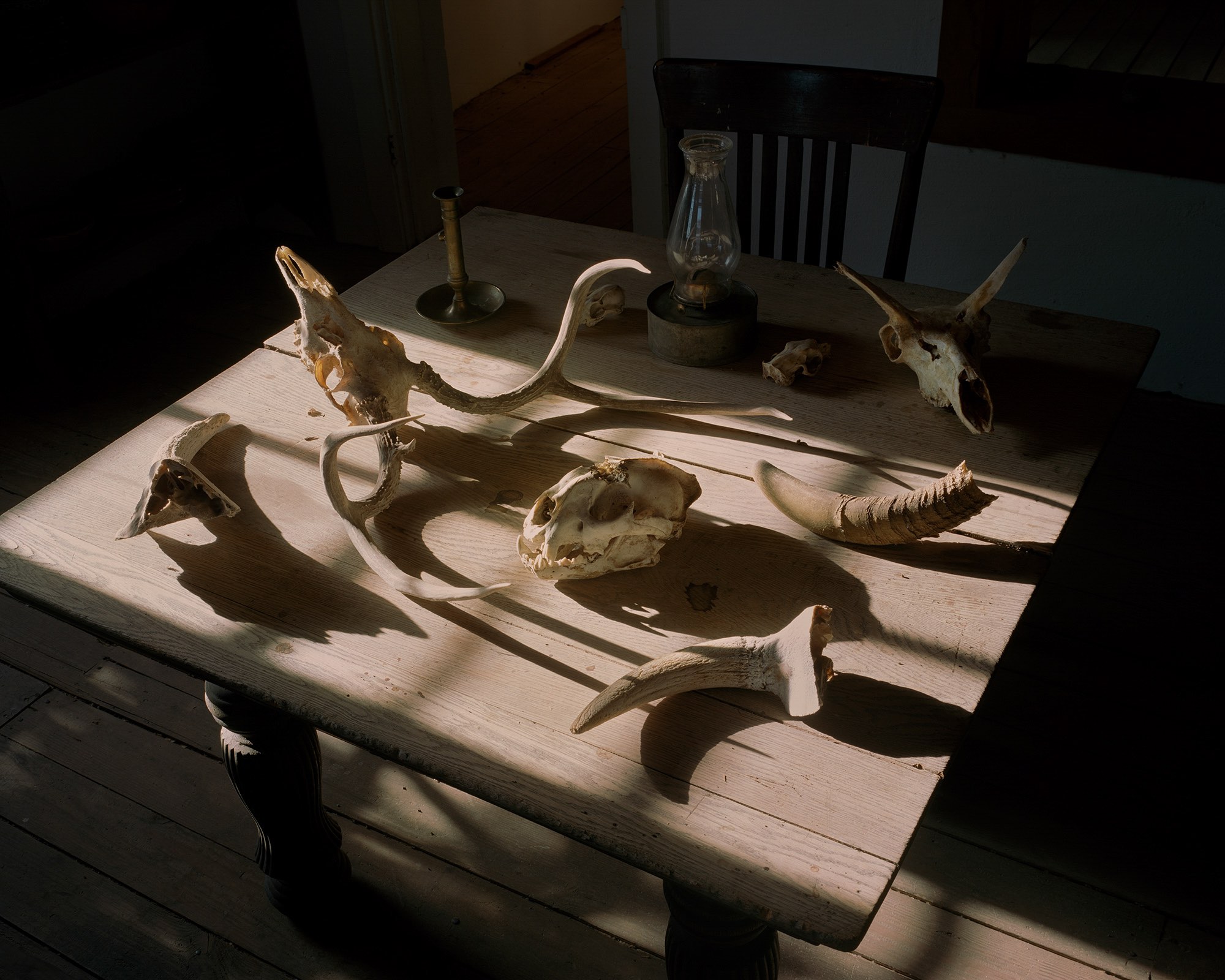
「LIVING DRY」2022
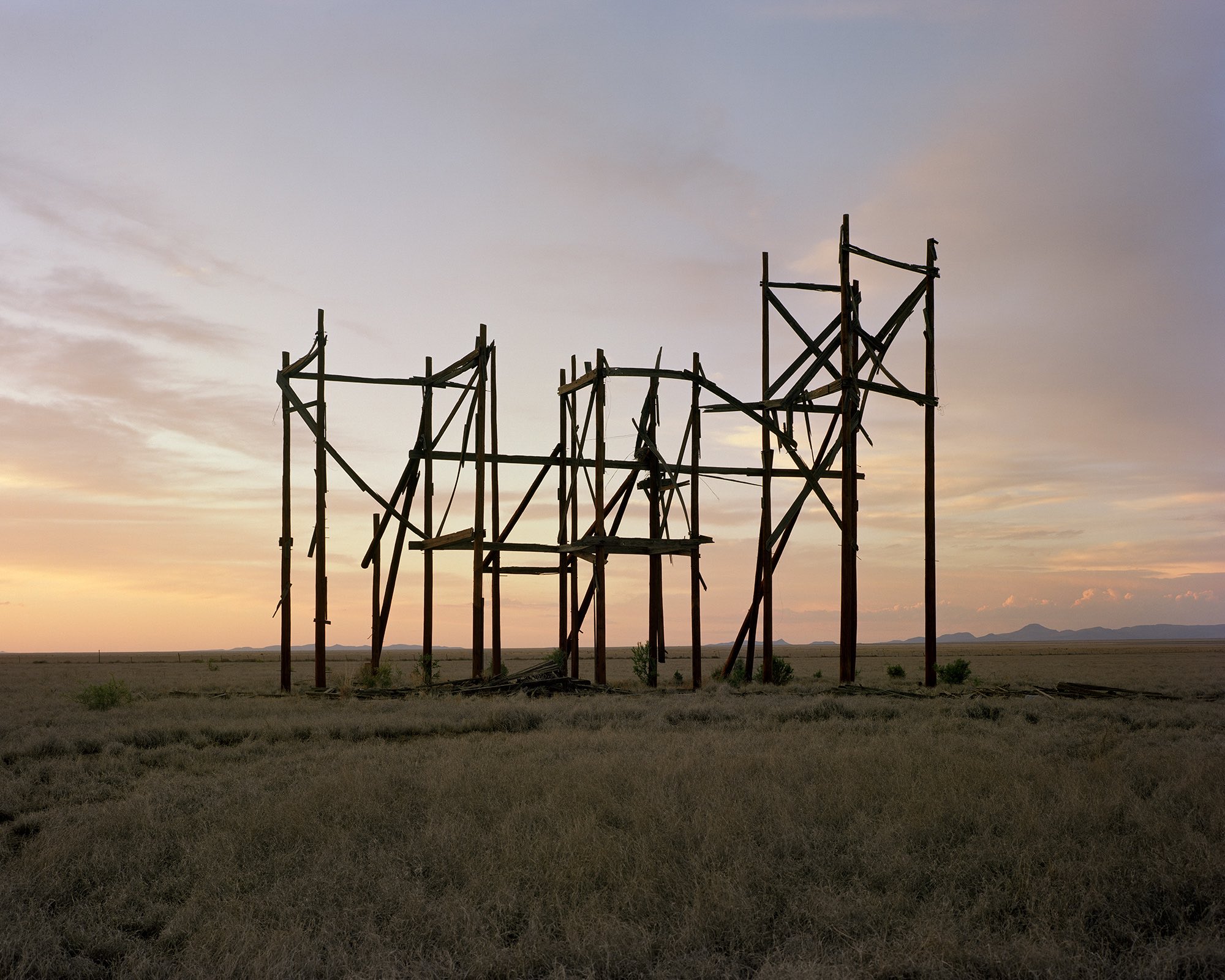
「LIVING DRY」2022
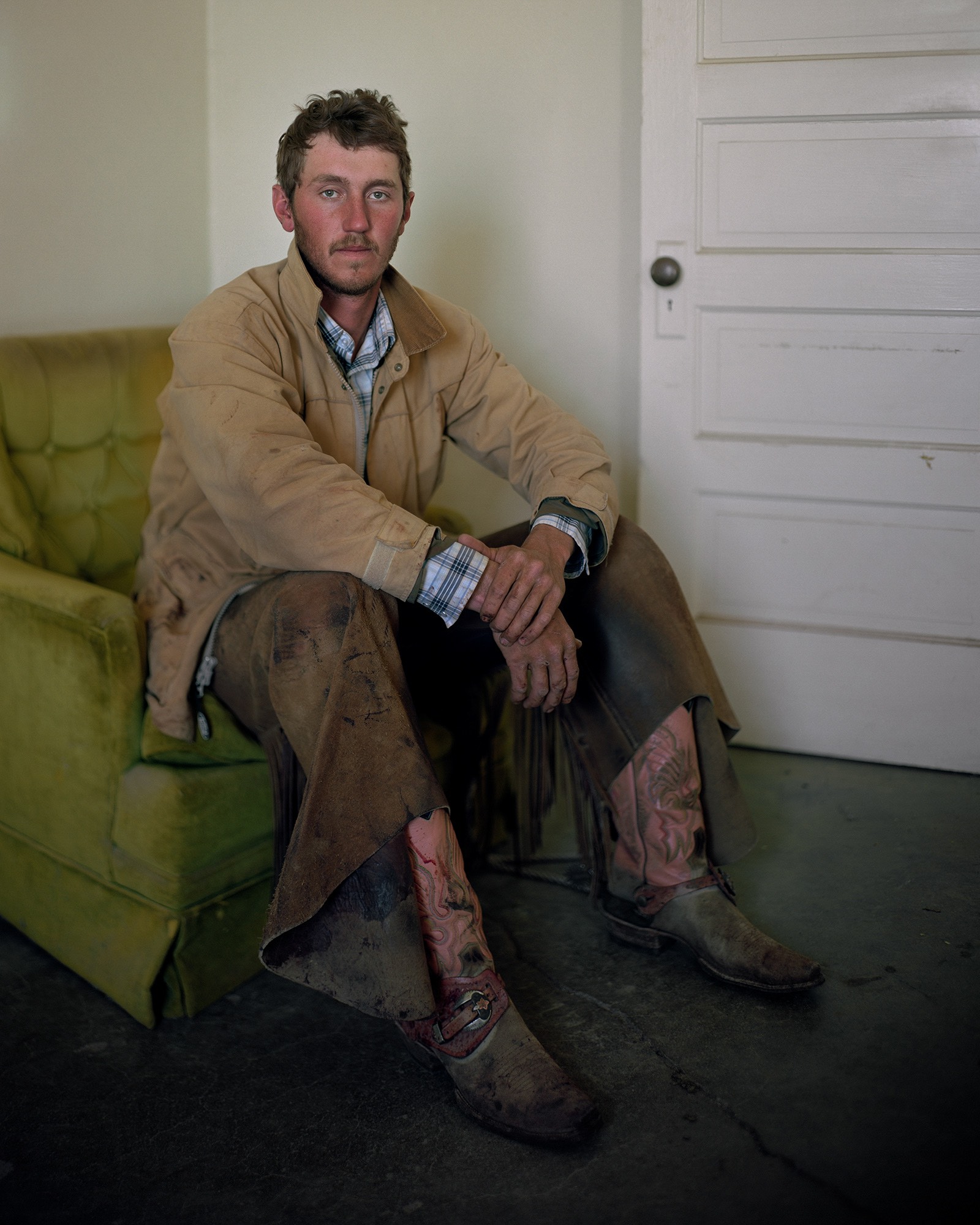
「LIVING DRY」2022
ー いえいえ。あなたのアメリカの西部にまつわる本の執筆を楽しみに待ちたいと思います。あなたがこの道を西を目指して移動したように、ここで描かれた人々もアメリカ大陸を東から西へと目指して歩いているようにみえます。なぜあなたと彼らは西を目指すのでしょうか?彼らは自分に課せられた運命を受け入れているように見えます。私はその姿に感動します。
No, no. I would like to look forward to your writing a book about the western part of the United States. Just as you moved this road to the west, the people depicted here also seem to be walking from east to west on the Americas. Why are you and they aiming to the west? They seem to be accepting the fate imposed on them. I’m impressed by that appearance.
文化的にも歴史的にも、西部はアメリカンドリームの代名詞です。それは豊かな機会に恵まれ、人々が新たなスタートを切ることができる地と考えられてきました。ウォレス・アール・ステグナー(アメリカの作家、環境活動家)は西部を「希望の地勢」と呼びました。その感情と人々の物語が、私を突き動かすのです。
Culturally and historically, the West is synonymous with the American Dream. It has been seen as a land of abundant opportunity, where people can begin anew. Wallace Stegner called the West a “geography of hope.” Something about that sentiment and the stories of people keeps
me going.
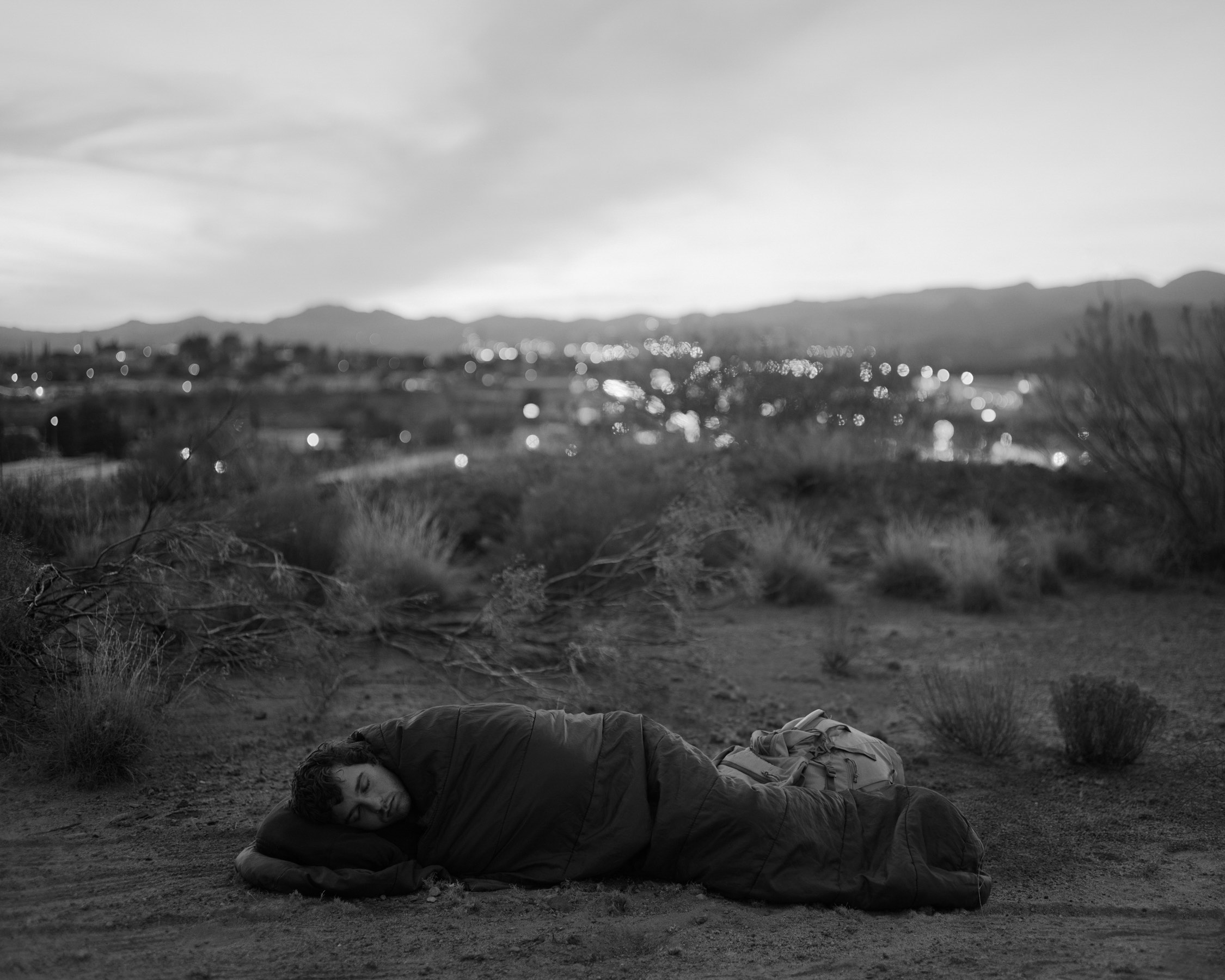
「SONS OF THE LIVING」2024 TRESPASSER。

「SONS OF THE LIVING」2024 TRESPASSER。
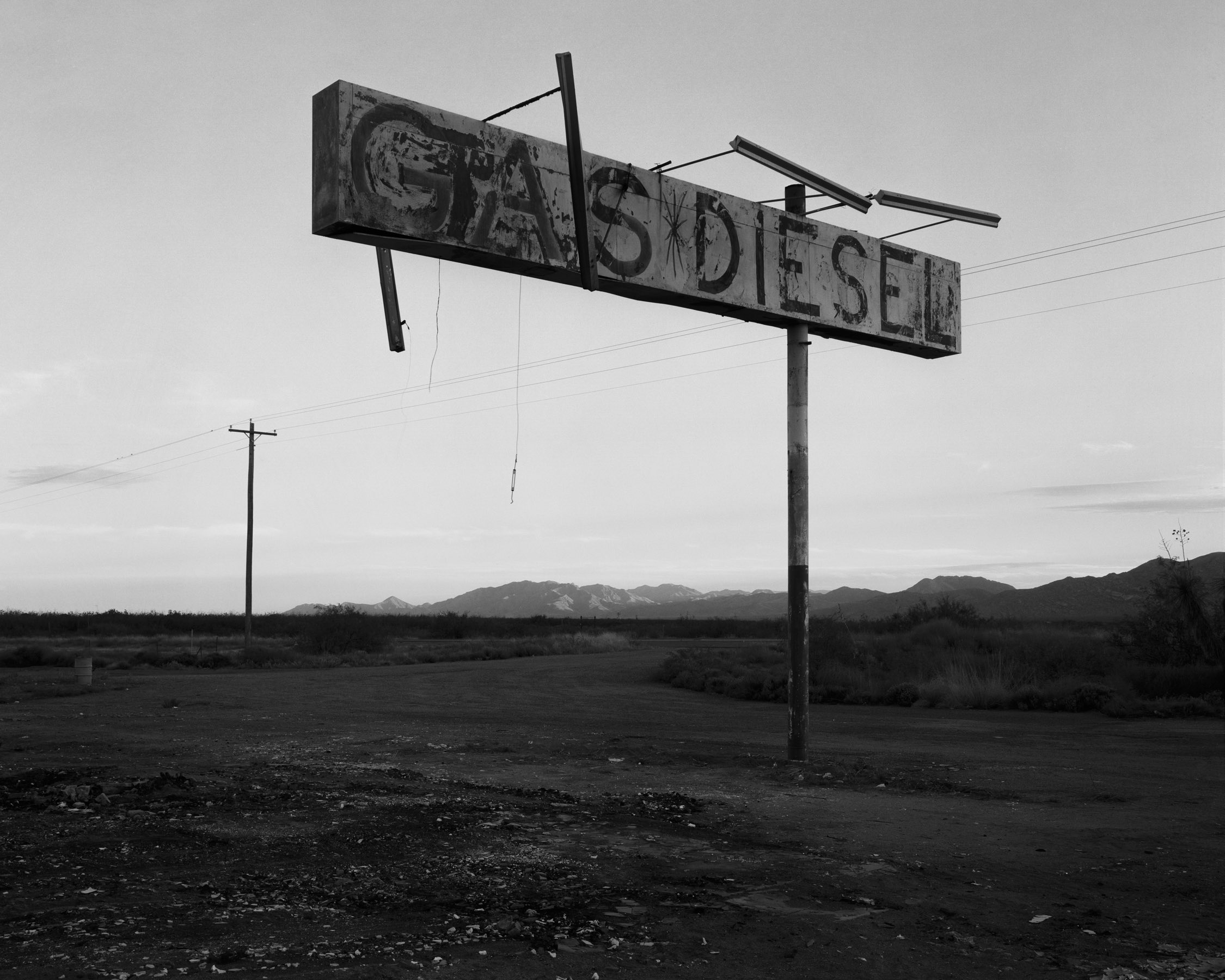
「SONS OF THE LIVING」2024 TRESPASSER。
ー 荒野の道を貫く光の光線が印象的です。なぜ道を走る車ではなく、車を光線で表現したのでしょうか?私にはその光線は18世紀以来この道を歩いてきた人たちの亡霊のようにも見えます。
The rays of light running through the road of the wilderness are impressive. Why did you express the car with a ray instead of a car running on the road? To me, the rays of light also look like the ghosts of those who have been walking this road since the 18th century.
光は、暗く孤独で無関心な宇宙に生き続ける人間の霊的な存在だと私は考えています。
あなたがそれを幽霊のように捉えているのも気に入っています。
I think of the lights as a human spiritual presence that endures in a dark, lonely, indifferent universe. I also like how you think of them as ghostly.
ー のちに『SONS OF THE LIVING』となる撮影旅を行っている時の奇妙なエピソードを教えてください。それは私たちが実際に想像するように美しく、時には危険を伴った行程だったのでしょうか?
Please Tell Me A Strange Episode When You Are On A Filming Trip That Later Became “Sons Of The Living”. Was it a beautiful and sometimes dangerous journey as we actually imagine?
挙げればきりがありません!本当にたくさんの素晴らしい人たちに出会い、それぞれが奇妙な体験をしてきました。このことや旅の思い出について、いくつかエッセイを執筆中で、いつか出版したいと思っています。物語は、ドニーという男性に出会ったことから始まります。彼は、死んで天国へ行き、そして地球に戻ってきたと主張しています。
There are too many to cite! I met so many exceptional people with crazy stories. I’m working on some essays about this and my time on the road, which I hope to publish at some point. It starts with a guy I met named Donnie who claims to have died, gone to heaven, and come back to earth.
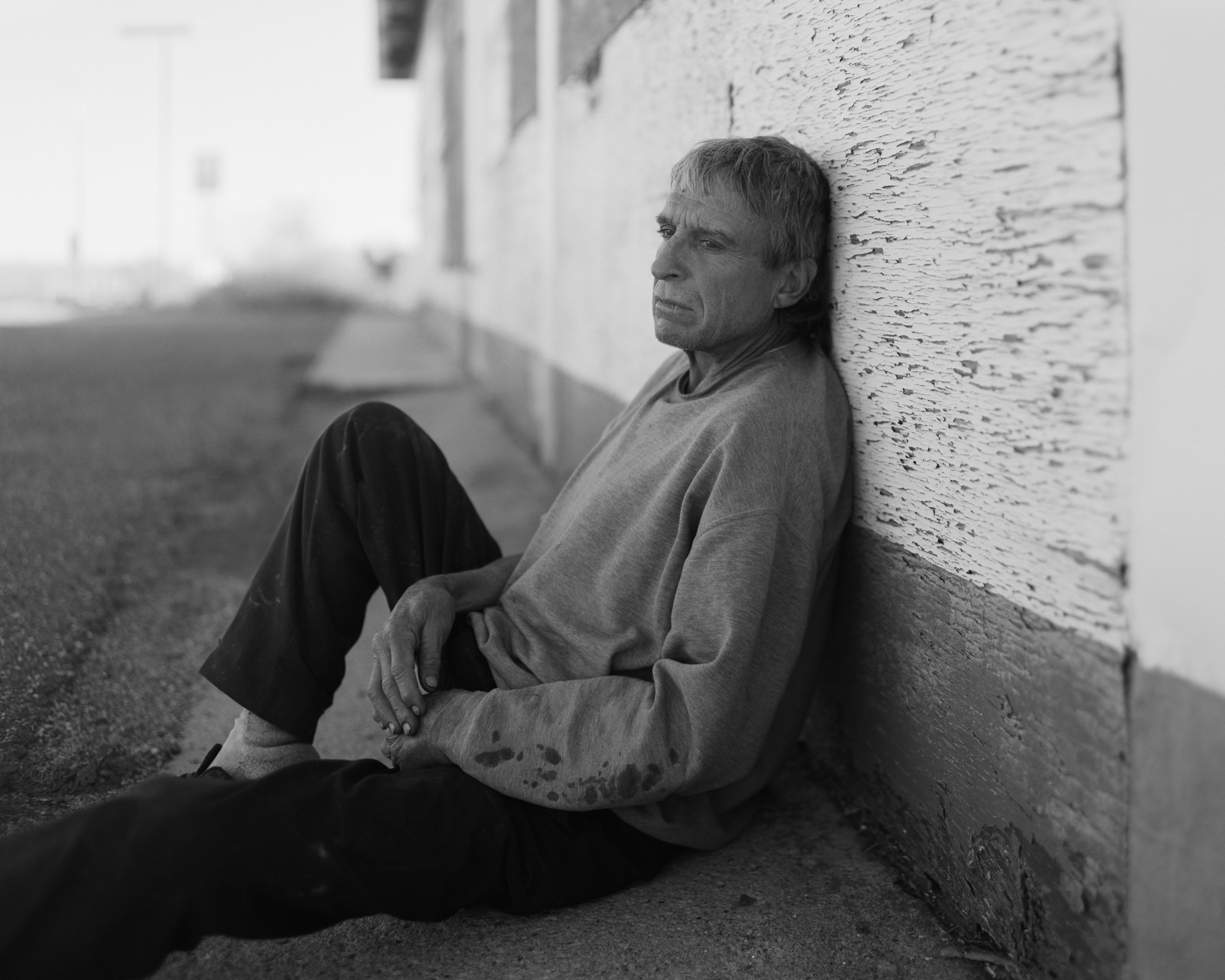
「物語は、ドニーという男性に出会ったことから始まります。」「SON OF THE LIVING」2024 TRESPASSER。
ー わお!そのエッセイ本の上梓も楽しみでなりません。さて、あなたの写真にとって”ランドスケープ”とはどのような意味をもつのでしょうか?
Wow! I’m also looking forward to the publication of that essay book. Well, what does “landscape” mean to your photography?
それは先ほど話していたことと深く関係しています。風景には一種の神話的な重みがあり、土地は人間の経験を映し出す鏡となります。私は山の輪郭や広大な平原の広がりだけに興味があるわけではありません。それらの場所が歴史、記憶、そしてそこで暮らしてきた人々の生活について示唆するものに惹かれるのです。ですから、風景は単なる風景ではなく、証拠であり、そして願わくばある種の詩でもあるのです。優美さを持ちながらも、産業、放棄、苦闘、そして回復力の痕跡を帯びています。丘陵に切り開かれた鉱山道や遠くに見える風化した住居は、どんな肖像画にも劣らず、人々の願望や苦難を物語ることができます。ですから、私が土地を撮影するとき、私はその土地を舞台であると同時に、それ自体が登場人物であるかのように見ています。風景は物語を秘め、崇高さと悲劇を映し出し、そこに属する人々、あるいは疎外感を抱く人々と切り離すことのできない存在です。
その意味で、私にとって「風景」は常に土地そのもの以上のもの、つまり私たち自身の存在を象徴するものなのです。
It has a lot to do with what we were talking about earlier. Landscape holds a kind of mythic weight, and the land becomes a mirror for human experience. I’m not only interested in the contours of mountains or the sweep of open plains. I’m drawn to what those places suggest about history, memory, and the lives of the people who’ve lived among them. So it’s not just scenery – it’s evidence and hopefully a kind of poetry. It has grace but also carries vestiges of industry, abandonment, struggle, and resilience. A mining road cut into a hillside or a weathered dwelling in the distance can say as much about aspiration and hardship as any portrait. So when I photograph the land, I’m looking at it both as a stage and as a character in its own right. It holds stories, it reflects the sublime and the tragic, and it’s inseparable from the people who belong to it or feel estranged from it. Landscape, in that sense, is always about more than the land itself. It’s about us.
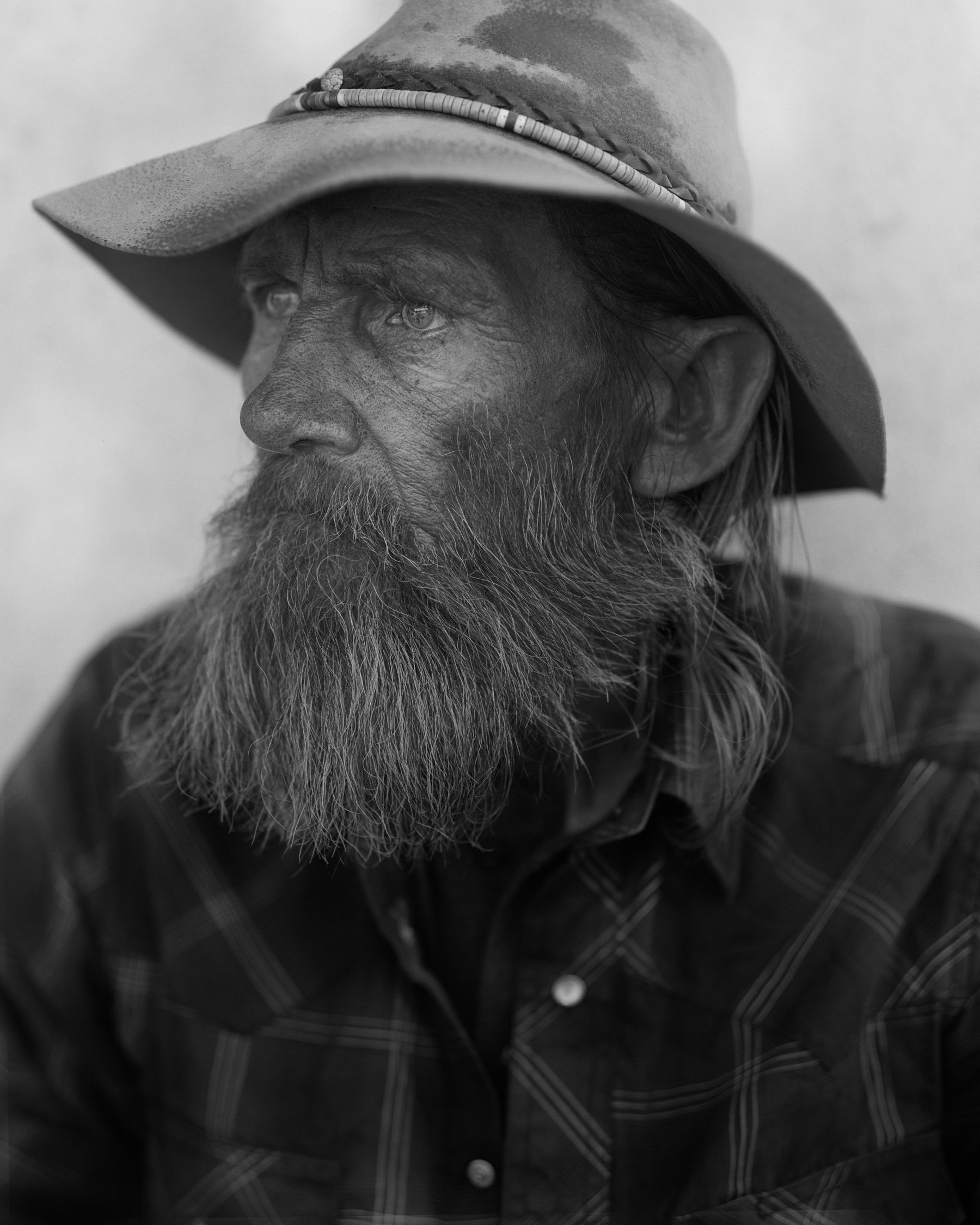
「SONS OF THE LIVING」2024 TRESPASSER。
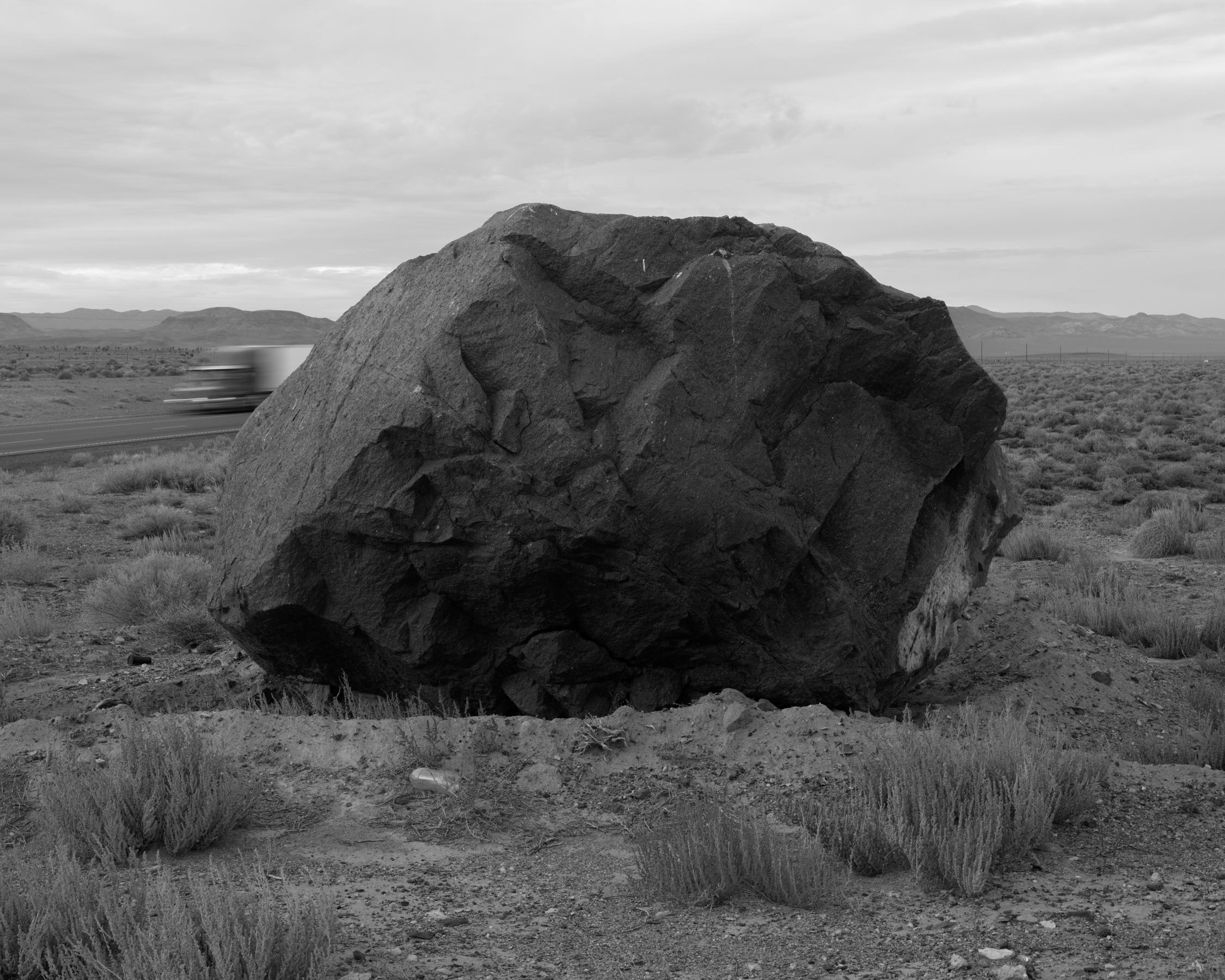
「SONS OF THE LIVING」2024 TRESPASSER。
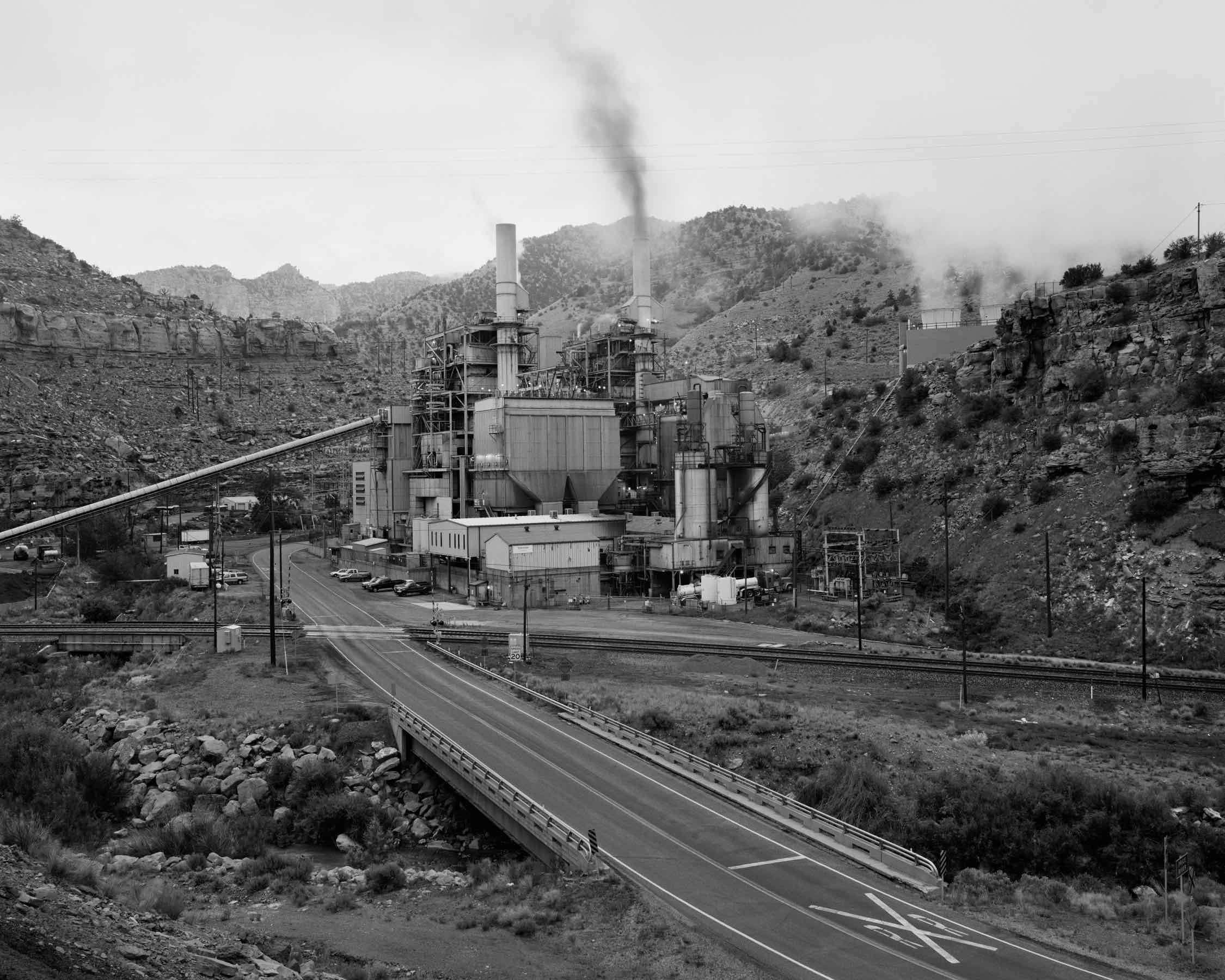
「SONS OF THE LIVING」2024 TRESPASSER。
ー あなたがいま話したことはあなたという写真家が自らの体験から紡ぎ出した素晴らしいストーリーであり、写真家がアメリカ西部の写真を撮る時の本質的な部分の一断面を表していると思います。あなたにとって、カラーで撮ることと白黒で撮ることの違いを教えてください。カラーは現実的で、白黒はそこにある現実をより際立たせているように私は感じます。
What you just said is a wonderful story that you, a photographer, spun from his own experience, and I think it represents a cross-section of the essential part when photographers take pictures of the western United States. What is the difference between shooting in color and shooting in black and white for you? I feel that color is realistic, and black and white make the reality there stand out more.
私もそう思います。私にとって、カラーと白黒のどちらを選ぶかは、多くの場合、より現実的で、地理的な条件に結びついています。砂漠では、光が強烈なので白黒を好みます(『SONS OF THE LIVING』のように)。テキサス州中部の撮影でも白黒を好みます。夏は圧倒的に緑に覆われ、冬は裸の木や木の枝が、色がない分、より強い存在感を放ちます(『GOOD GODDAMN』、『COUNTY ROAD』のように)。しかし、標高の高いロッキー山脈では、空や雲が光を拡散させ、パレットを柔らかくしてくれるので、カラーで作業します(『Grays the Mountain Sends』のように)。
I like that idea. For me, the choice between color and black and white is often more practical and tied to geography. In the desert, I prefer black and white because the light is so harsh (as in Sons). In central Texas, I also lean toward black and white—the summers are overwhelmingly green, and in winter the bare trees and sticks take on a stronger presence without color (Good Goddamn, County Road). But in the high-altitude Rockies, I work in color, since the skies and clouds often diffuse the light and soften the palette (Grays the Mountain Sends).
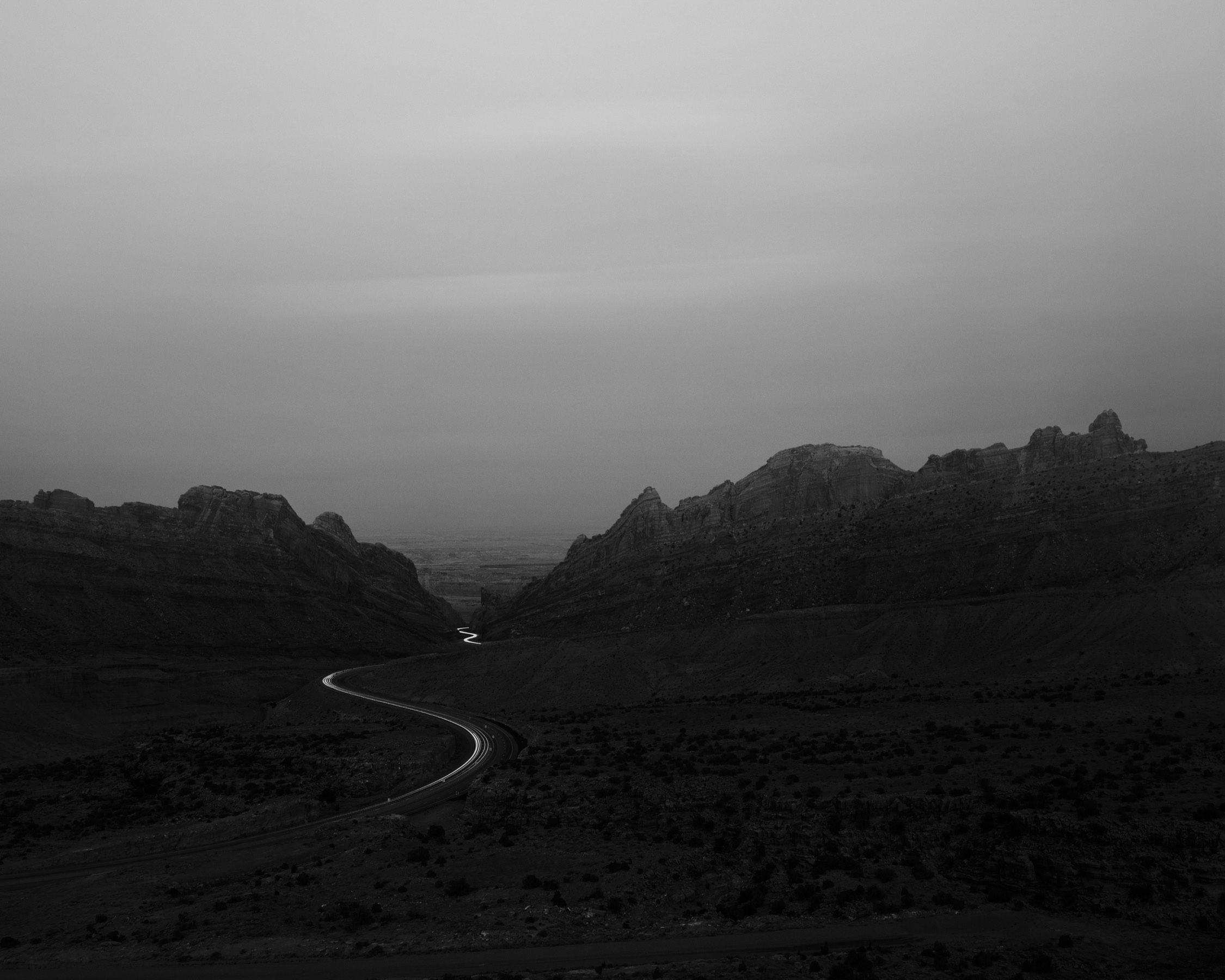
「SONS OF THE LIVING」2024 TRESPASSER。
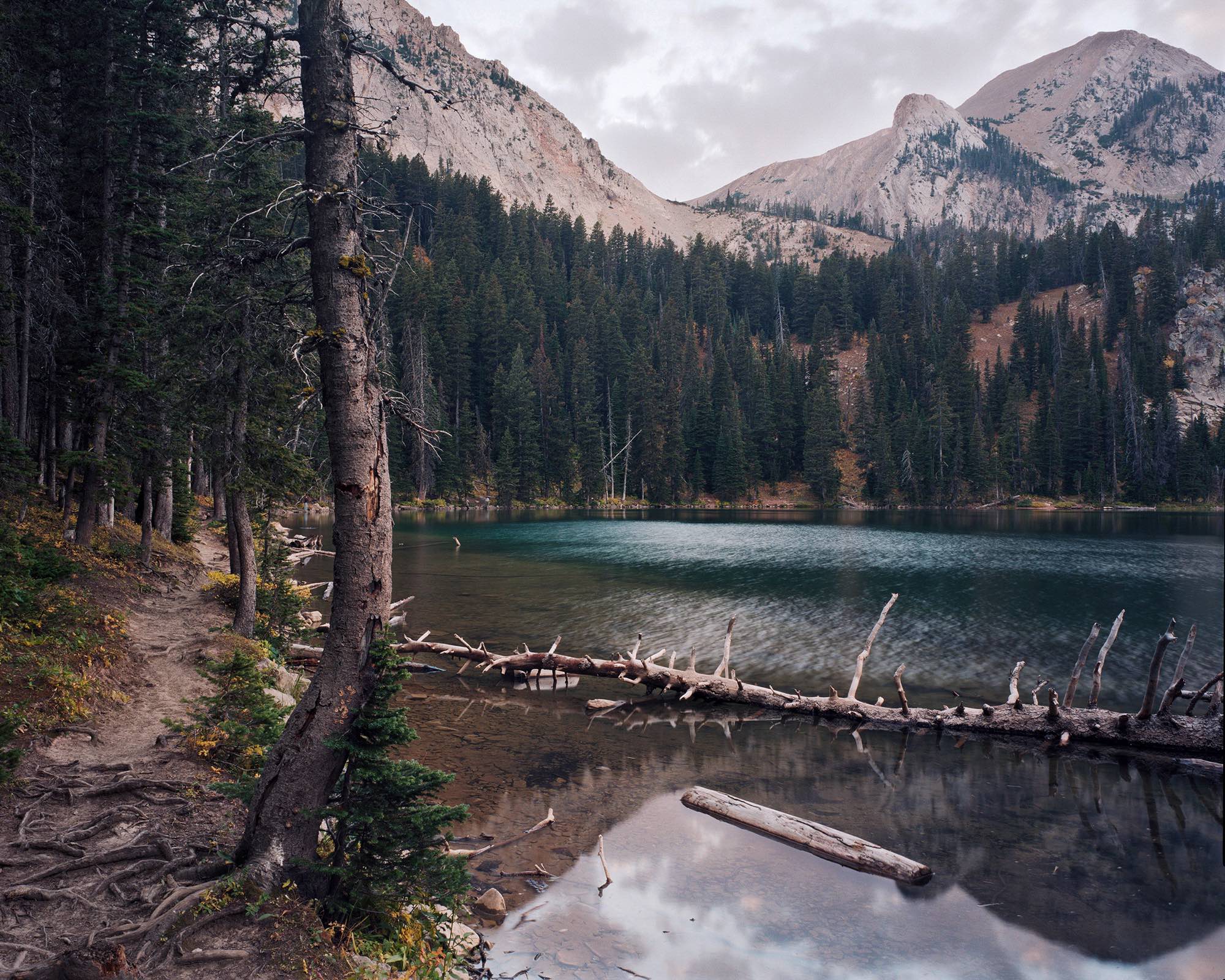
「標高の高いロッキー山脈では、空や雲が光を拡散させ、パレットを柔らかくしてくれるので、カラーで作業します」「Grays The Mountain Sends」2013 Silas Finch Foundation。
ー なるほど。光や環境があなたの撮影をする時の心持ちに影響をあたえるのですね。
東京で今回あなたの作品を展示することが出来て私たちはとても興奮しています。今回私はあなたの膨大なロードトリップの作品の中からいくつかのキーワードを選び展示する作品を選びました。
それはアメリカ開拓の歴史とも繋がる「道」。その道の上に流れる車のヘッドライト。そのヘッドライトは私たちの文明の繁栄を表しています。そして送電線に導かれて、人々が生きる場所。そしてそこで生きる人々の姿は子供の頃に見た夢の中に今も生きているようで現実感を失っています。インテリア写真にもアメリカの今という現実が写っています。そして荒野に立つ看板に、私は祈りのような崇高さを感じました。
あなたがSons Of The Livingという本を編集する時に考えていたことを教えてください。(風景について、アメリカの歴史と未来と現実について、写真について、そこで生きる人々について、など)
I see. Light and the environment affect your mind when you shoot. We are very excited to be able to exhibit your work in Tokyo this time. This time, I chose some keywords from your huge road trip works to display.
It is a “road” that is also connected to the history of American development. The headlights of the cars running on the road. The headlight represents the prosperity of our civilization. And a place where people live, led by power lines. And the figures of the people living there seem to be still alive in the dreams they had in their childhood, and they have lost their sense of reality.
Interior photos also show the reality of America now. And on the signboard standing in the wilderness, I felt the sublime like prayer.
Please tell me what you were thinking when you edited the book “Sons Of The Living”. ( About the scenery, about the history, future and reality of the United States, about photography, about the people living there, etc.)
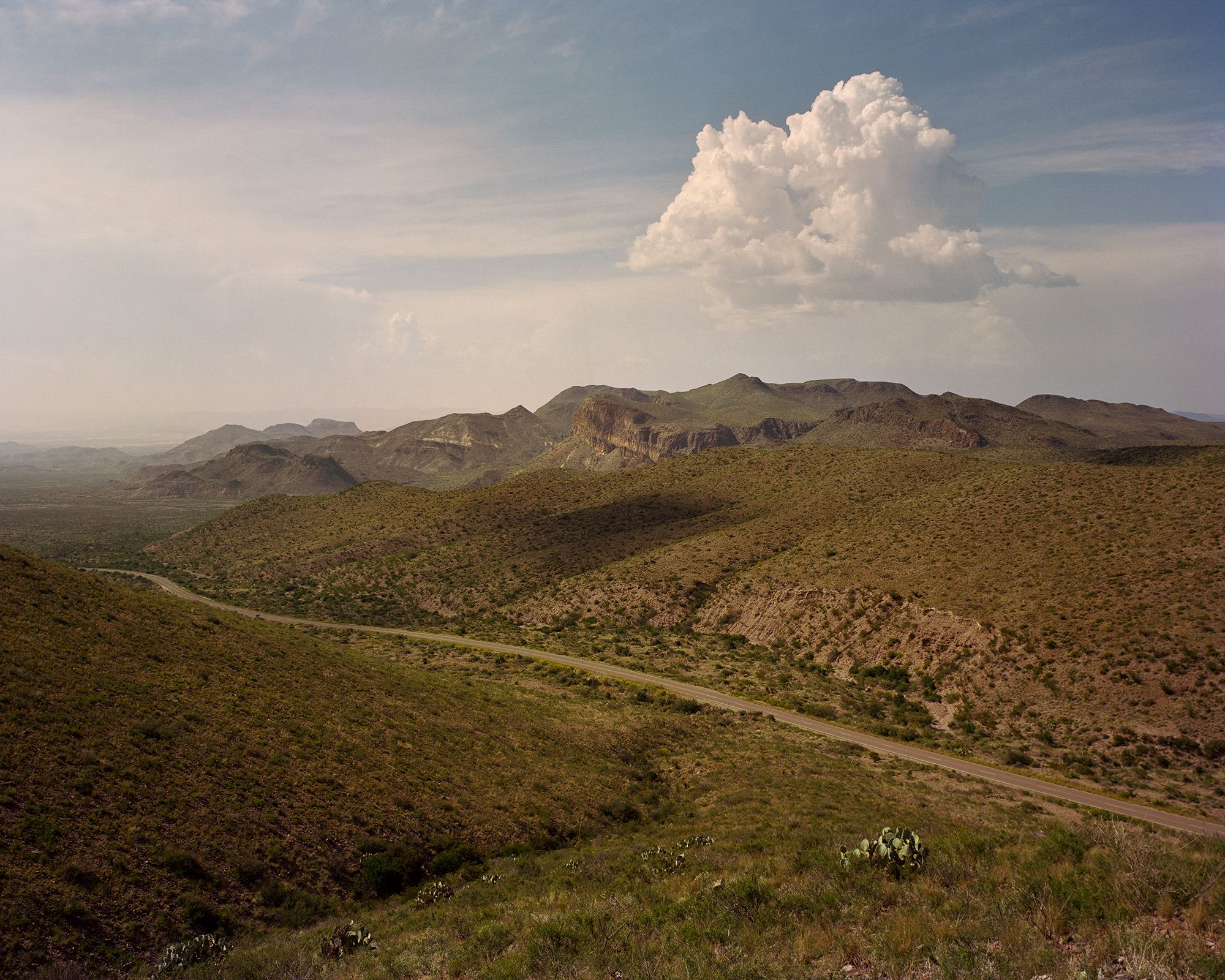
「LIVING DRY」2022
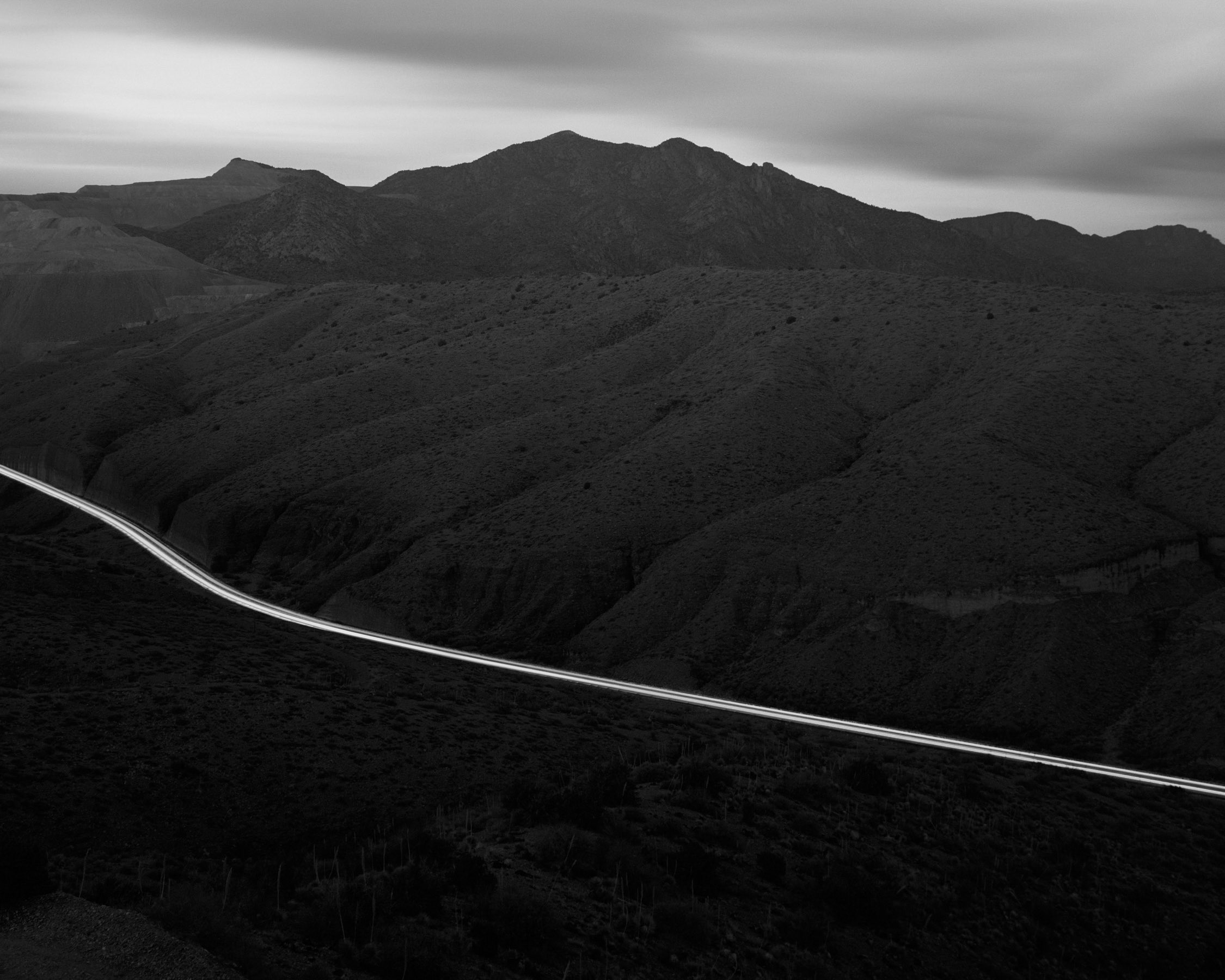
「SONS OF THE LIVING」2024 TRESPASSER。
『SONS OF THE LIVING』を編集していたとき、アメリカやその未来について明確な見解を示そうとしていたわけではありません。ただ、写真を通して、場所と時間についての一種の瞑想を表現したいと考えていました。タイトルは聖書の言葉(ホセア書1章10節とローマ人への手紙9章26節。補足: 異邦人が神の民、神の子となることを示唆するという共通のテーマを持つ聖書の記述、とのこと)から来ており、本書全体を通して、聖書の言葉遣いについて考えていました。それは、「亡命」、「放浪」、そして「意味の探求」についてどのように語られているかです。風景が大きな重みと比喩を帯びるアメリカ西部では、こうしたテーマは心に響きます。
When I was editing Sons of the Living, I wasn’t trying to make a definitive statement about America or its future, but I wanted the pictures to add up to a kind of meditation on place and time. The title came from scripture (Hosea 1:10 and Romans 9:26), and throughout the book I was thinking about biblical language – how it speaks of exile, wandering, and searching for meaning. Those themes feel at home in the American West, where the landscape carries so much weight and metaphor.
ー 私にとって印象的な写真があります。髭を生やした男が砂漠の上で横たわっている写真です。私はこの写真から深い悲しみと絶望を感じました。それは、経済的にも不安定な社会に住む人々の心理状態を表しているように私は理解をしました。これは実際どのようなシチュエーションで撮影されたのでしょうか?
There is an impressive photo for me. This is a photography of a man with a beard lying on the desert. I felt deep sadness and despair from this picture. I understood that it represented the psychological state of people living in an economically unstable society. What kind of situation was this actually filmed?
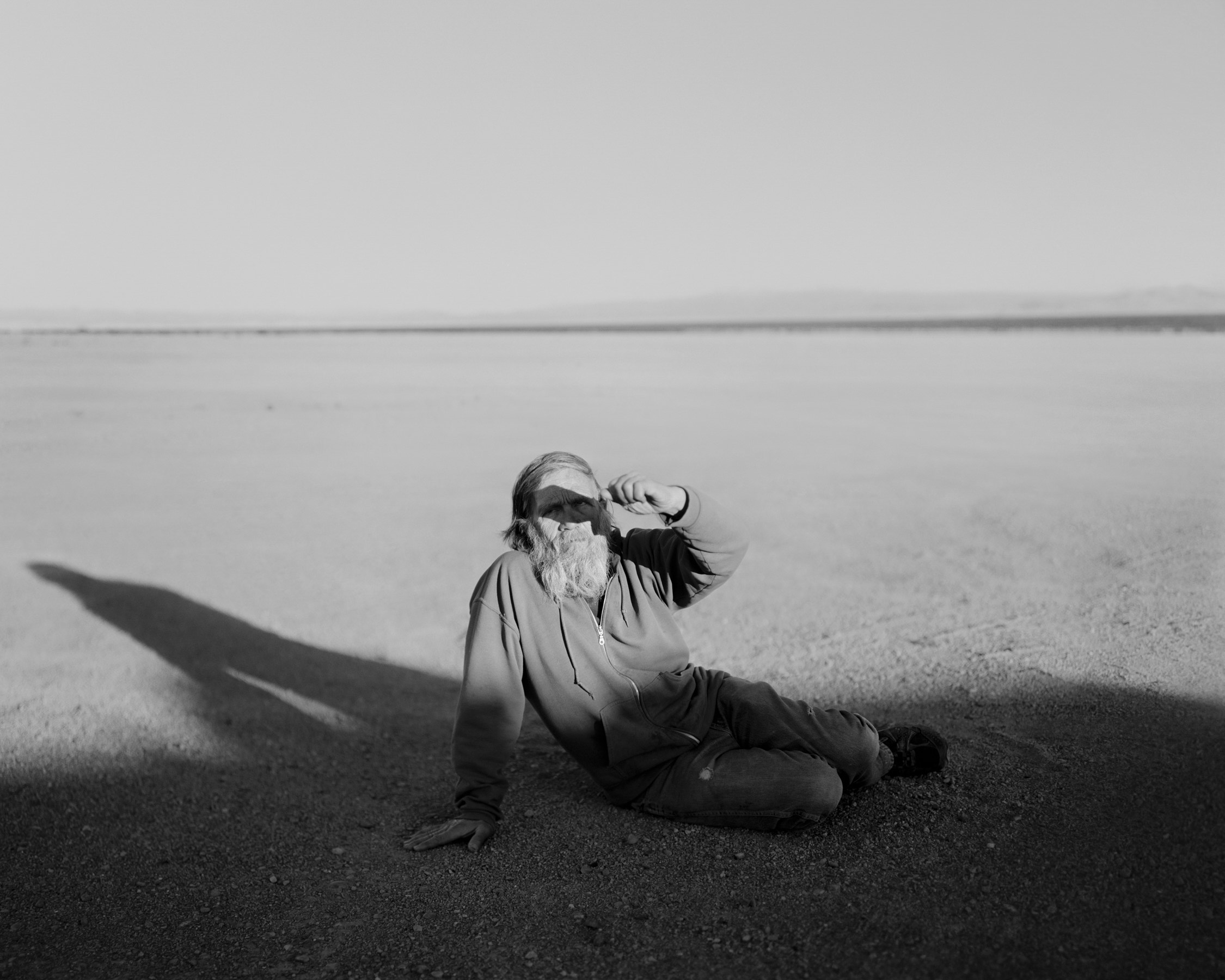
「ウェインという名の彼は、ジョン・ウェインの真似をよくします。」「SON OF THE LIVING」2024 TRESPASSER。
それはウェインという名の男です。彼はトラックとRVトレーラーで暮らしています。フレームには入っていませんが、彼に影を落としていました。彼は何十年も路上生活を送っています。ウェインという名の彼は、ジョン・ウェインの真似をよくします。「いつかそうなる日が来るぞ、巡礼者め」と彼は言っていたことをよく覚えています。ウェインは年老いていますが、いつか自分の土地を買って自給自足をして余生を静かに一人で暮らすことを夢見ています。
That was a guy named Wayne who lives in his truck and RV trailer, which was out of the frame but cast a shadow on him. He had been living on the road for decades. His name is Wayne and he does a good impression of John Wayne. “That’ll be the day, pilgrim,” he told me. Wayne is getting old and dreams to some day buy land where he can grow his own food and live alone peacefully for his remaining years.
ー 彼は片方の腕を陽射しから目を守っているのに、この写真で彼の下半身を影が覆っているのがとても気になっていました。なるほど、そのようなシチュエーションだったのですね。
今、この時代にこのような作品を発表することは大きな意義があることだと私は思います。 写真は今そこにある現実に人々の目を向けさせることができる有効な手段だと思います。かつての偉大な写真家たちがそうしたように、どのような問題意識を持ってあなたは粘り強くこれらの風景とコミュニティを撮影し続けているのでしょうか?(とはいえ、これの作品は美的に美しいということに「尊厳」があると私は思っています。)
He raised his arms to protect his eyes from the sun, but he was very concerned that the shadow covered his lower body in this photo. I see, I’m glad I can understand that. I think it is of great significance to publish such works in this day and age. I think photography is an effective way to make people turn their eyes to the reality that is there now. With what kind of problem awareness do you persistently continue to photograph these landscapes and communities, just like the great photographers of the past did?(However, I believe that there is dignity in the fact that this work is aesthetically beautiful.)
そんな崇高な意図があるとは言いませんよ(笑)。写真は大好きですが、私の作品が本当に大きな変化をもたらすとは信じていません。私が目指しているのは、美しく魅力的な写真を撮ることです。それが何らかの形で世界の役に立つなら、それは素晴らしいことですが、それが私の主な目的だとは言えません。
I wouldn’t claim such noble intentions, haha. I love photography, but I have less faith than ever that work like mine can really change much. What I try to do is make pictures that are beautiful and fascinating. If they happen to help the world in some way, that’s good, but I can’t claim it’s my primary aim.

「HEART LAND」2011
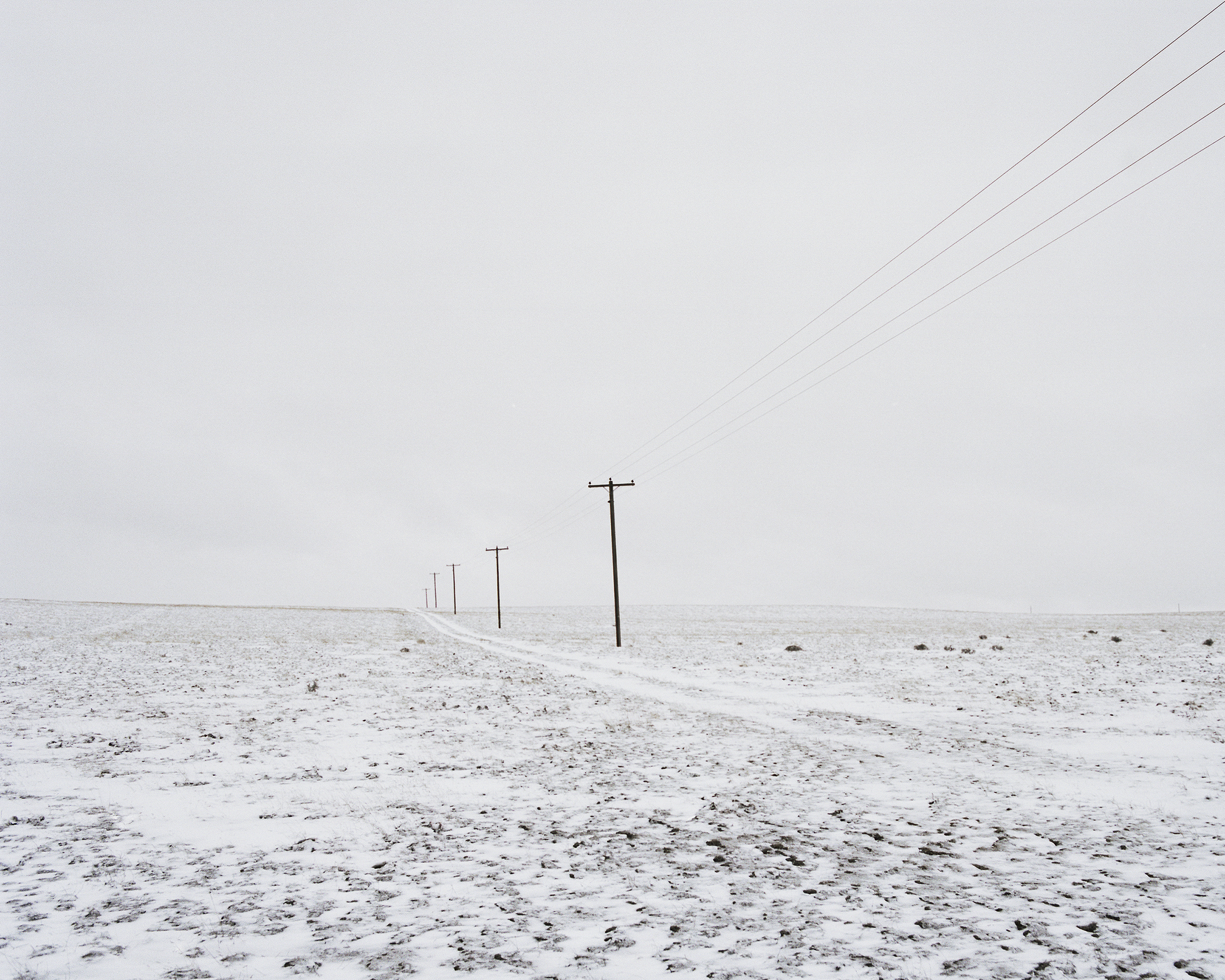
「HEART LAND」2011
ー アメリカ南西部の大地とそこに生きる人々の撮影は今も継続していますか?『SONS OF THE LIVING』はその最終的な物語かもしれませんが、私たちはあなたが描くその物語の続きを見ることは出来るのでしょうか?
Is the filming of the land of the southwestern United States and the people living there still going on?” “Sons Of The Living” may be the final story, but can we see the continuation of the story you draw?
今のところ撮影はしていませんが、この地域が大好きなので、今後もこの方向で作品を作り続けると思います。
I’m not shooting more right now, butI love the region so I imagine I will continue to make work in this vein in the future.
ー それを聞いて安心しました。あなたがMatthew、Codyと運営する出版社であるTRESPASSERから、『GOOD GODDAMN』,
『COUNTY ROAD』、『SONS OF THE LIVING』という優れた仕事を発表しています。アーティストであり出版社でもあることは、あなたの創作にどのような影響をもたらしていますか?
I was relieved to hear it directly from your mouth. From Trespasser, the publisher you run with Matthew Genitempo and Cody Haltom, you have published excellent work such as “Good Goddamn”, “County Road”, and “Sons Of The Living”. How does being an artist and a publisher affect your creation?
正直、それは大変な仕事です。TRESPASSERはとても小さな会社ですが、それでも撮影に費やす時間がかなりあります。将来的には、その双方に対してもっとバランスを取れるようになりたいですね。とはいえ、クリエイティブな面ですべてをコントロールし、本の売上で利益を得られるのは良いことです。でも、全体としては、他の人たちと密接に仕事をし、彼らのイメージやアイデアを丁寧に扱うことで、アーティストとしての仕事への敬意が深まります。ある意味、出版の仕事は私をより思慮深い写真家にし、写真家であることは私をより共感力のある出版者にしてくれるのです。
Honestly it’s a bit distracting! Trespasser is a very small business, but even so it takes a lot of time away from shooting. In the future, I’d like to learn to balance things better. That said, I like having control over everything creatively and getting the book sale profits. But overall, working closely with others, handling their images and ideas with care, reinforces my respect for what we do as artists. In a way, publishing makes me a more thoughtful photographer, and being a photographer makes me a more empathetic publisher.
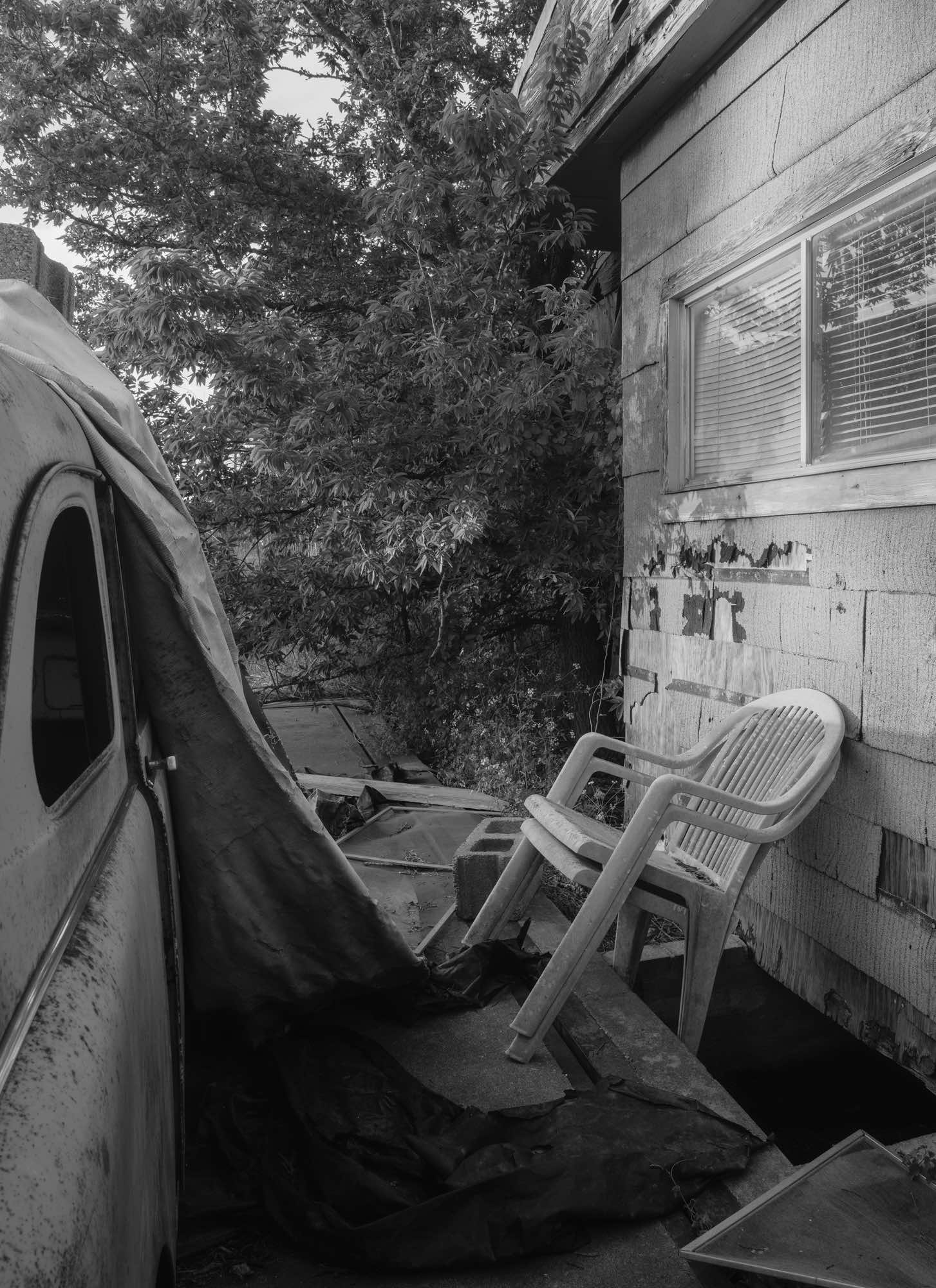
「COUNTY ROAD」2023
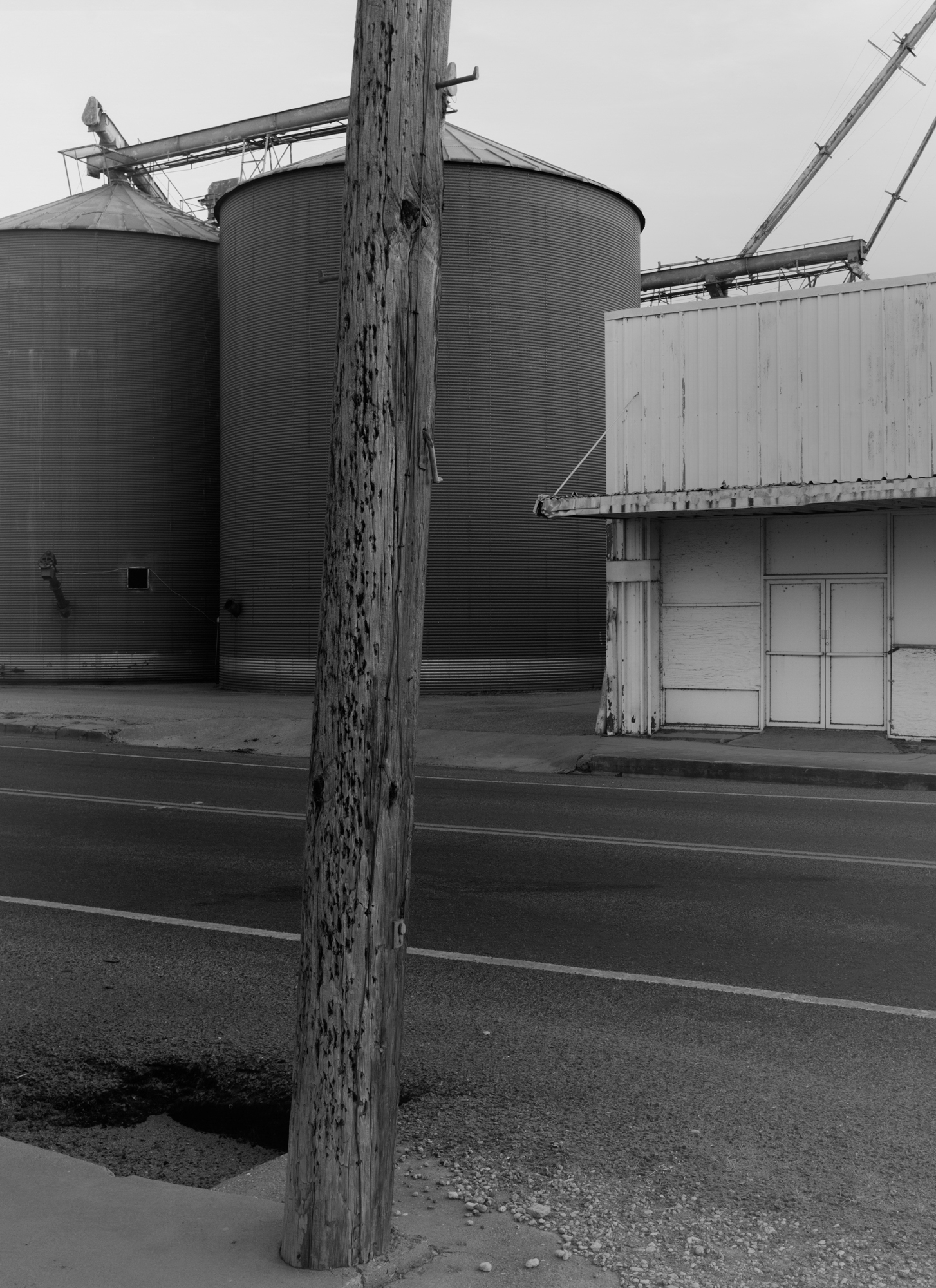
「COUNTY ROAD」2023

「COUNTY ROAD」2023
ー なるほど。共感力のある出版者とは良い言葉ですね。あなたのレーベルメイトで同郷でもあるMatthew Genitempoもそうですが、同世代のアーティストとの連帯について少し教えてください。あなたはワークショップを行って若い世代のアーティストにインスピレーションを与えたり、Henry O Headという若いアーティストの才能の発掘にも貢献しています。彼らと共有していることを教えてください。
Your label mate, Matthew Genitempo, is the same, but please tell me a little about cooperation with artists of the same generation. You conduct workshops to inspire younger-generation artists and contribute to the discovery of the talents of young artists named Henry O. Head.
Please tell me what you share with them.
マシューのような同世代の人たちと仕事をする良いところは、参考にしたもの、影響を受けたもの、そして今の世界の見方といった点で共通点があることだと思います。私たちは同じものを愛しているんです。だからこそ、気楽で理解し合えるんです。ヘンリーのような若い人たちと仕事をするのは、その感覚とは少し異なりますが、同じようにやりがいがあります。私はすべての答えを持っているふりをするつもりはありませんが、自分が学んだこと、犯した失敗、そして絵を描くことや作品を発表することについてどう考えているかをオープンに話すようにしています。ワークショップでは色々なことを話しますが、自分がワクワクするような作品を作り、自分の好奇心に忠実であり続けるように伝えています。同時に彼らと過ごす時間は私自身をより研ぎ澄ましてくれます。若いアーティストたちが新しい作品作りに熱中しているのを見るのは、本当に刺激的です。私自身は冷めているわけではありませんが、大抵の場合、あの頃のような熱意を持ち続けているわけではないのです。
I think what’s nice about working with people around my own generation, like Matthew, is that we share some common ground in terms of references, influences, and the way we see the world right now. We just love all the same stuff. There’s an ease and an understanding that comes with that.
With younger people, like Henry, it’s different but equally rewarding. I don’t pretend to have all theanswers, but I try to be open about what I’ve learned, what mistakes I’ve made, and how I think
about making pictures and putting work into the world. I say a lot of different things in workshops, but I tell people to make the kind of work that excites them, and to stay true to their own curiosities. At the same time, spending time with them sharpens me. It’s inspiring to see younger artists excited about making new work. I’m not jaded, but I don’t have that same sense of enthusiasm on most days.
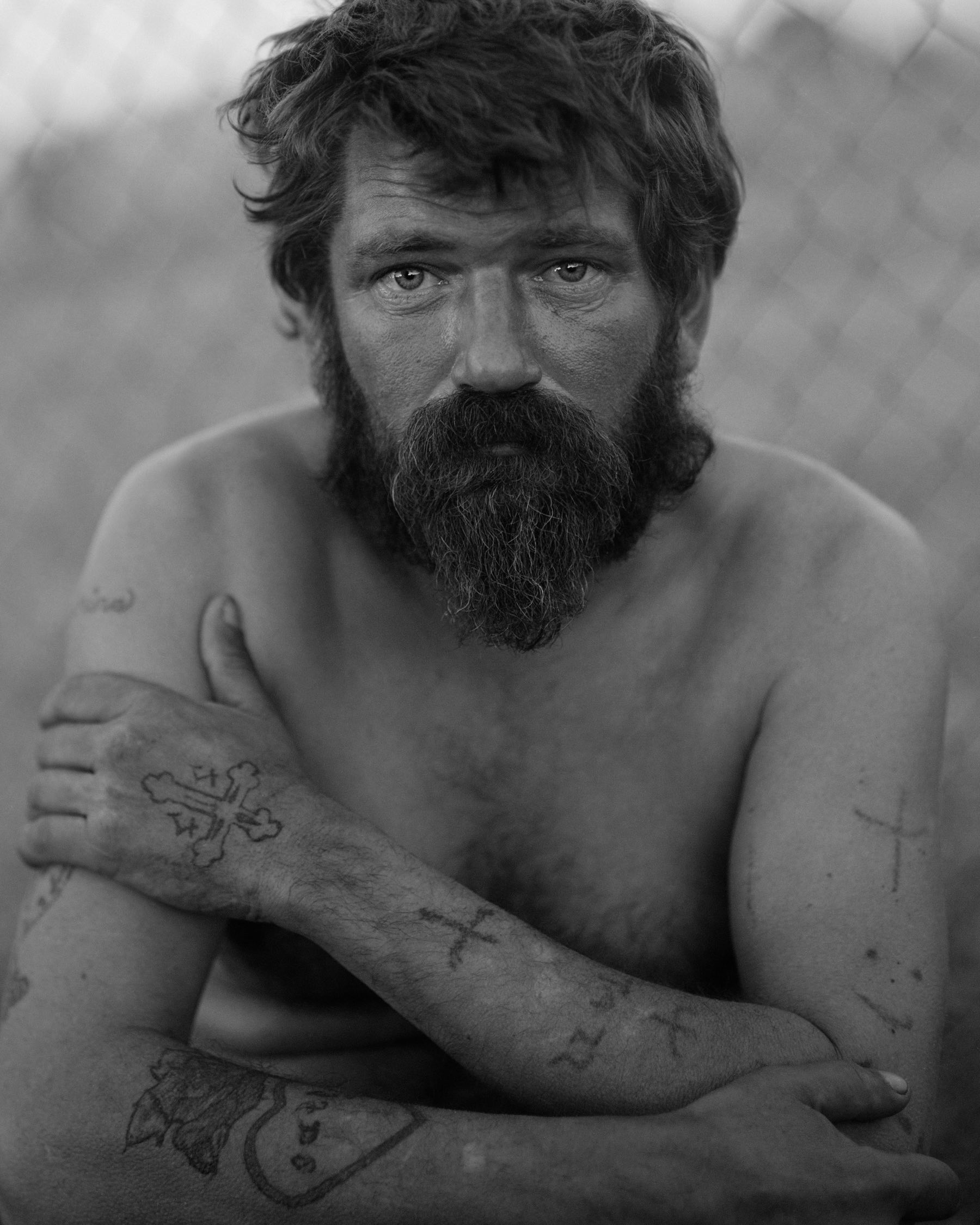
「SONS OF THE LIVING」2024 TRESPASSER。
ー 私は現代アメリカ写真やその文化を尊敬し、それが作り出したものを深く愛しています。先ほど、あなたもおっしゃっていましたが、私はあなたやあなたの仲間の作品と同じくらい、偉大なロバート・アダムスの作品と彼の自然や環境、家族への向き合い方に共感しています。あなたは彼と交流があると聞きました。Adamsの作品についてのあなたの印象を教えてください。
I respect modern American photography and culture, and I deeply love what it has created. I sympathize with Robert Adams’s photography and the way he faces nature, the environment, and the family as well as the works of you and your friends. I heard that you interact with him. Please tell me your impression of Adams’ work. Please tell us the physical difference between the era Adams filmed and the modern time you are photographing.(I met Joshua Chuang in Tokyo last year and talked a little about Robert Adams’ present.)
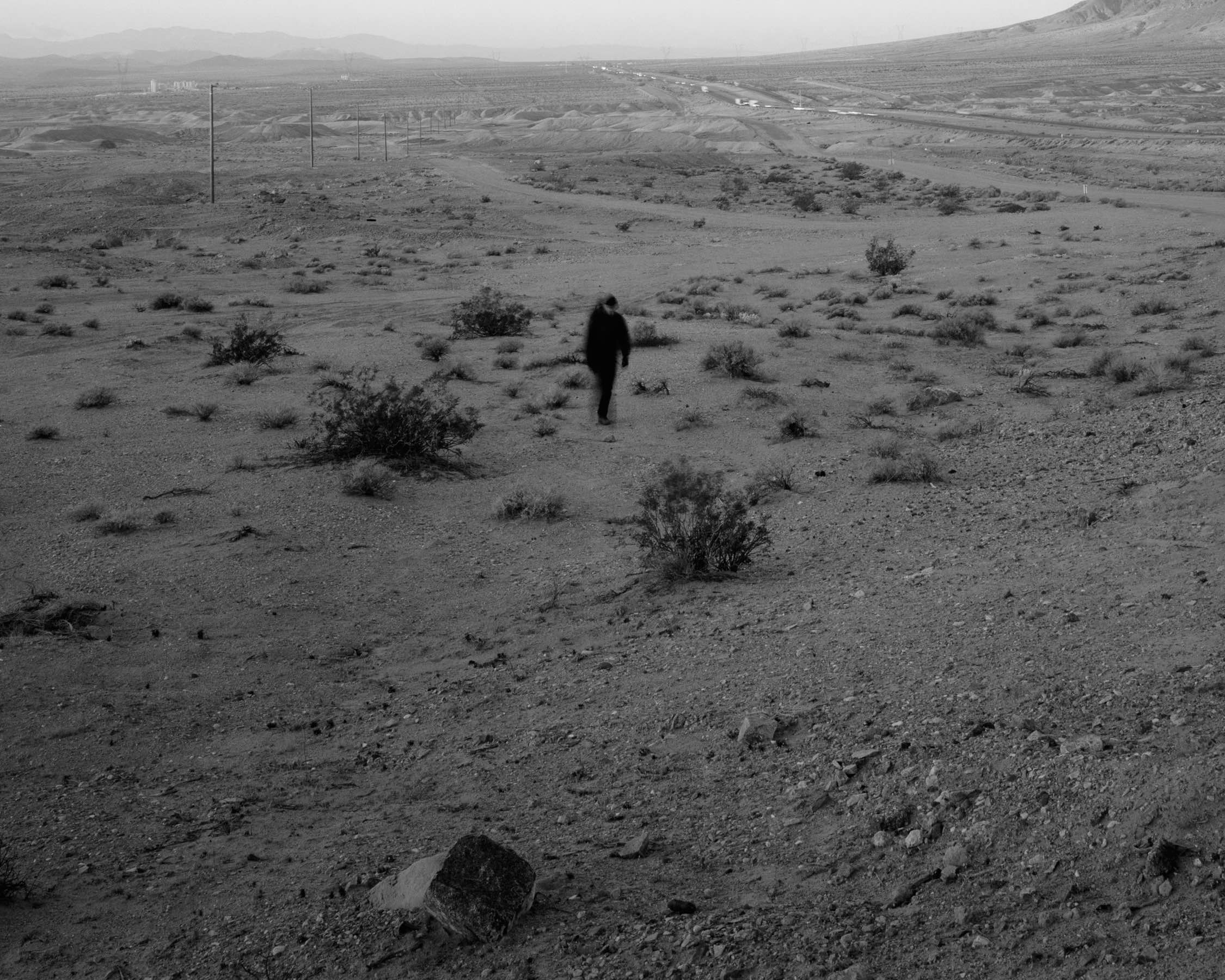
「SONS OF THE LIVING」2024 TRESPASSER。
ええ、ロバート・アダムスと初めて会ったのは2014年のオレゴン州アストリアでした。それ以来、数年ごとに手紙で連絡を取り合っています。実際に会った時は穏やかな方でしたが、私にとってそれは忘れられない思い出です。彼の立ち居振る舞いには、作品によく見られる穏やかで透明感のある雰囲気があります。彼は間違いなく、私の永遠のお気に入りの写真家の一人です。先ほども触れましたが、彼の作品が世界を観察する手法、その繊細さと忍耐力は、人類が直面している様々な困難を考えると、特に今、とても重要だと感じます。彼の作品は、私たちの周りにあるものの美しさと脆さの両方を私に気づかせてくれるのです。
Yeah, I first met Robert Adams in Astoria, Oregon, back in 2014, and since then we’ve kept in touch through letters every few years. Meeting him in person was quiet but unforgettable. There’s a kind of calm clarity in the way he carries himself that mirrors his work. He’s easily one of my all-time favorite photographers. I’ve mentioned him above, but the way his images observe the world – the subtlety and patience – that feels especially important right now, given everything we’re facing as a species. His work helps me reckon with both the beauty and fragility of what’s around us.
ー 私はあなたが偉大なアメリカ写真の作家であるロバート・アダムスと心を通わせていることを聞いてひどく感動しています。日本ではあなたの作品はストレートフォトグラフィの歴史を正統に継承するものと評価されています。そのように評価されることをあなたはどう思いますか?
I was moved to hear that you connected with the great Robert Adams. In Japan, your works are valued as inheriting the history of straight photography in an orthodox way. What do you think about being evaluated like that?
私はそれで構いません!テクノロジーが伝統的な視覚文化をさらに混乱させるにつれて、私の作品はおそらく別の価値を持つようになるかもしれませんね。
That’s ok with me! As technology further disrupts traditional visual culture my work might take on a different currency perhaps.
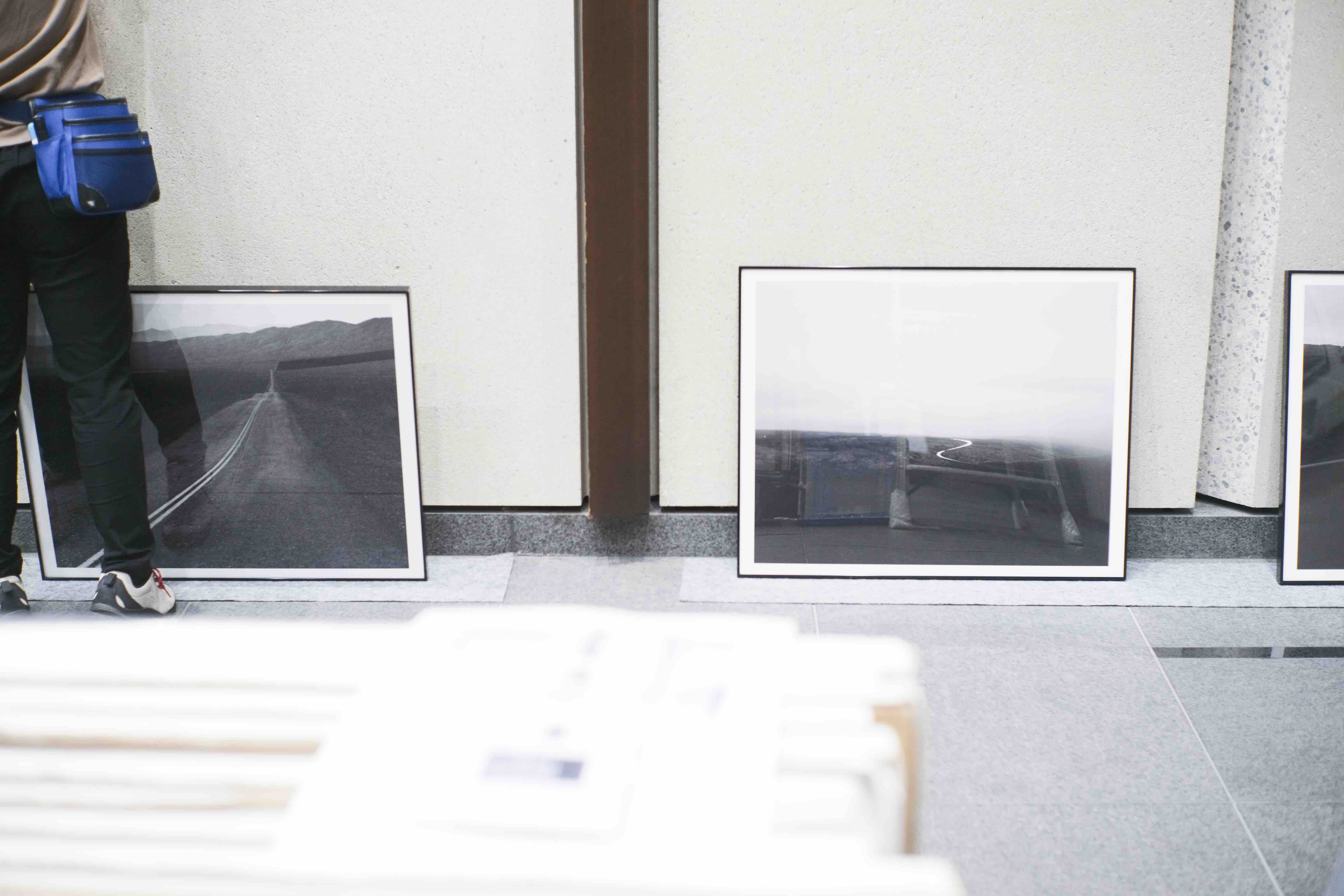
テラススクエア設営風景(2025 東京 TOKYO)。Photo:Takashi Kato。
ー 本、音楽、映画、風景、人、など、あなたにインスピレーションを与える個人的なものを教えてください。
Please tell me something personal that inspires you. ( Books, records, movies, landscapes, people, etc.)
私にインスピレーションを与えてくれる人々、場所、物には、次のようなものがあります。
作家:
フィリップ・レヴィーン(1928-2015、アメリカの詩人)、ウィラ・シベール・キャザー(1873-1947、アメリカの作家)
音楽:
ギリアン・ウェルチ&デイビッド・ローリングス(アメリカのシンガーソングライター)、ボブ・ディラン
映画:
『アンドレイ・ルブリョフ』(1966年、アンドレイ・タルコフスキー監督)、『天国の日々』(1978年、テレンス・マリック監督)
土地:
北アメリカの大平原、アイスランド、パタゴニア
人々:
すべての友人と家族です。
Some people, places and things that inspire me include:
Writers:
Philip Levine, Willa Cather
Musics:
Gillian Welch and Dave Rawlings, Bob Dylan
Movies:
Andrei Rublev, Days of Heaven,Land:
The Great Plains of North America, Iceland, Patagonia
People:
All of my friends and family.
ー 日本にも文化的な遺産がありますが、あなたは日本と日本写真についてどのような印象をお持ちですか?あなたが日本の渡部雄吉の”A Criminal Investigation”(日本タイトル「張り込み日記」)をお好きだと聞きました。私は彼の家族からこの本に使われたオリジナルプリントの一部を見せてもらったことがあります。あなたが知っている日本の写真家と本がありましたら教えてください。
Japan also has a cultural heritage, but what is your impression of Japan and Japanese photography? ( I heard that you like “A Criminal Investigation” by Youichi Watanabe in Japan. I had his bereaved family show me the original print used in this book! Please let me know if there are any Japanese photographers and books you know)
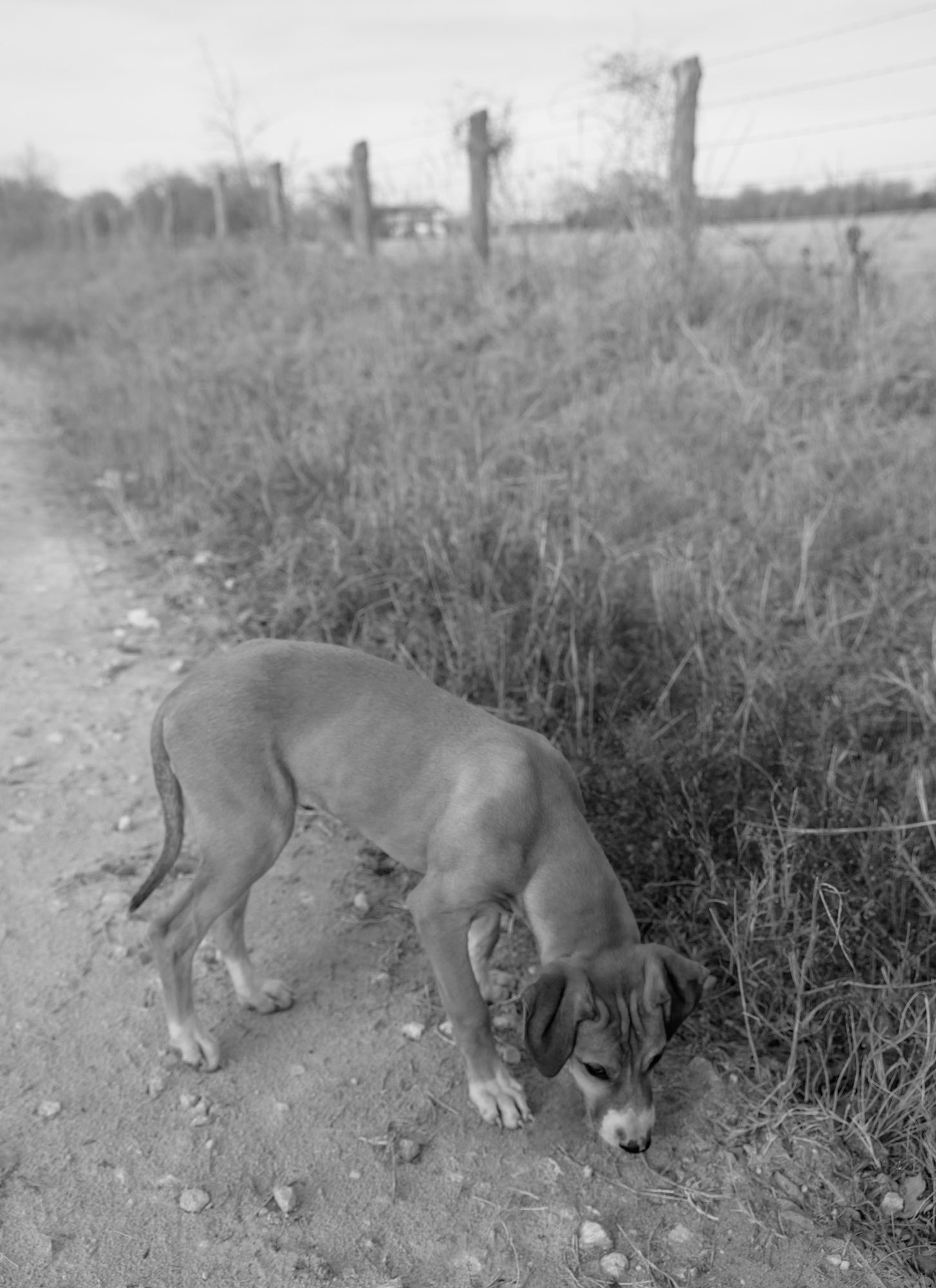
「COUNTY ROAD」2023
日本の写真は素晴らしいですね。壮大な歴史と現代のシーンがあり、大胆で心理的に複雑で力強い作品が溢れています。『A Criminal Investigation』は間違いなく私のお気に入りの一つです。
Japanese photography is amazing. You have such an immense history and contemporary scene filled with work that’s bold, psychological complex and very powerful. A Criminal Investigation is absolutely one of my favorites.
ー 渡部雄吉の「張り込み日記」はみんな大好きです。あなたは現在世界中で大きな影響を及ぶすアーティストの一人です。今後どのような活動をしていきたいと希望していますか?
You are an artist who has a great influence around the world right now. What kind of activities do you hope to do in the future? Contemporary artist? University professor? Historian?
写真をつくり続けます。ほとんどの日は、犬と一緒に森を散歩しながら過ごしたいと思っています。
写真撮影に加えて、キュレーション活動ももっとしていきたいと思っています。今年2025年には、ブエノスアイレスとオースティンで2つの大きな展覧会を共同キュレーションしました。もっと活動を広げ、写真家の活躍を支援していきたいと思っています。
I will keep on making photos. Most days I just want to spend time walking in the woods with dogs. In addition to photography, I want to do more curating. This year in 2025, I’ve co-curated two large exhibitions in Buenos Aires and Austin. I’d like to do more of this and help photographers be seen.
ー 素晴らしい人生ですね。最後に、あなたの本を手にしたいと願っている人を私は何人も知っています。日本にいるあなたのファンにメッセージをお願いします。
It’s a wonderful life. Finally, I know many people who want to get their hands on your book. Please send a message to your fans in Japan. Please send a message to your fans in Japan.
私の活動に興味を持っていただき、本当にありがとうございます!
Thanks so much for your interest in what I do!
ー Thank you very much. Thank you from the bottom of my heart.
Bryan Schutmaat(ブライアン・シュットゥマート)
写真家。1983年生まれ。アメリカ・テキサス州オースティンを拠点に活動する。生まれ育った、アメリカの南西部テキサスを舞台に、19世紀から続くアメリカ西部開拓の歴史を想起させる広大な風景の中、撮影される写真が国際的に高く評価されている。出版に「Grays The Mountain Sends」(Silas Finch Foundation・2013年)、「Islands Of The Blest 」(編纂・Silas Finch・2014年)、『GOOD GODDAMN』(Trespasser・2017年)、『COUNTY ROAD』(Trespasser・2023年)、『TSONS OF THE LIVING』(Trespasser・2024年)がある。作品は「ボルチモア美術館」、「ボストン美術館」、「ピア24フォトグラフィー」、「アムステルダム国立美術館」、「サンフランシスコ近代美術館」などに収蔵。Kominek Gallery(ベルリン)、Marshall Gallery(ロサンゼルス)、Sasha Wolf(ニューヨーク)、Galerie Wouter van Leeuwen(アムステルダム)、PARIS PHOTOなどでも展示されている。「 John Simon Guggenheim Memorial Fellowship(ジョン・サイモン・グッゲンハイム記念フェローシップ)」、「Aperture Portfolio Prize(アパーチャー・ポートフォリオ)」、「Aaron Siskind Fellowship(アーロン・シスキンド・フェローシップ)」などの受賞歴がある。出版社「Trespasser」共同主宰。
https://www.bryanschutmaat.co
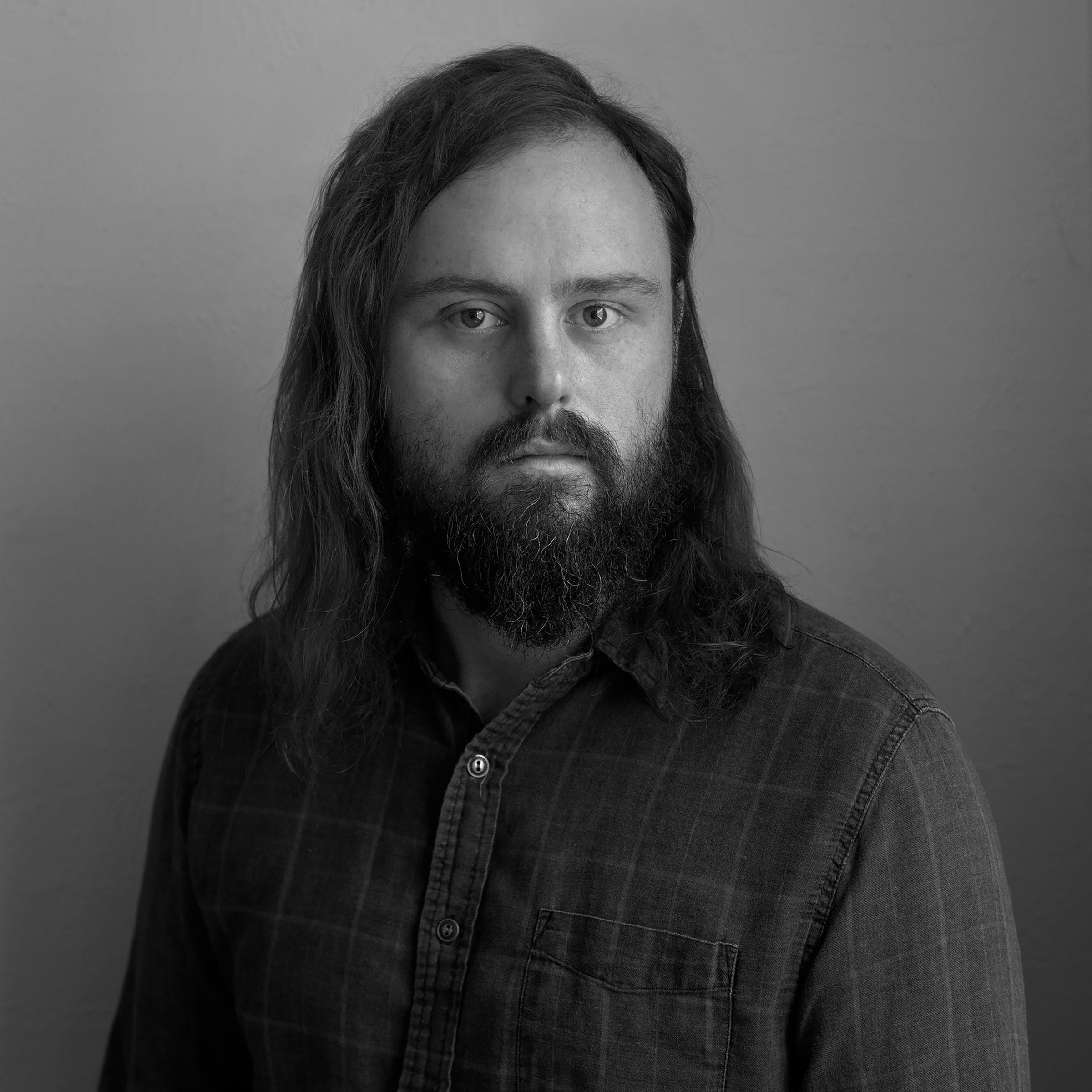
まとめ、インタビュー=加藤孝司 Takashi Kato
- テラススクエアフォトエキシビションVol.34「Bryan Schutmaat/SONS OF THE LIVING」
- 住所: 千代田区神田錦町3-22 テラススクエア 1F エントランスロビー
- 会期:2025年5月26日(月)ー2025年9月26日(金) / 8:00~20:00(最終日は19:00までとなります)
- 休館日: 土曜・日曜・祝日、入場無料
- 主催:テラススクエア | 協賛 住友商事 | 企画 加藤孝司、三浦哲生

- #88
- #Adam Ianniello
- #Agnieszka Sosnowska
- #ART
- #Bryan Schutmaat
- #Hiroshima
- #Interview
- #JENN KANG
- #Johanna Tagada Hoffbeck
- #JohannaTagadaHoffbeck
- #Kanadehamamoto
- #Kei Ono
- #Masahisa Fukase
- #Masato Ninomiya
- #Matthew Genitempo
- #Ohenro
- #review
- #Shota KONO
- #ShotaKONO
- #Takashi Kato
- #Thomas Boivin
- #Tokushima
- #TOP
- #アユニ・D
- #アート
- #インタビュー
- #ジョアンナ・タガダ・ホフベック
- #トマ・ボワヴァン
- #フォト
- #三部正博
- #井崎竜太朗
- #今井智己
- #内藤礼
- #写真
- #加藤孝司
- #堀 裕貴
- #小野啓
- #山口息吹
- #山本康平
- #岡崎果歩
- #建築
- #本多康司
- #根本絵梨子
- #池谷陸
- #池野詩織
- #渡邉りお
- #渡邊りお
- #渡部敏哉
- #温陽民族博物館
- #笠原颯太
- #編集長日記
- #諏訪万修
- #野口花梨
- #長田果純





